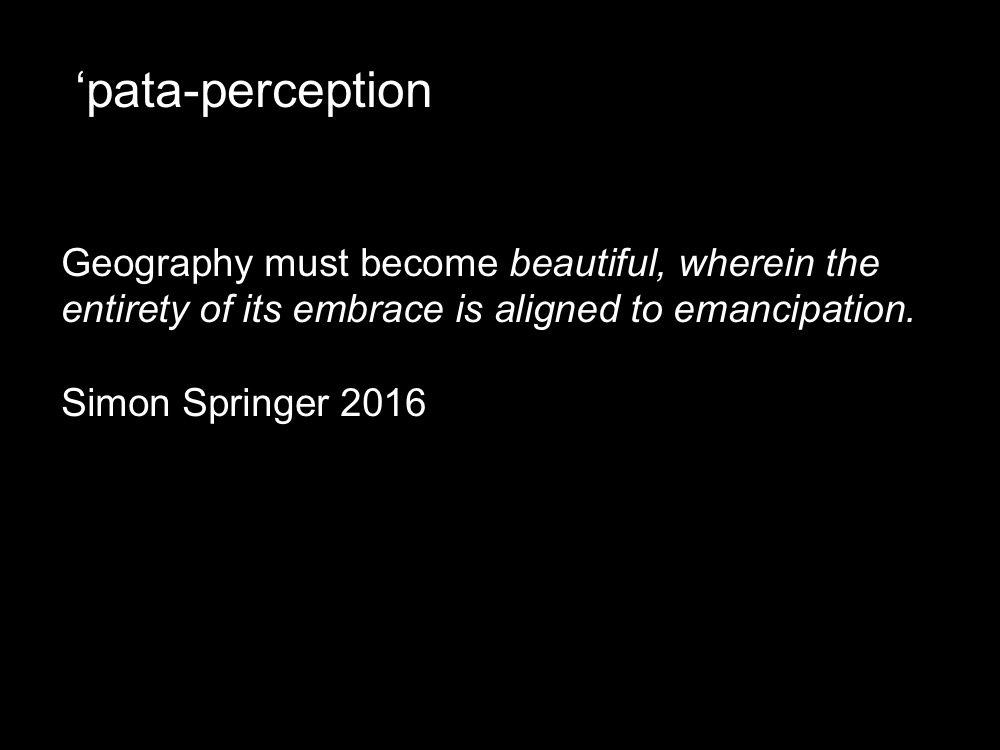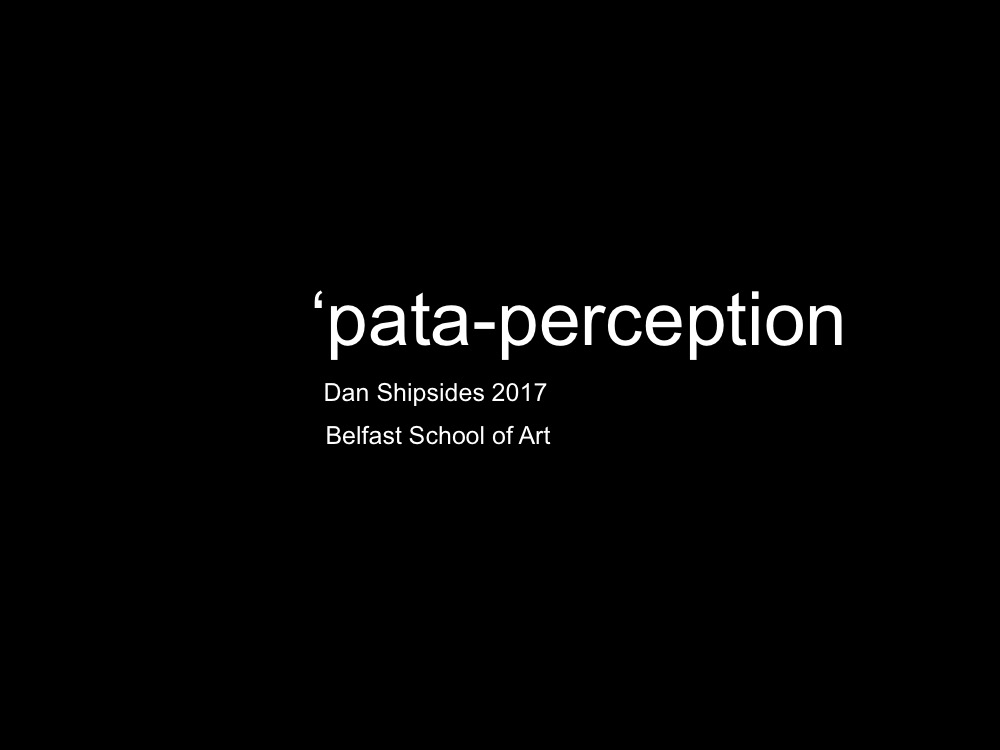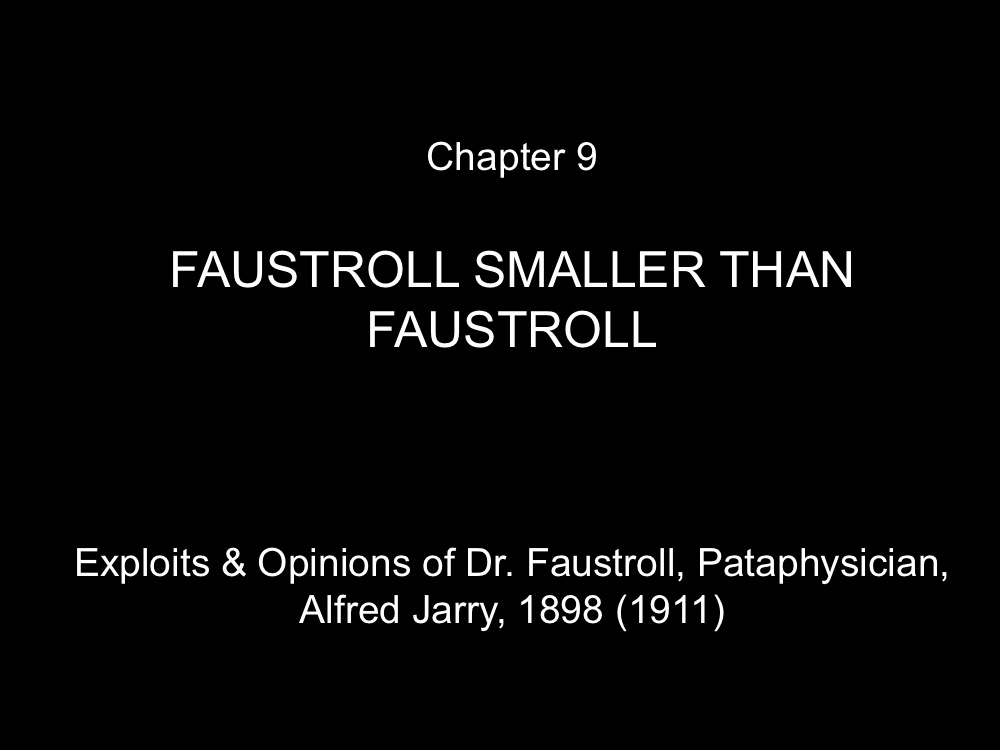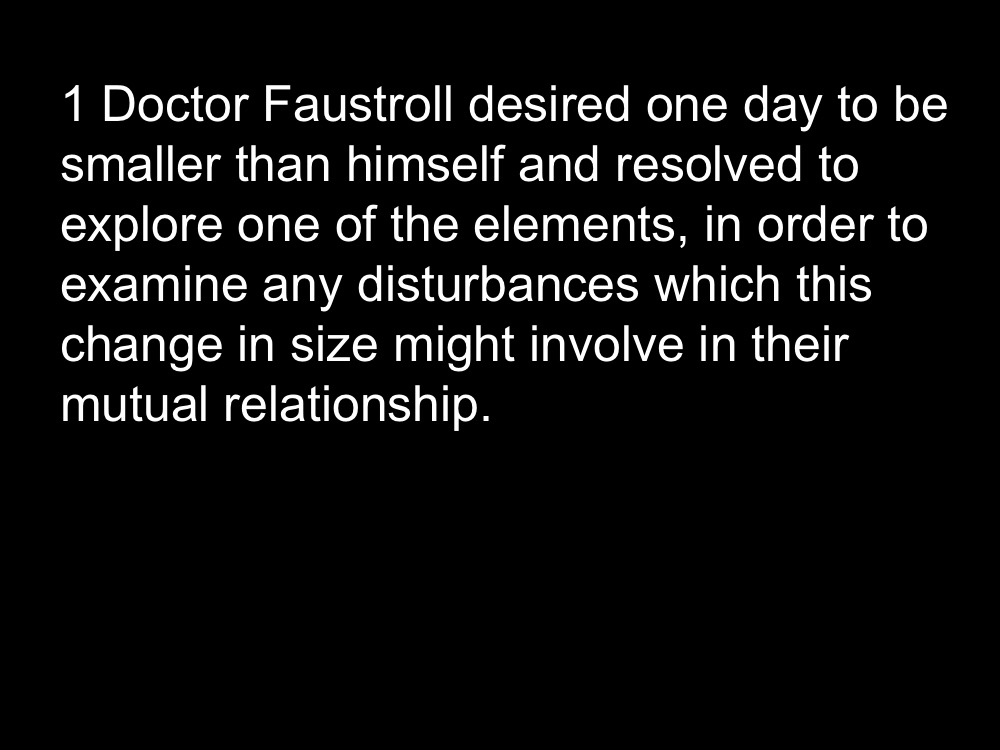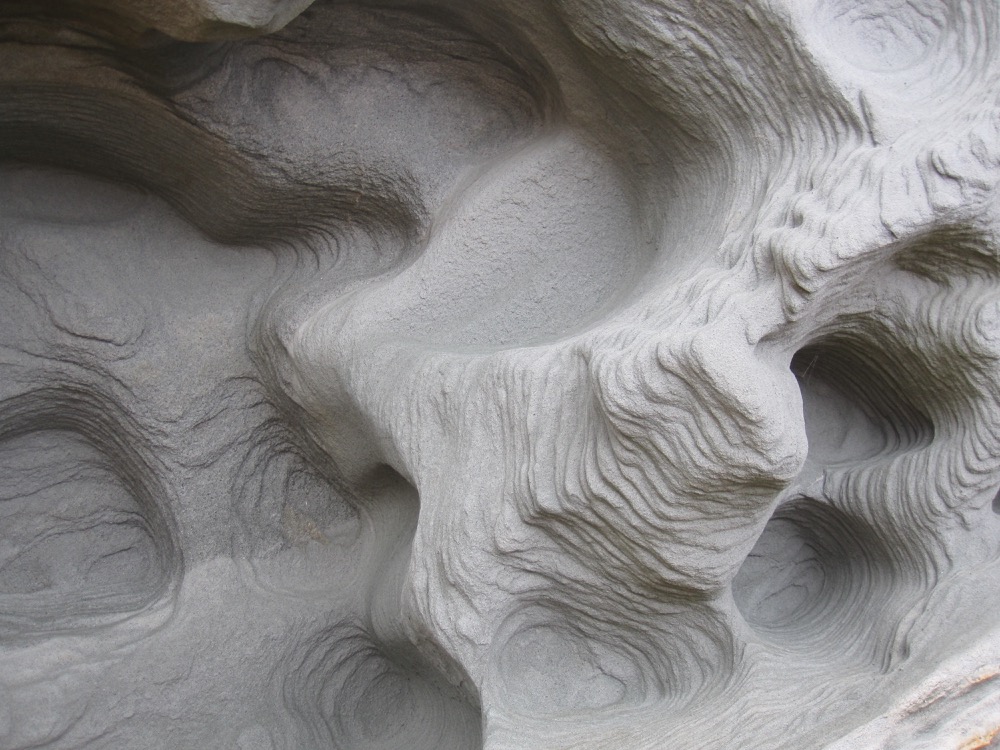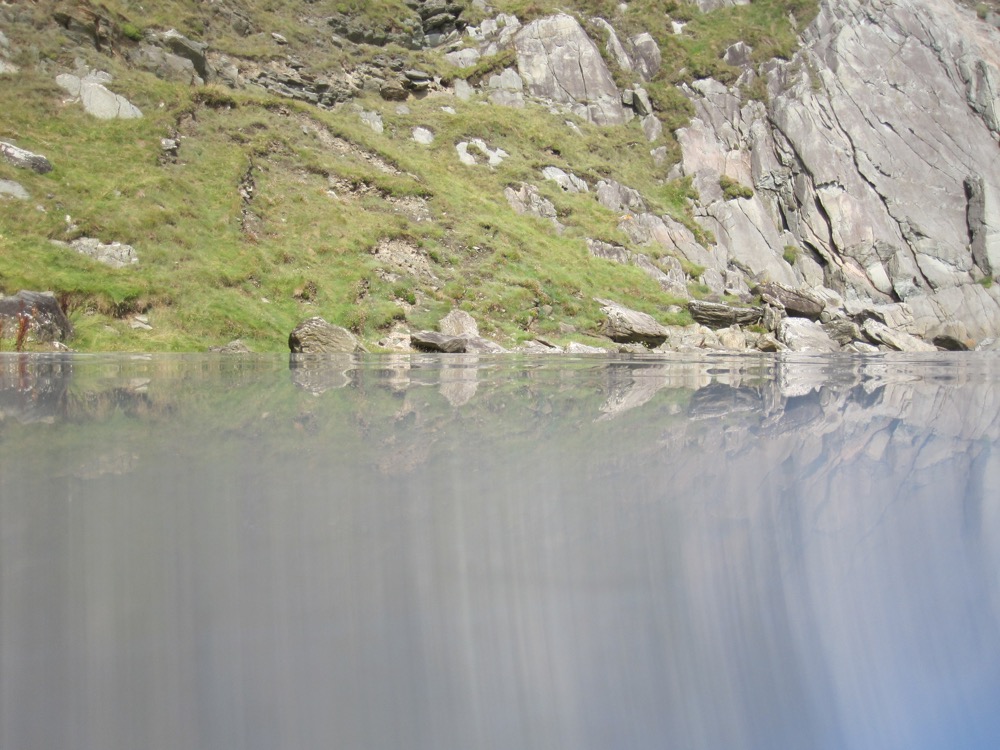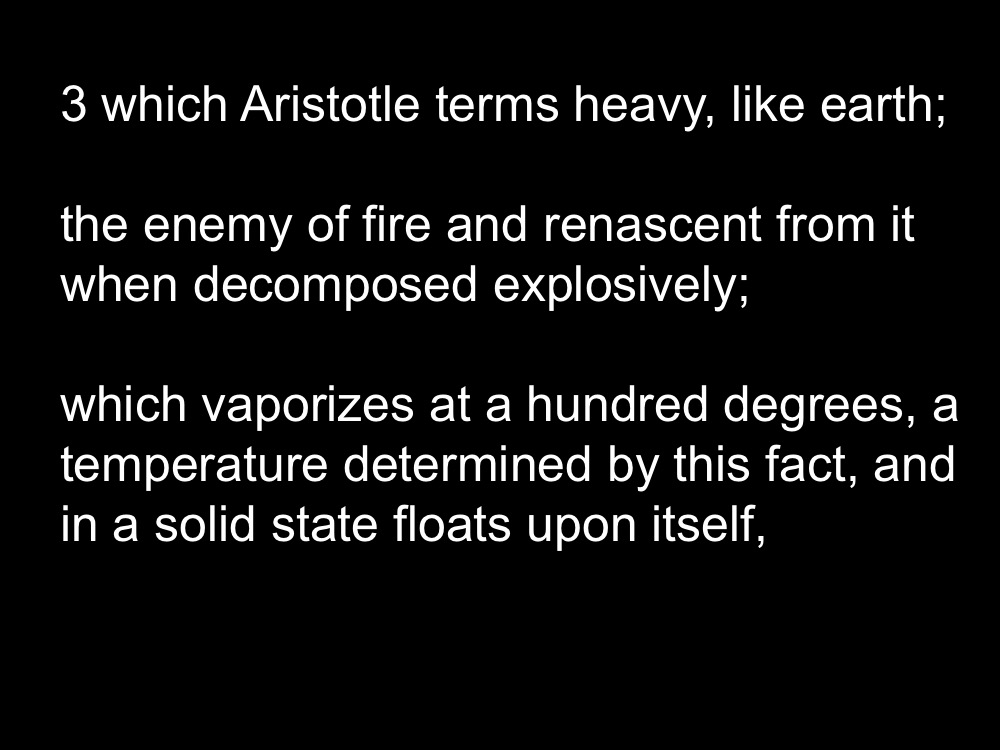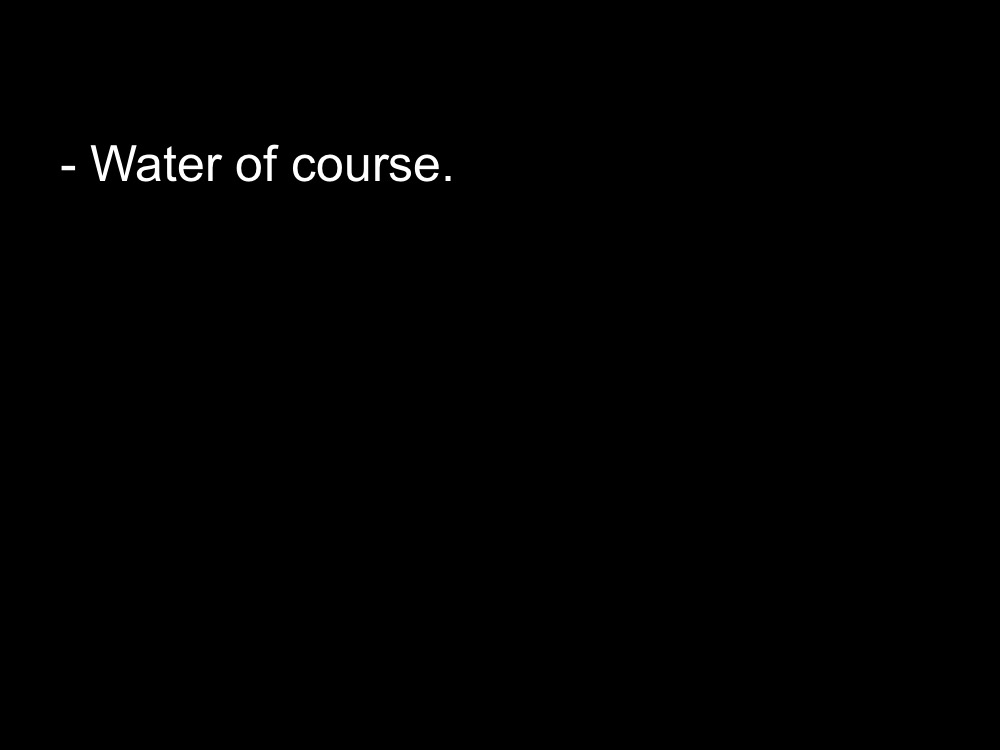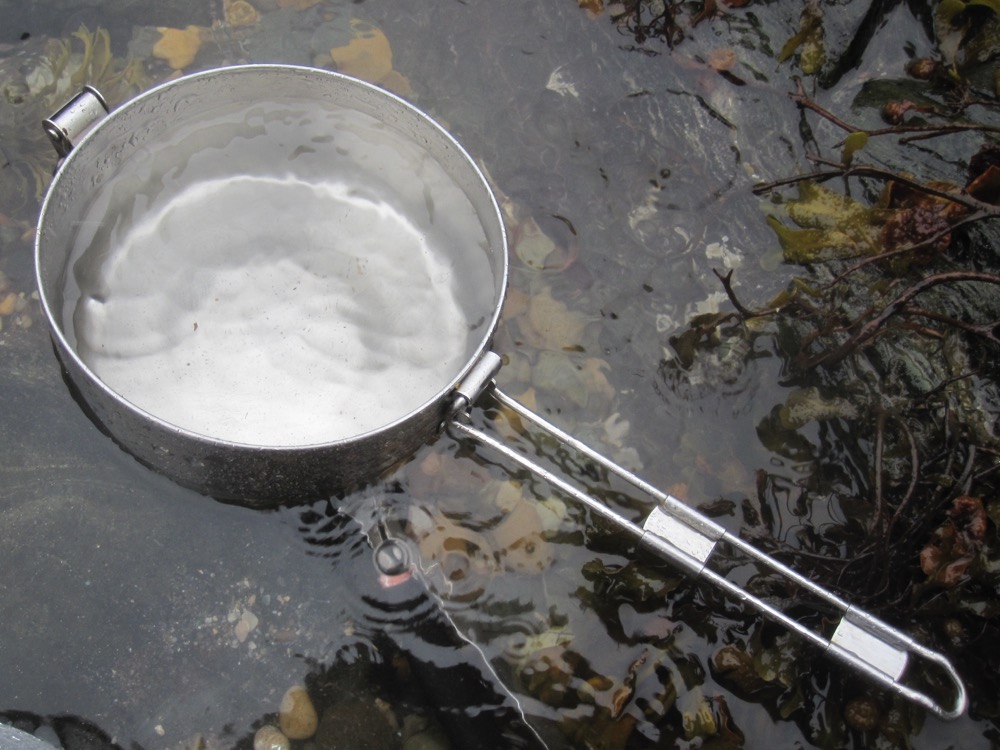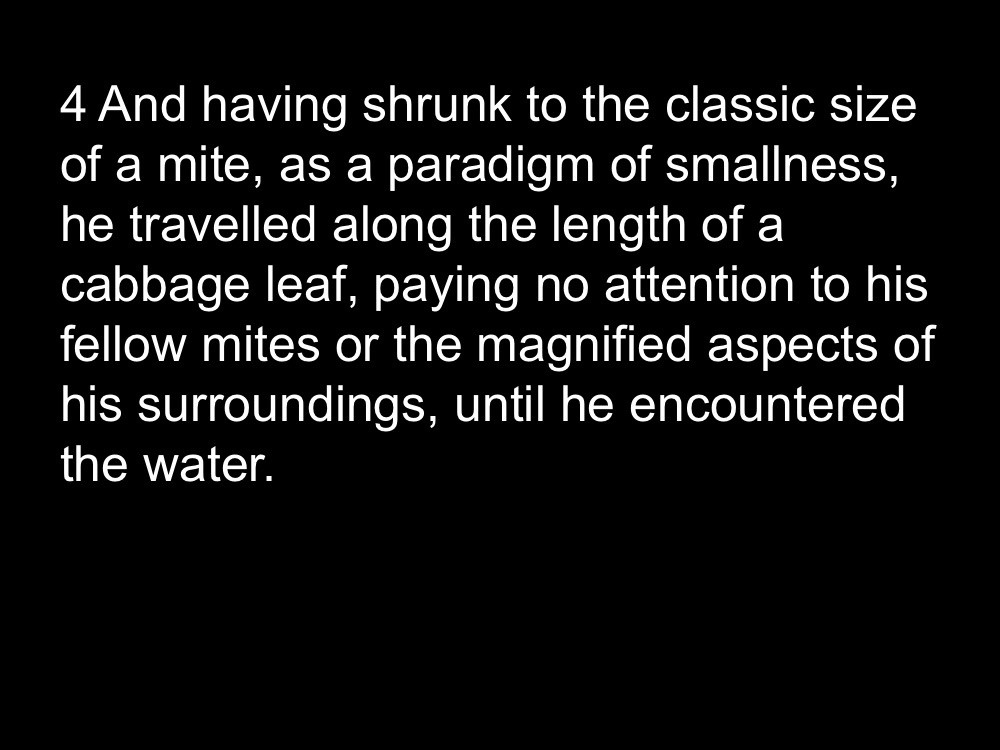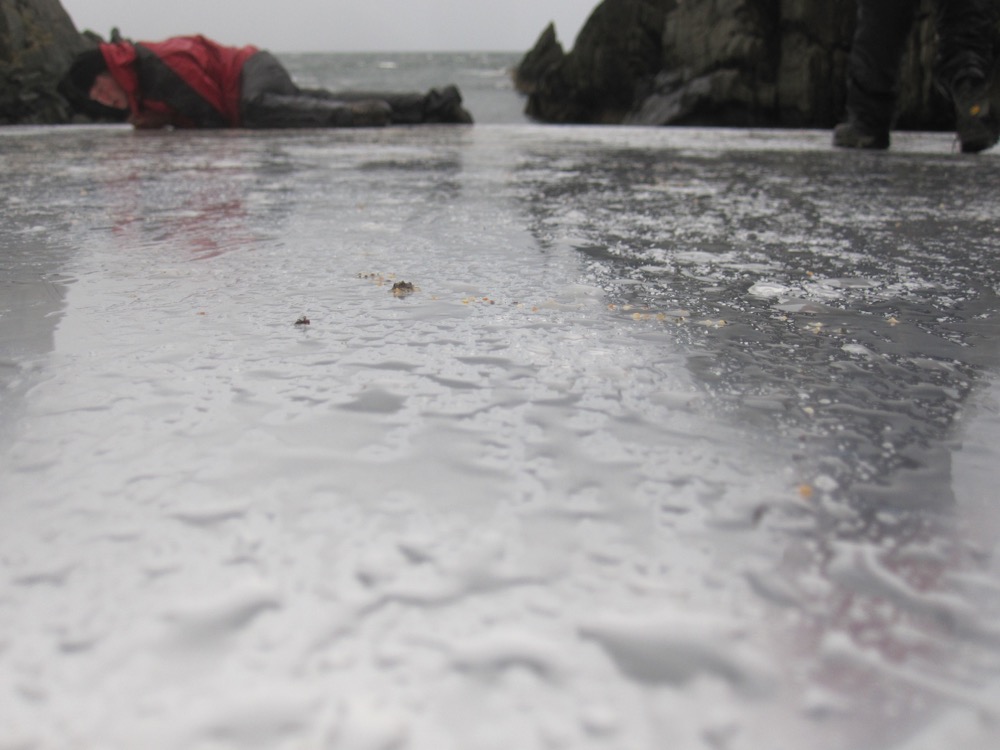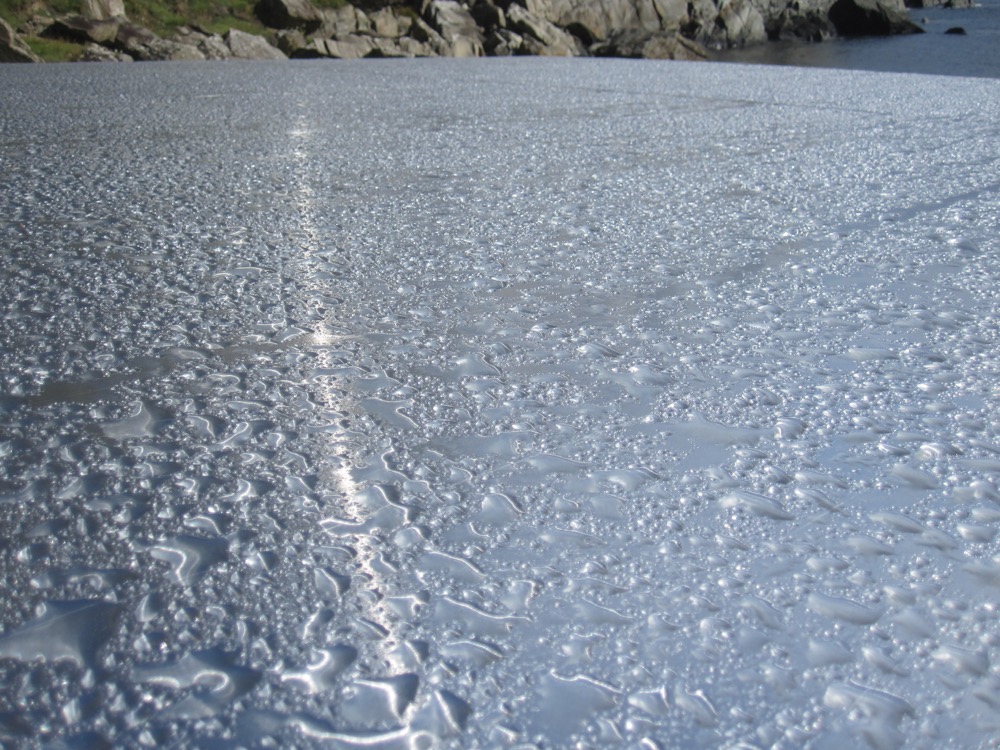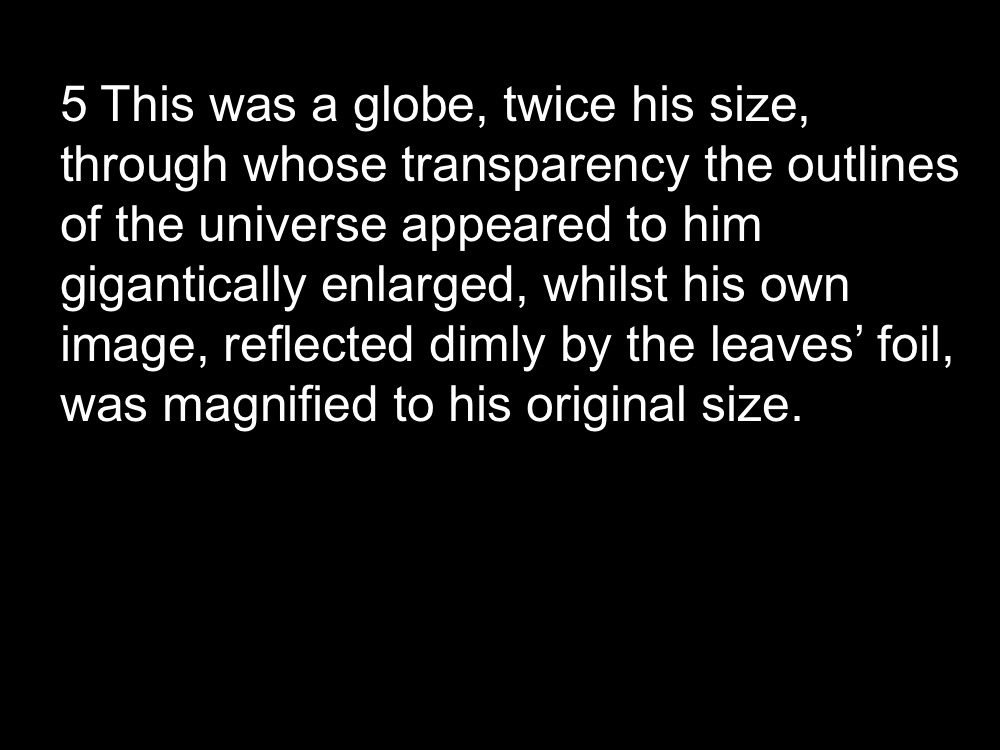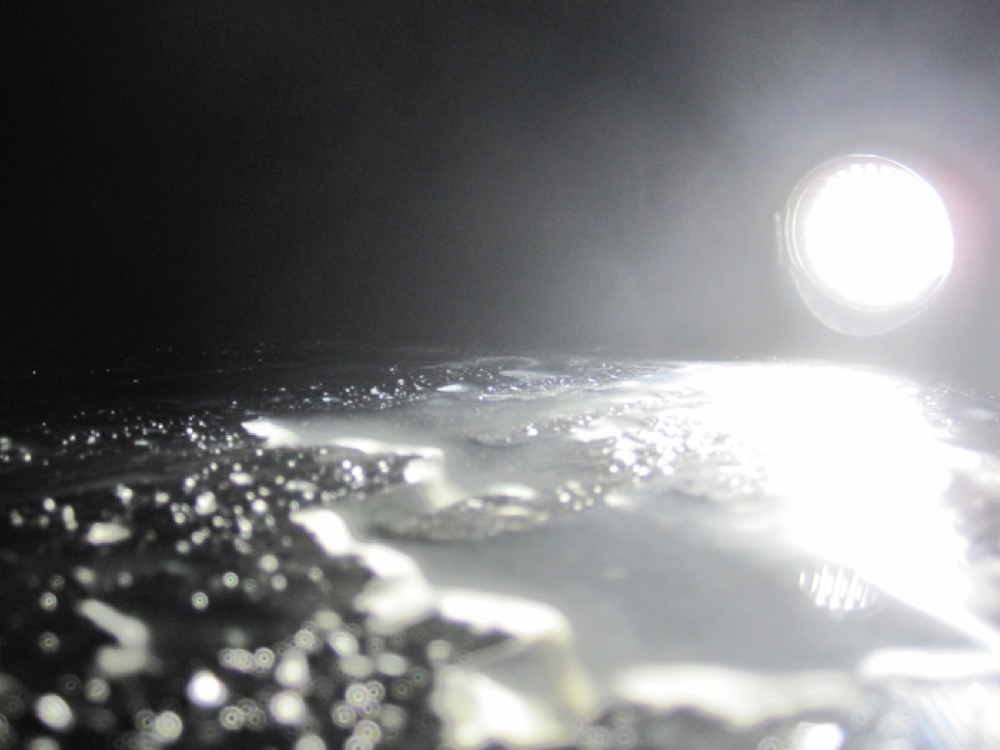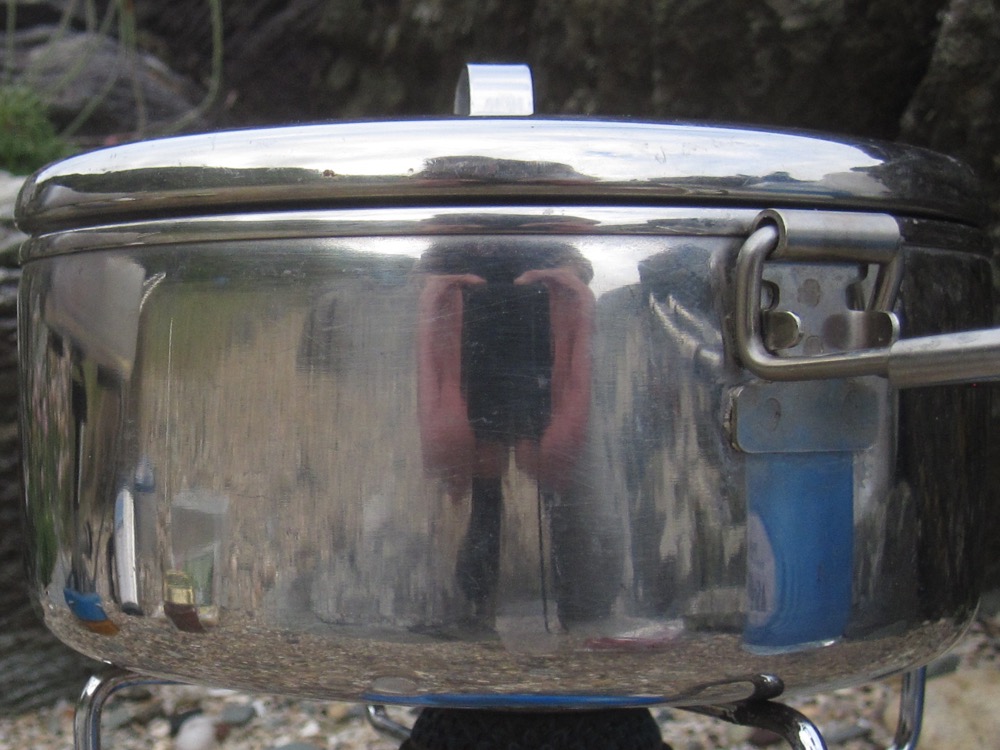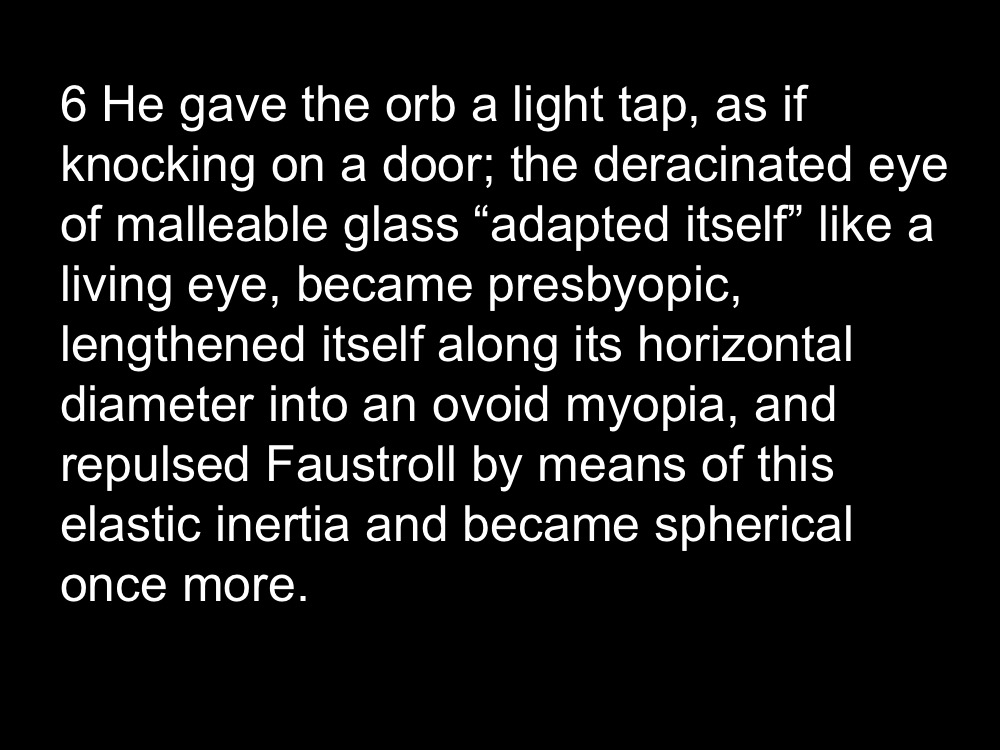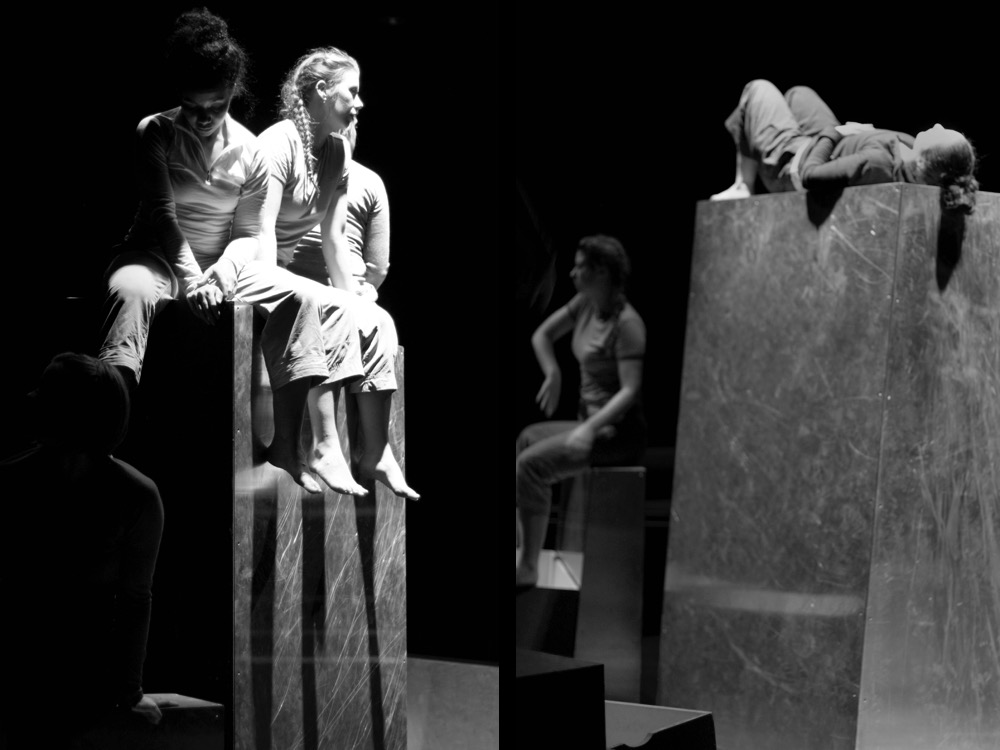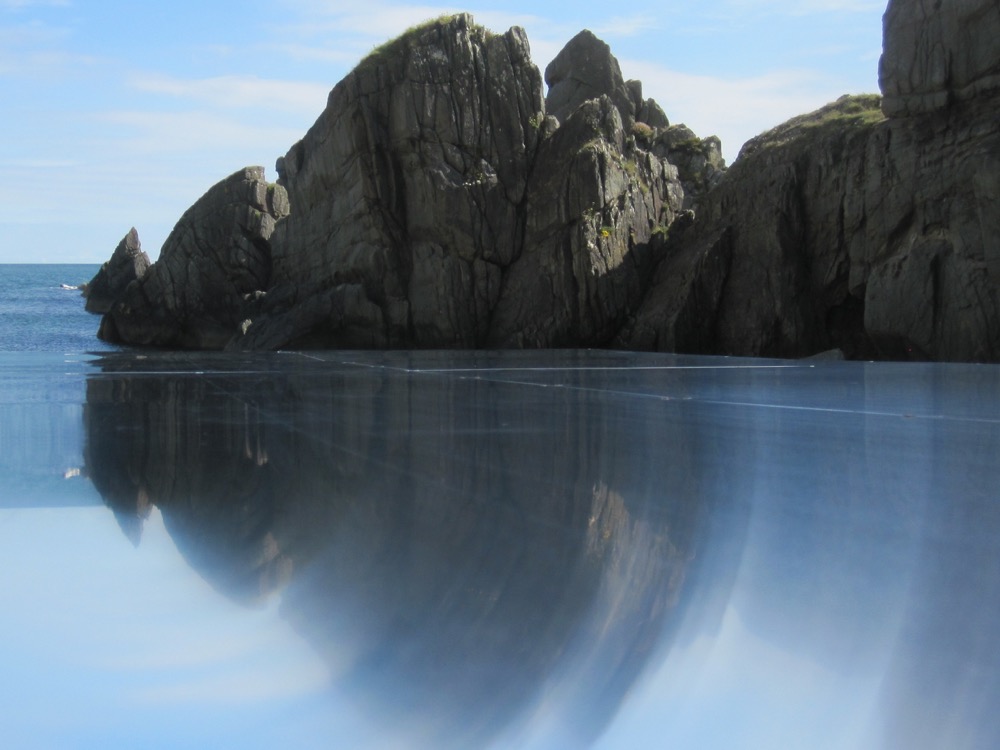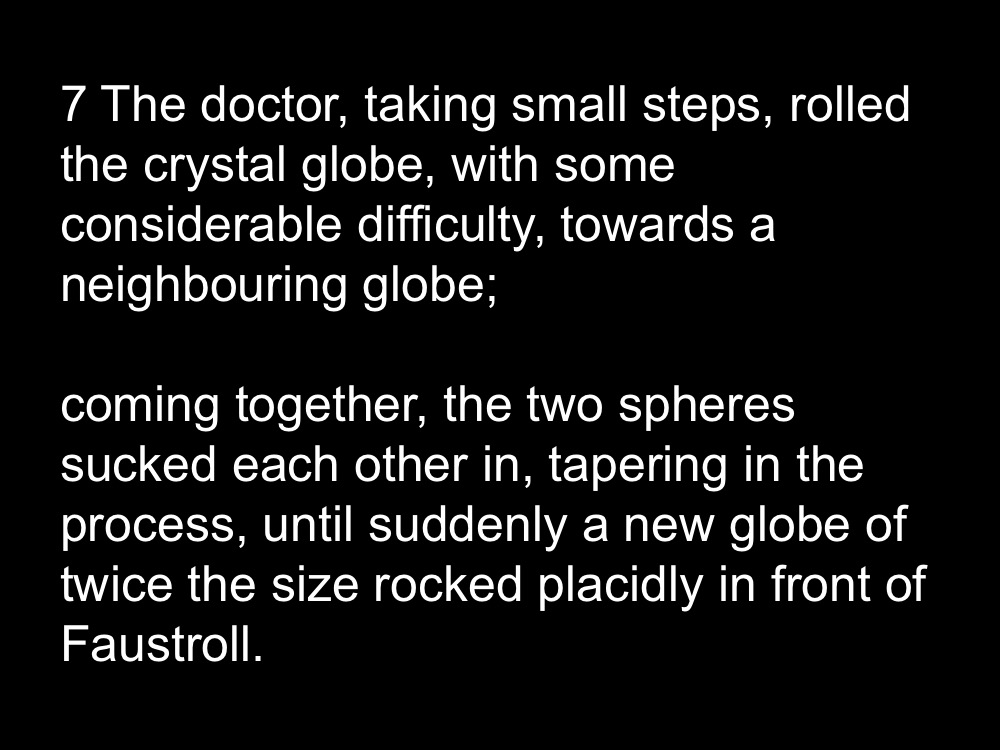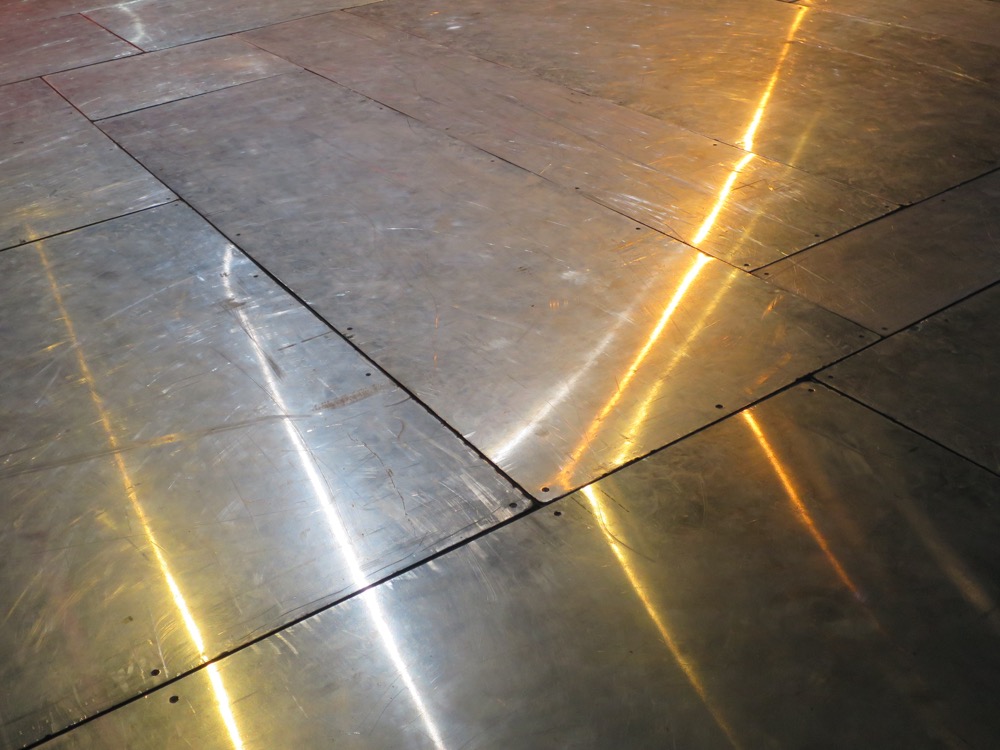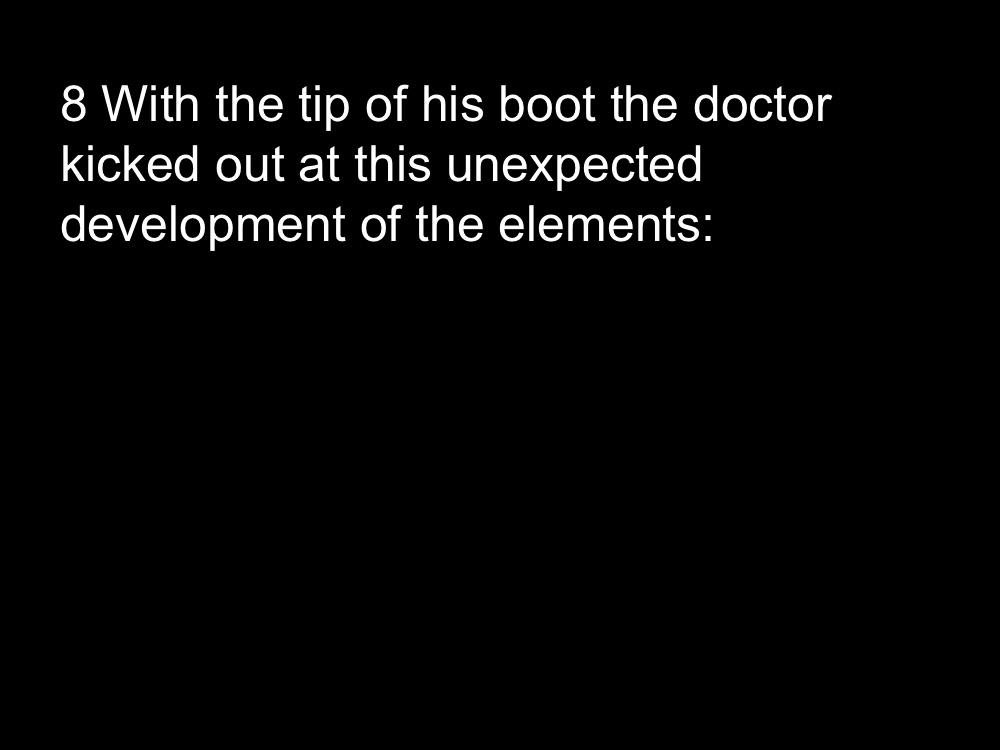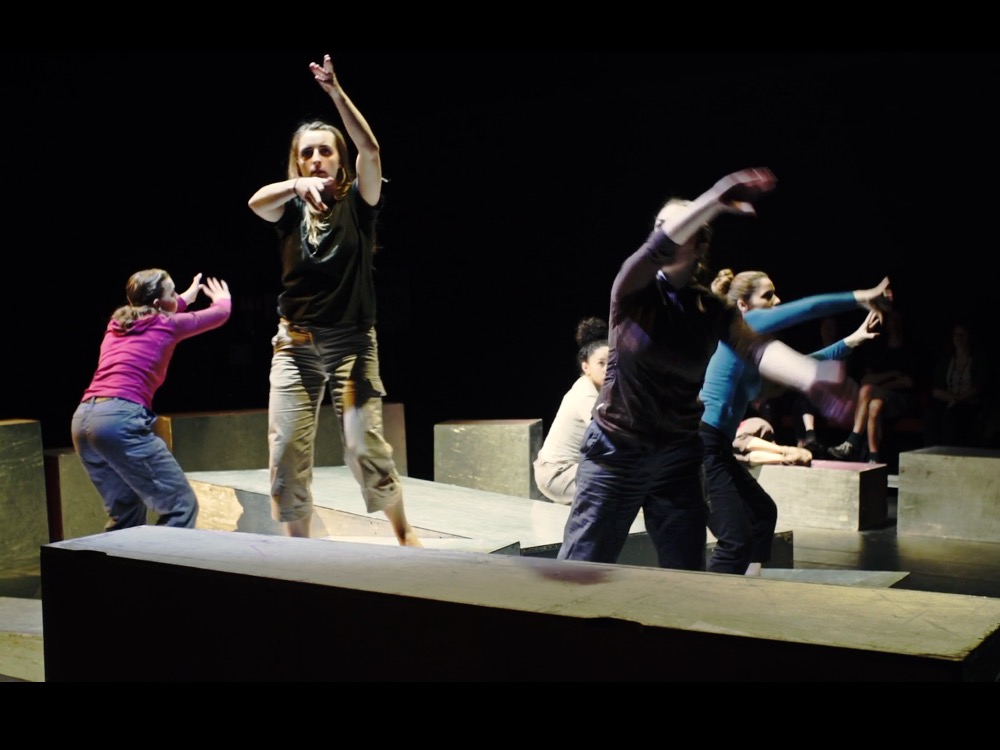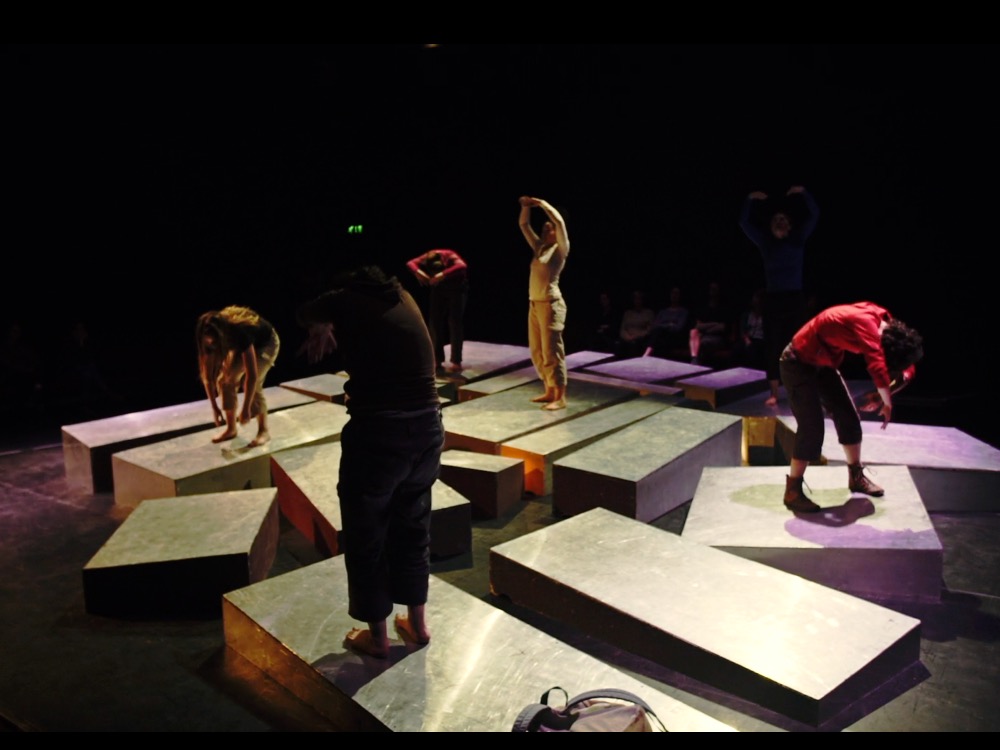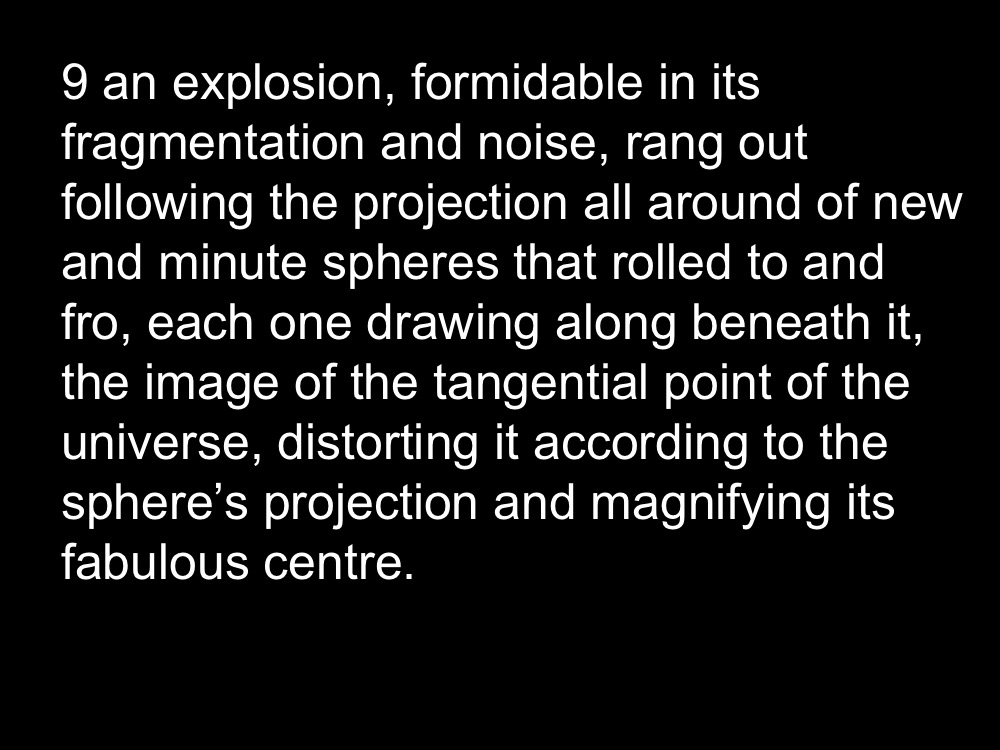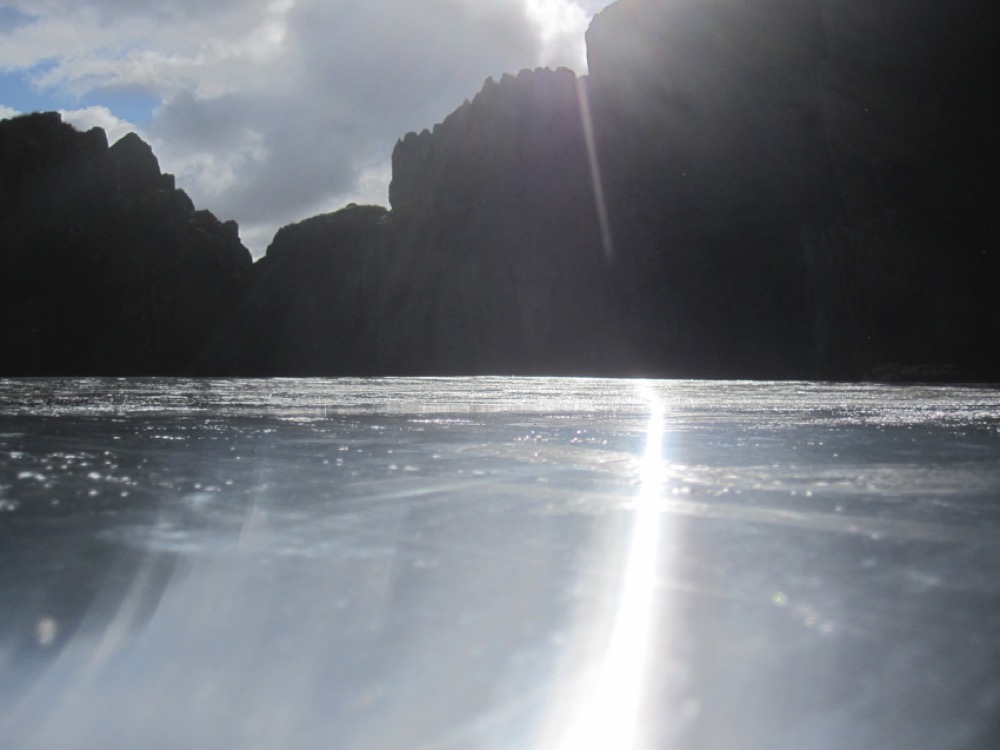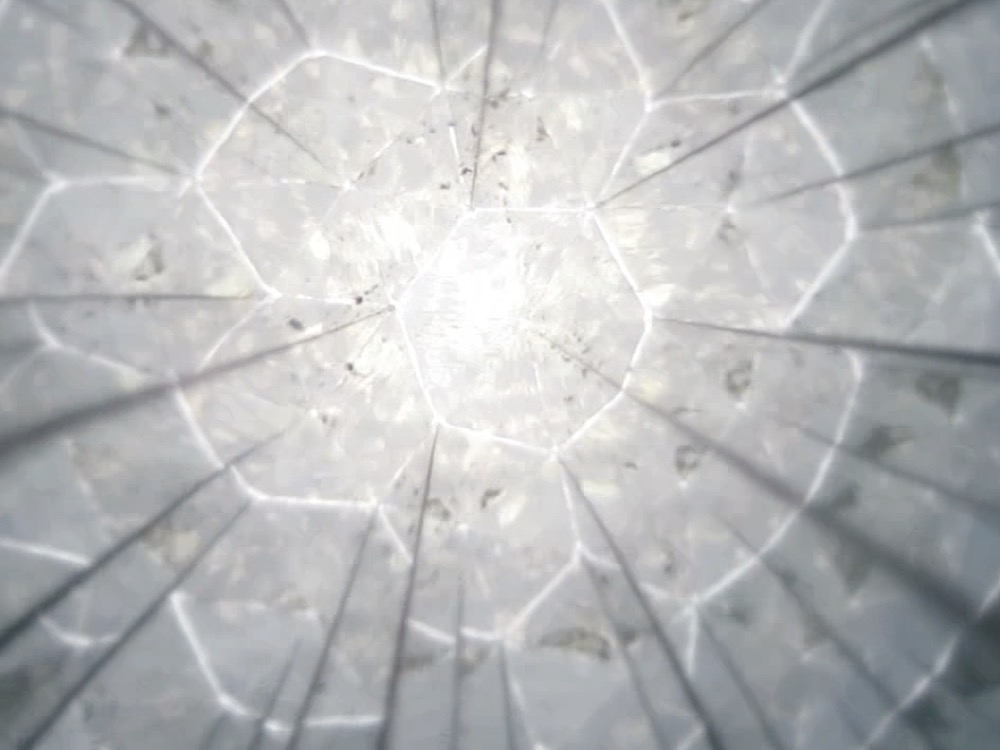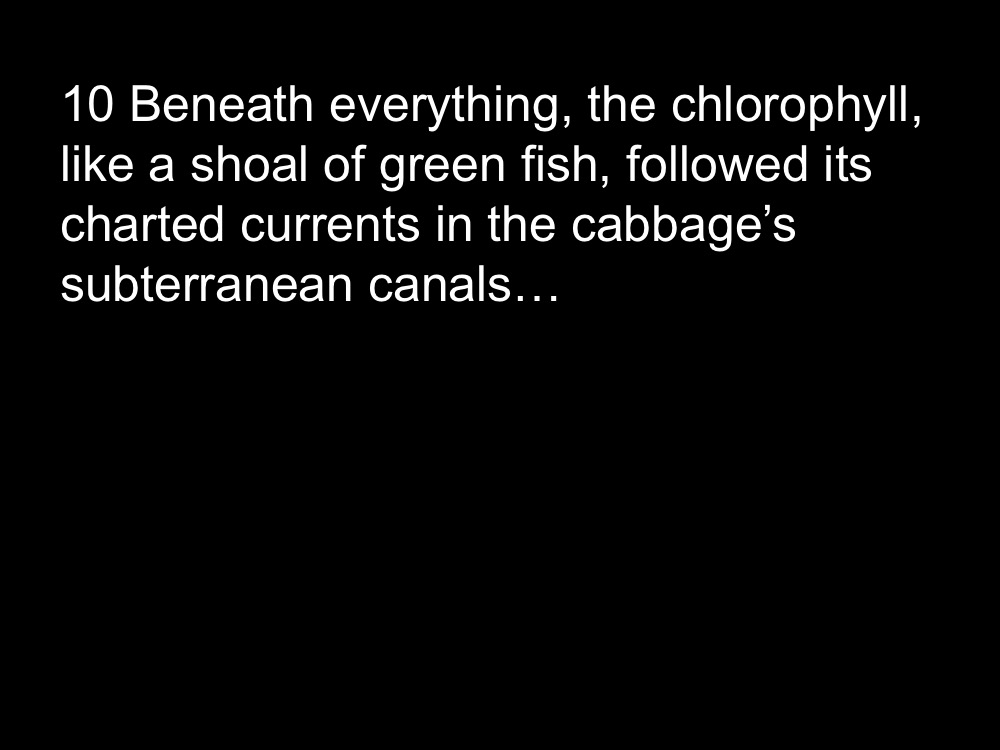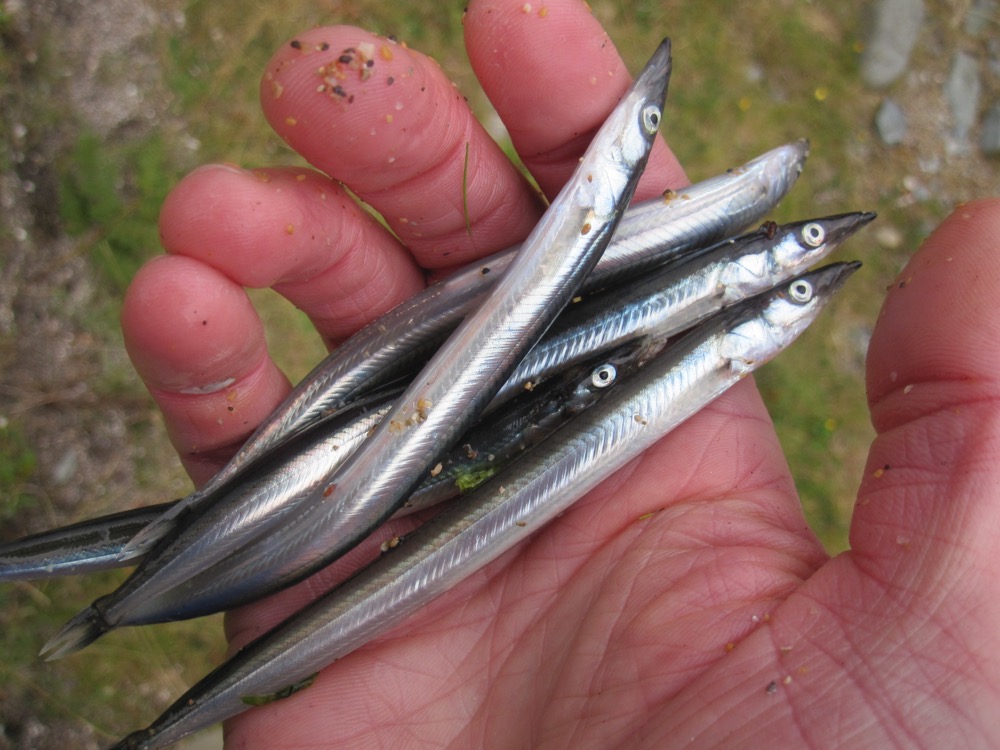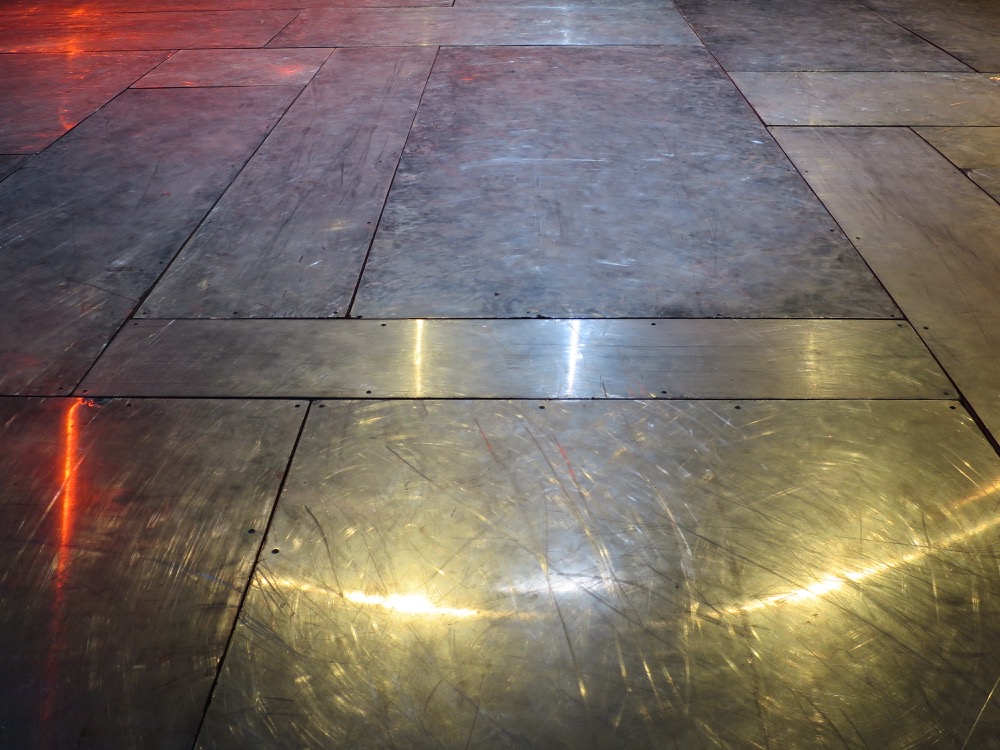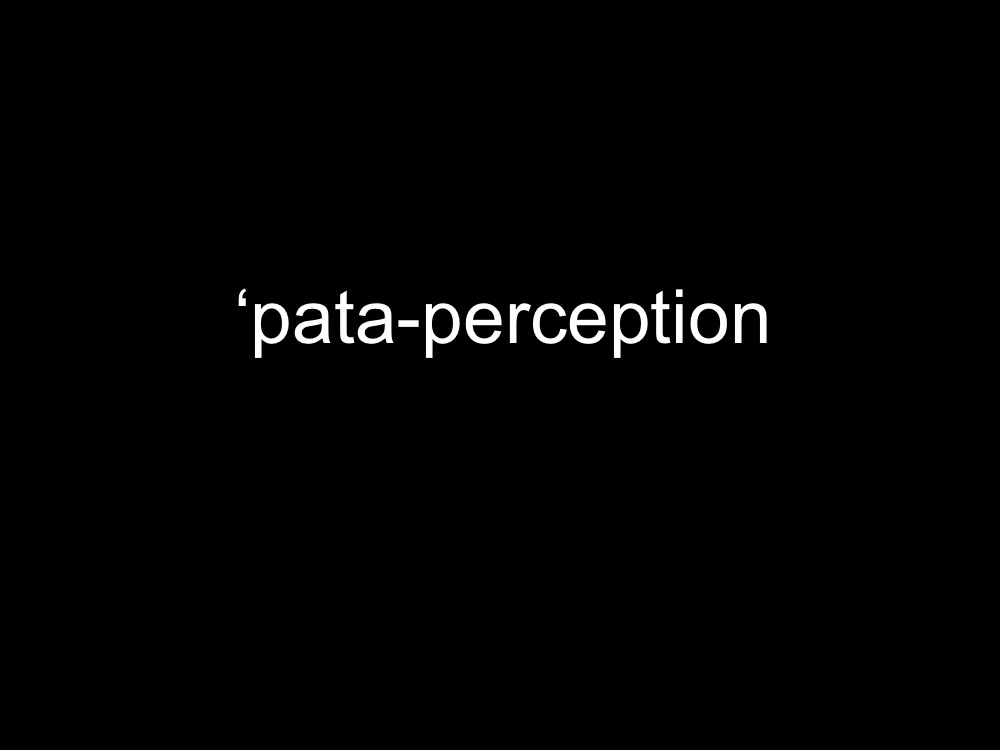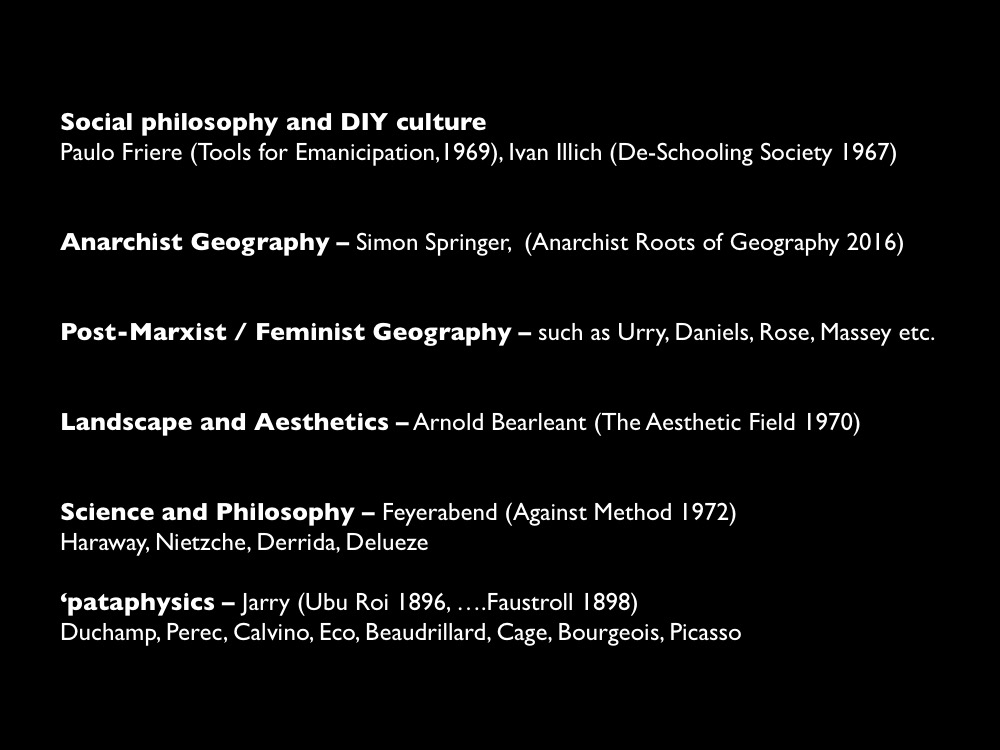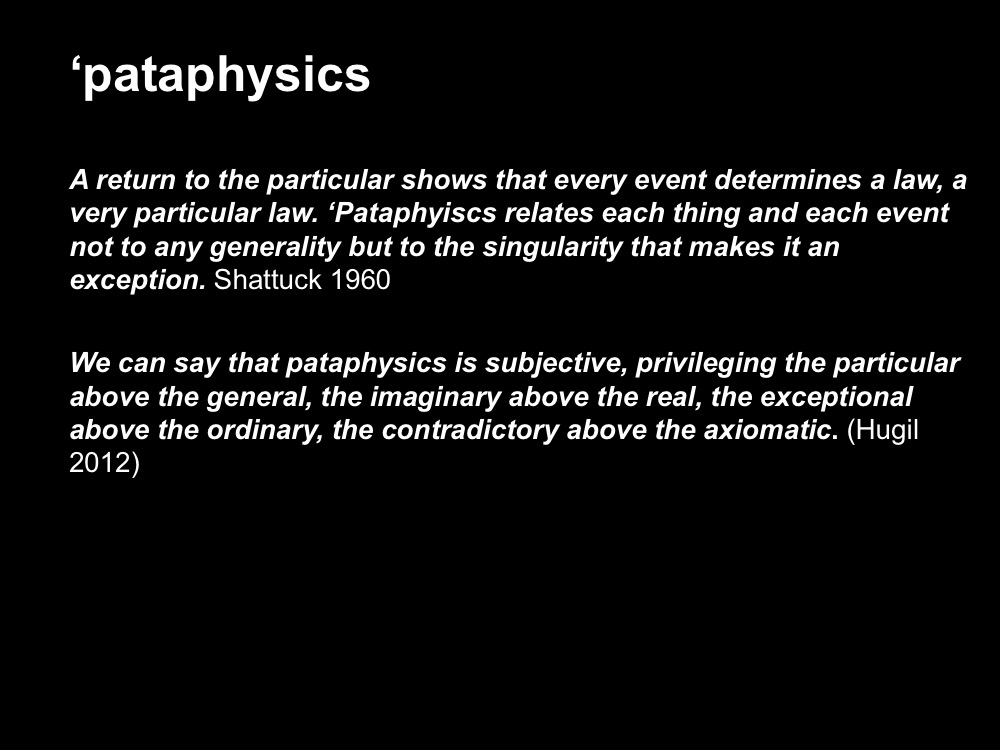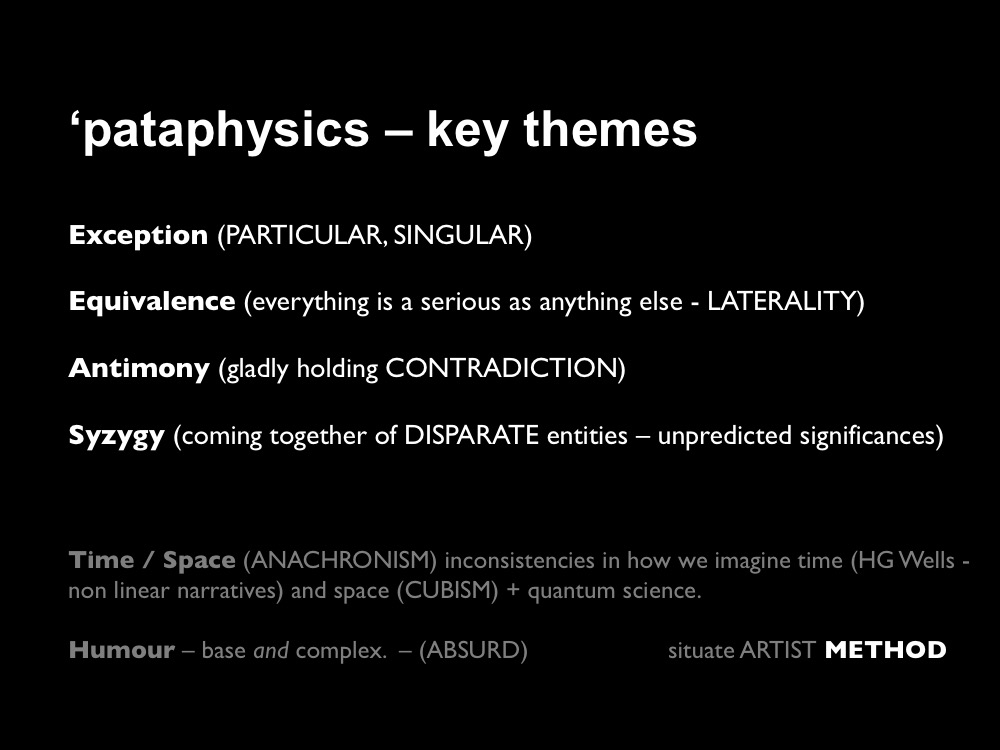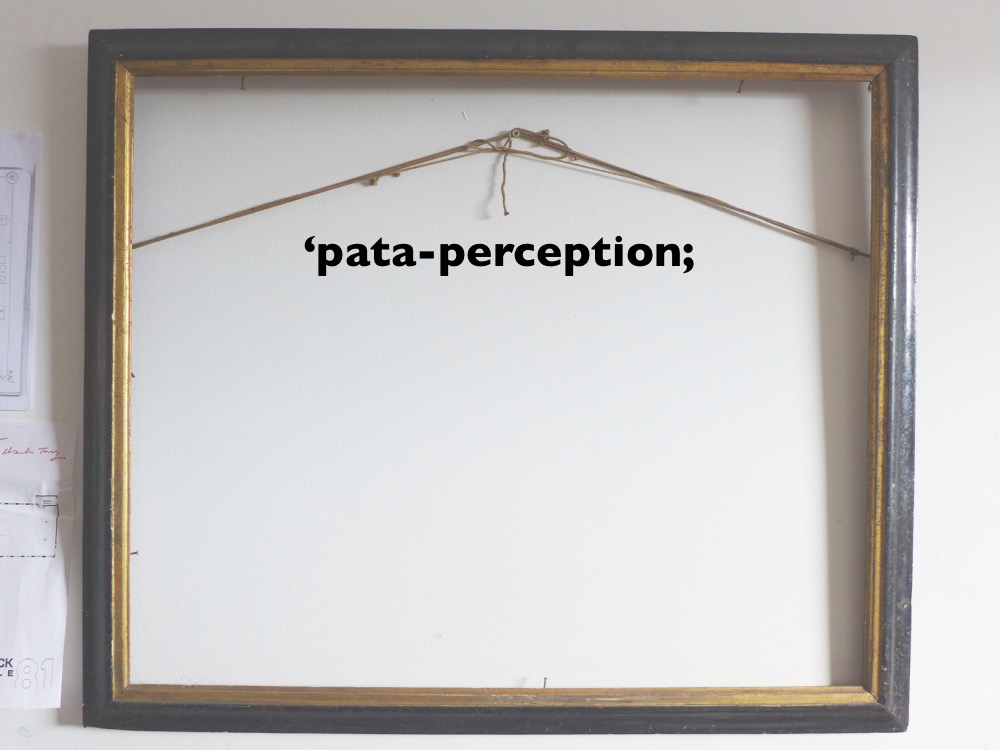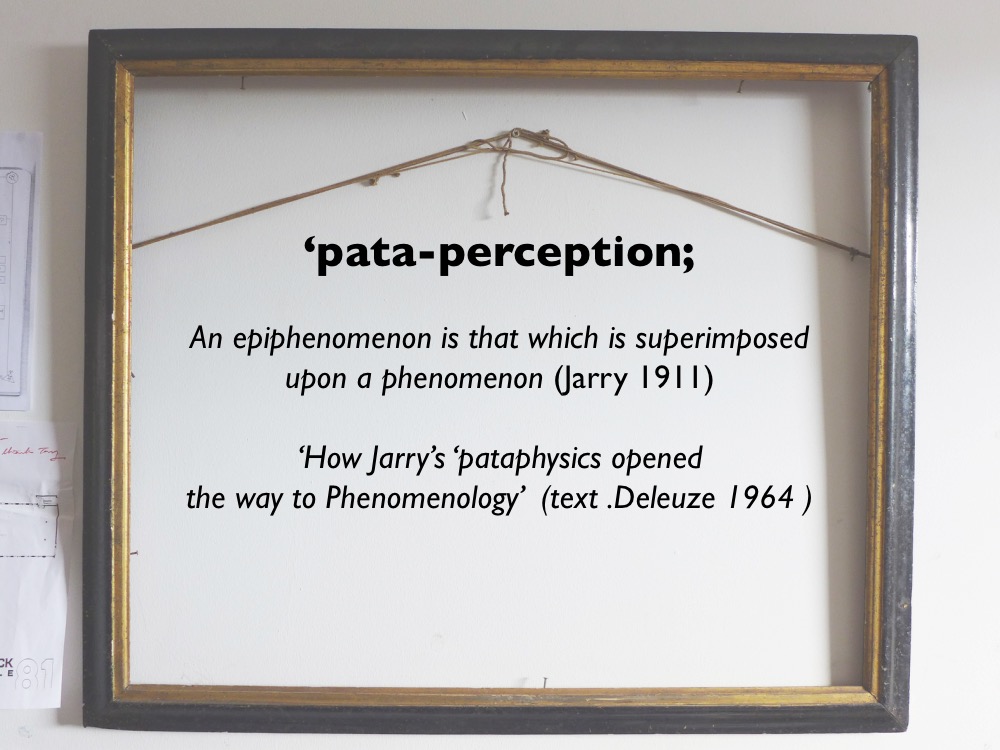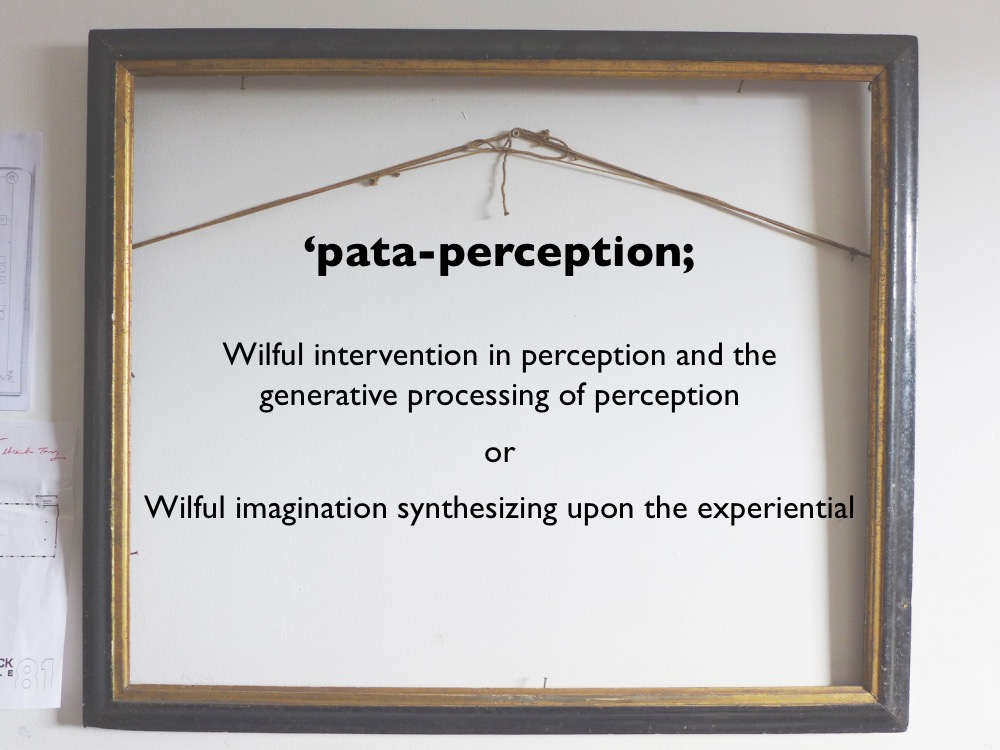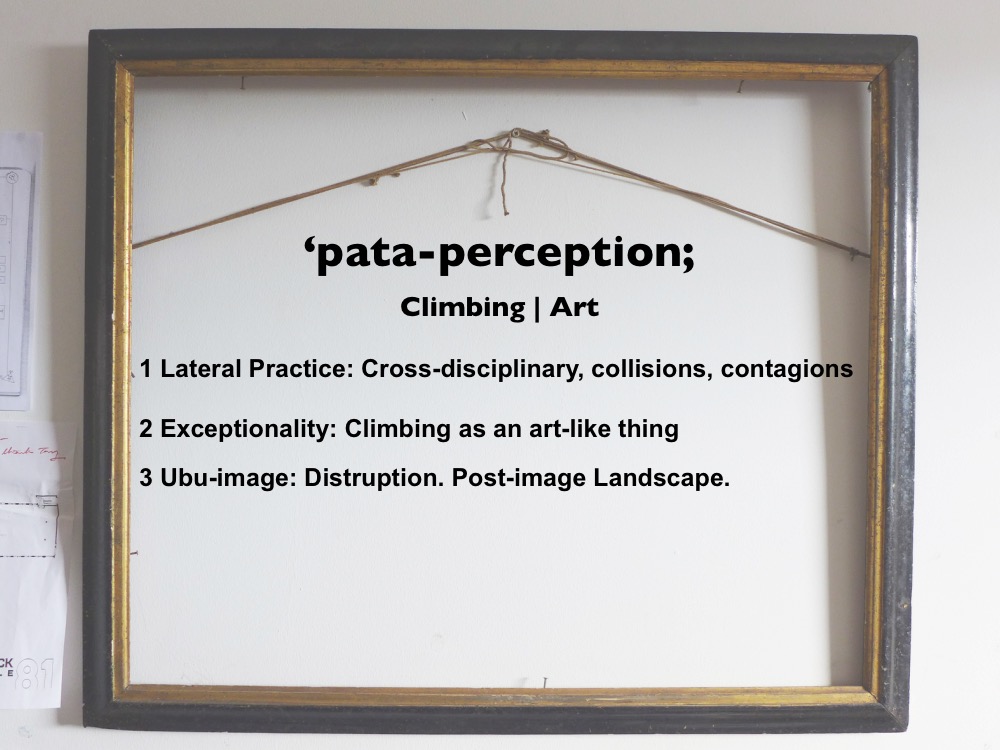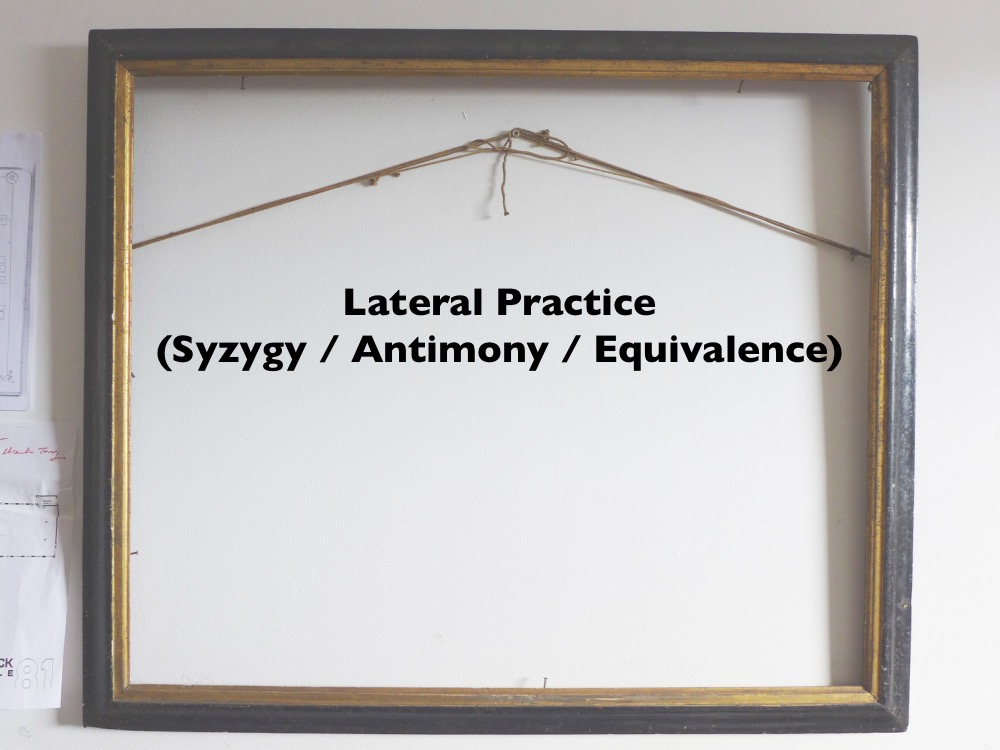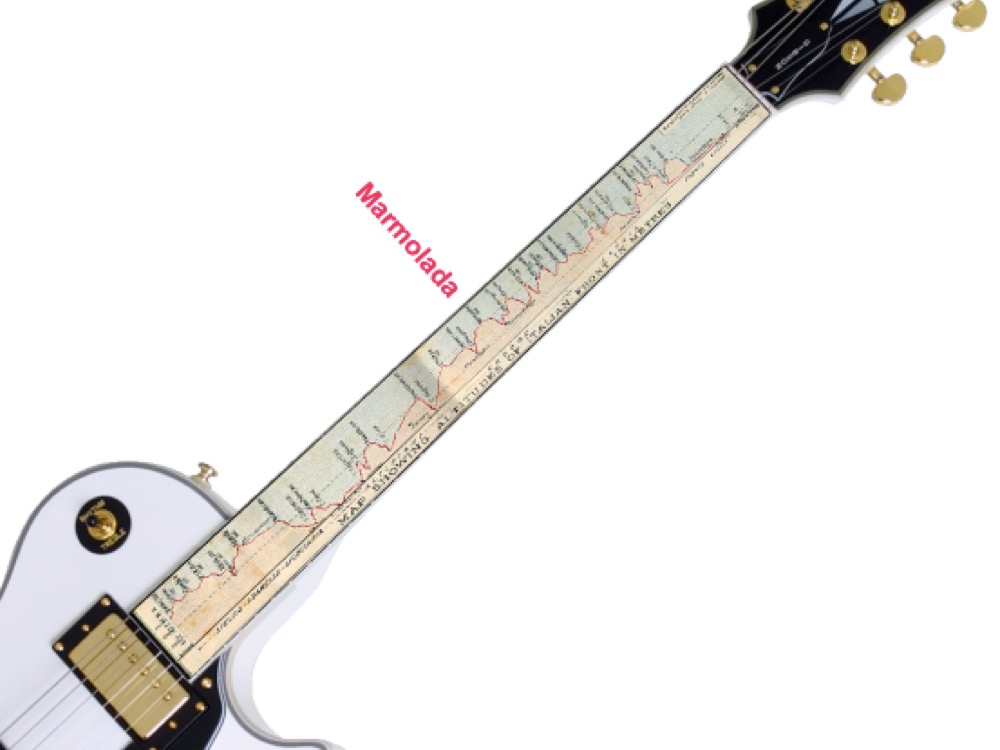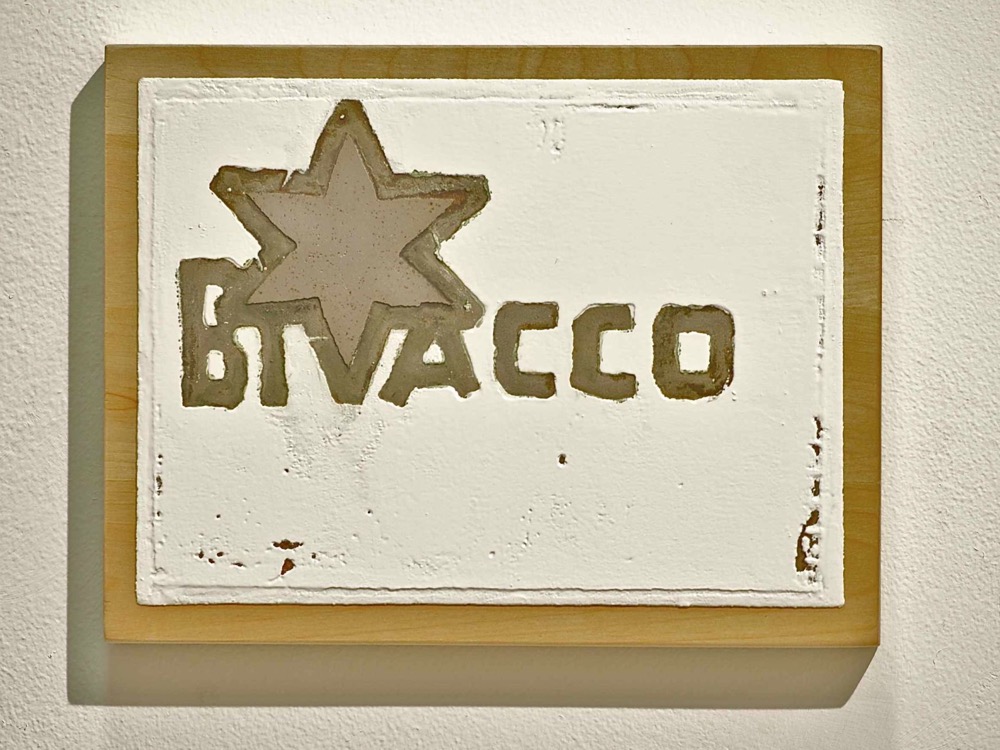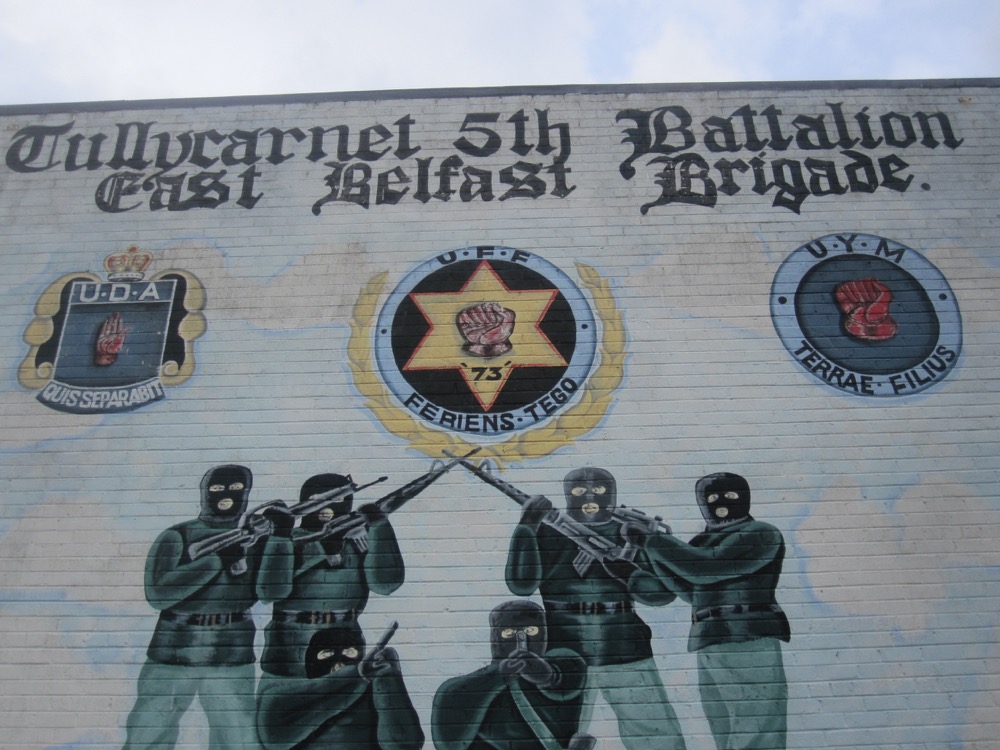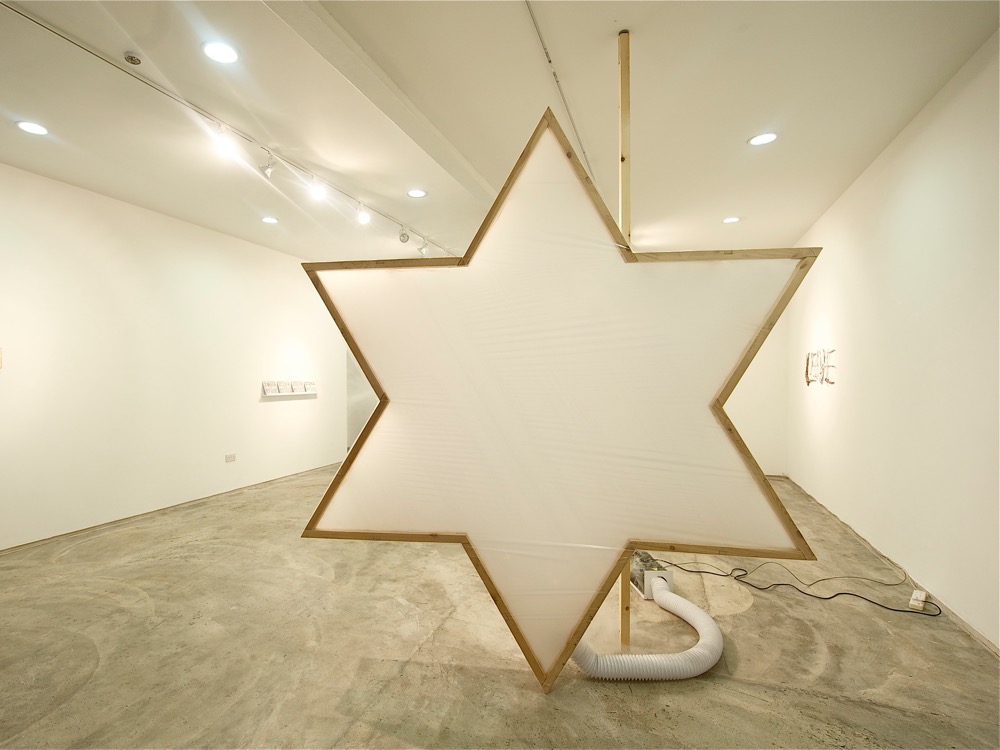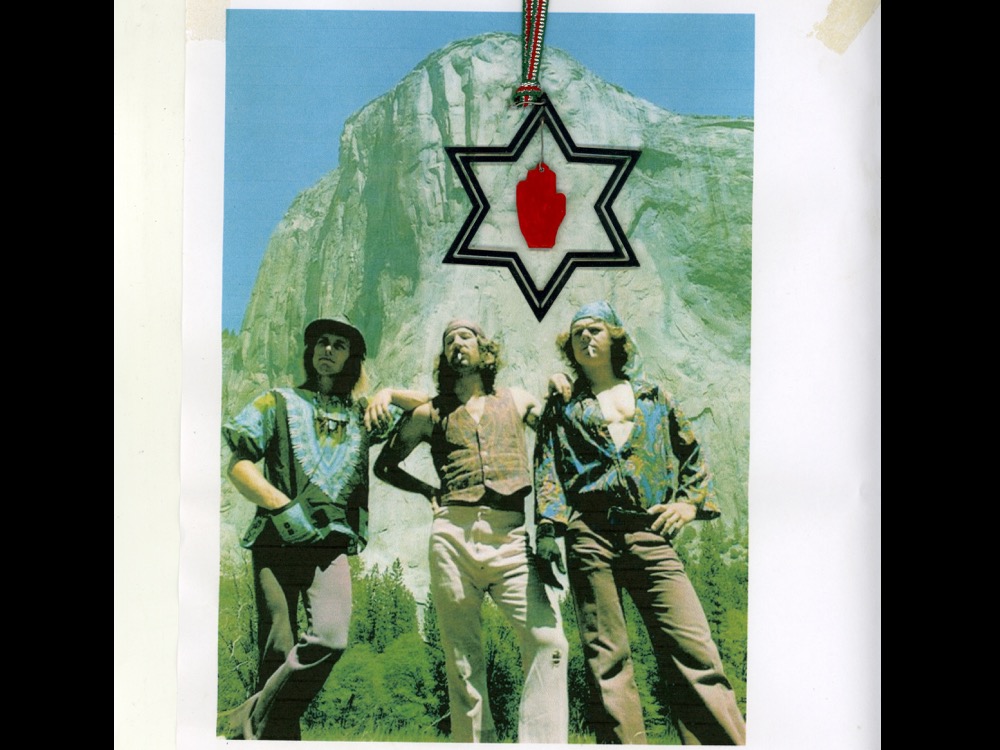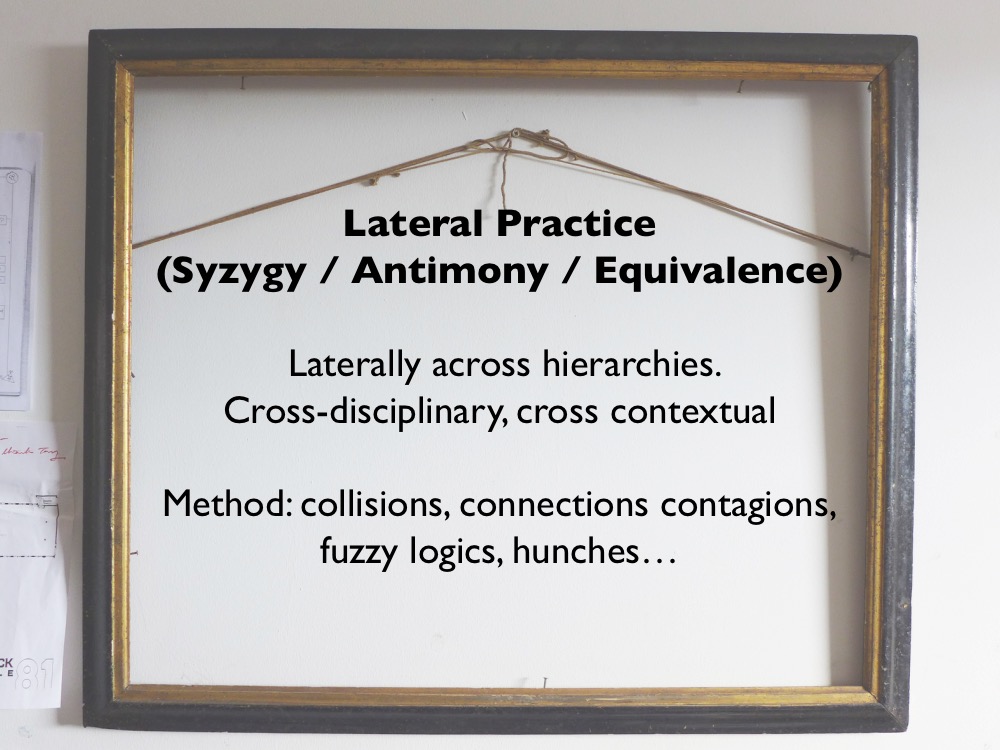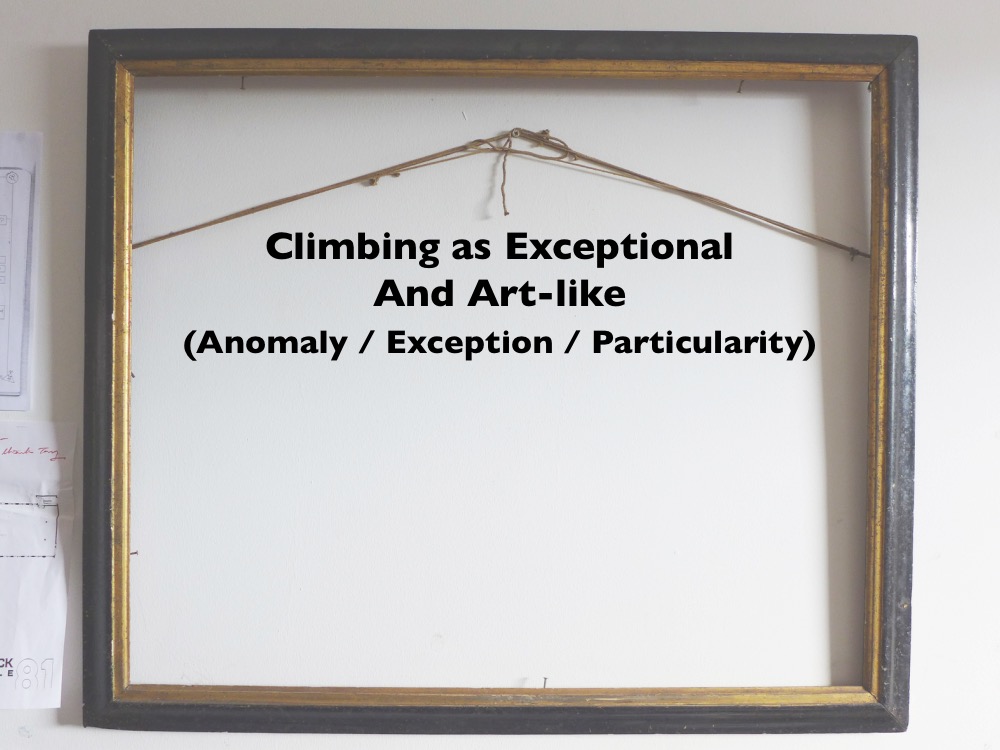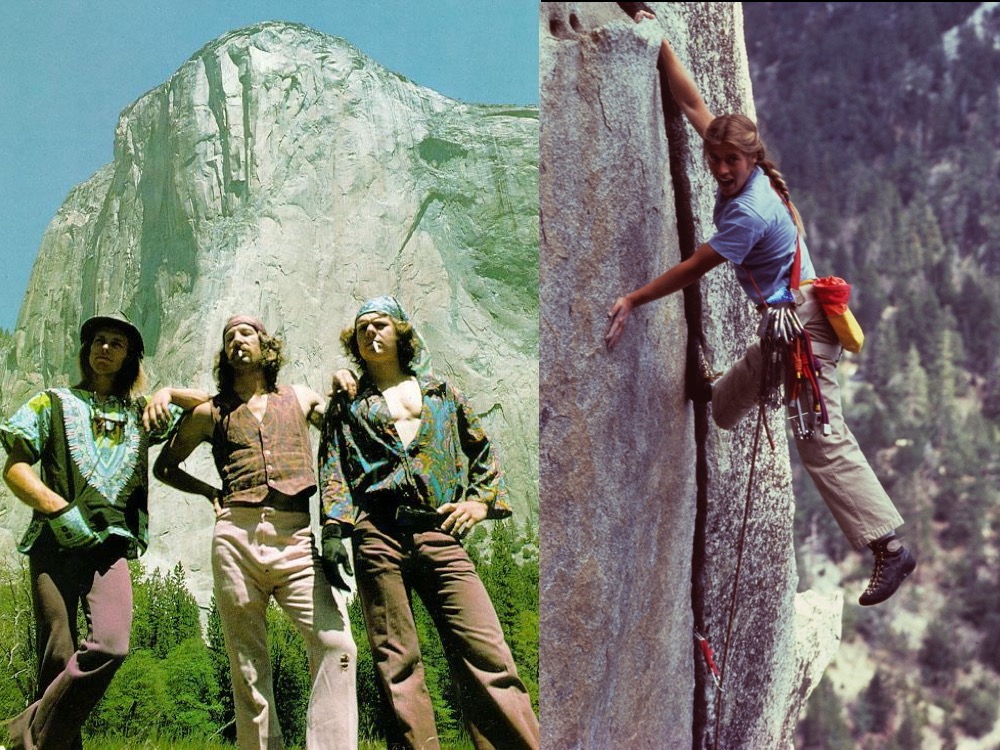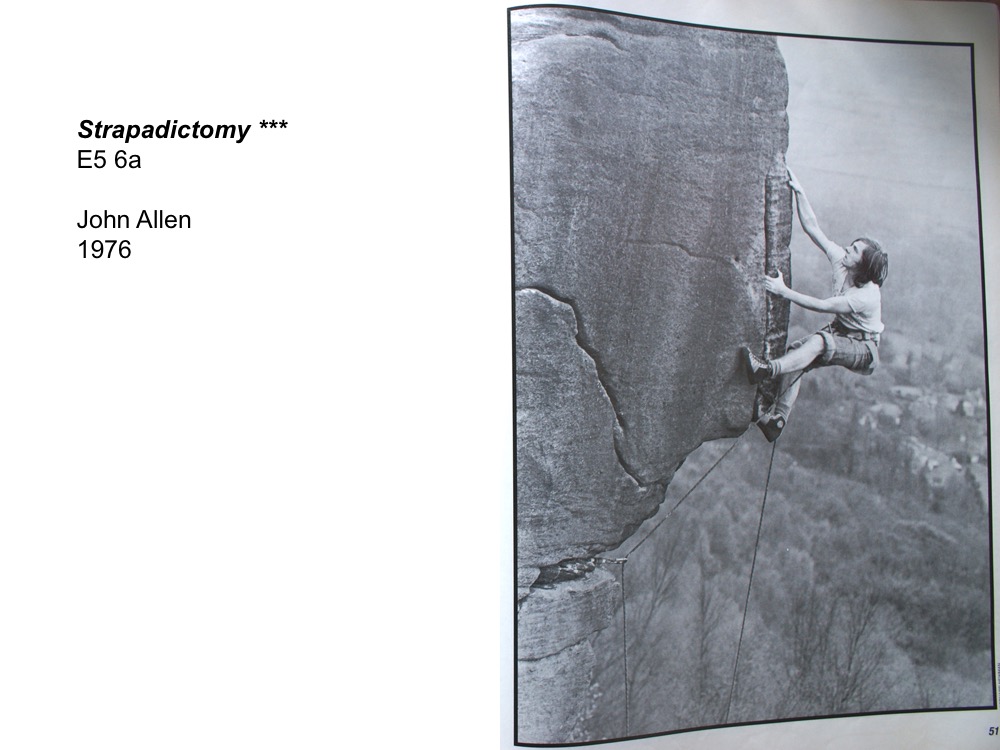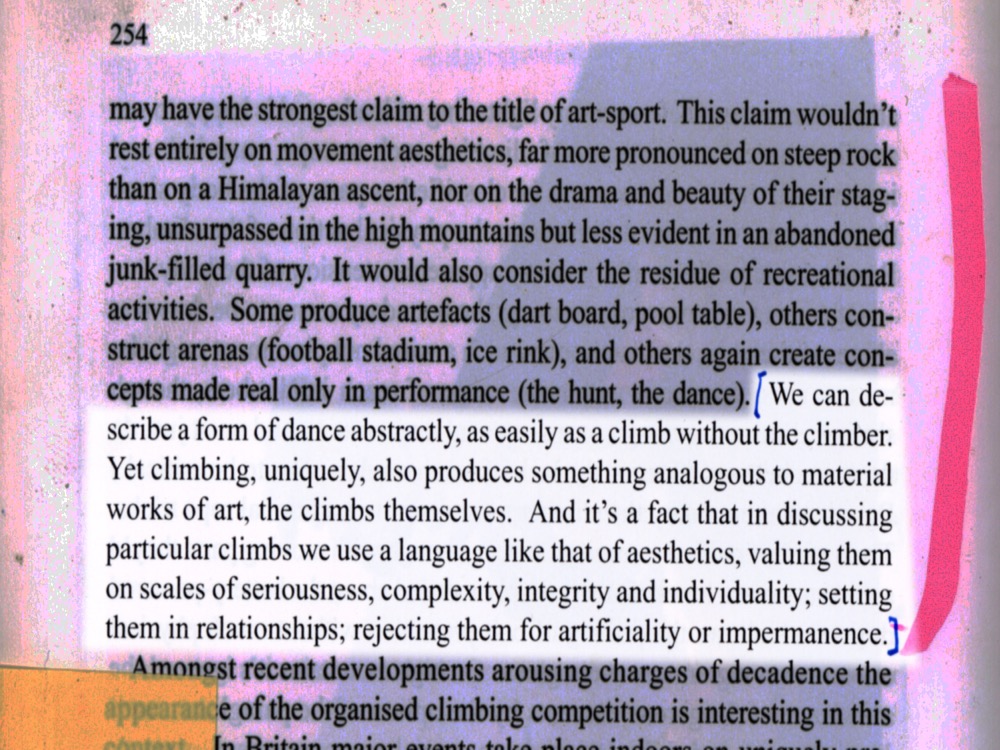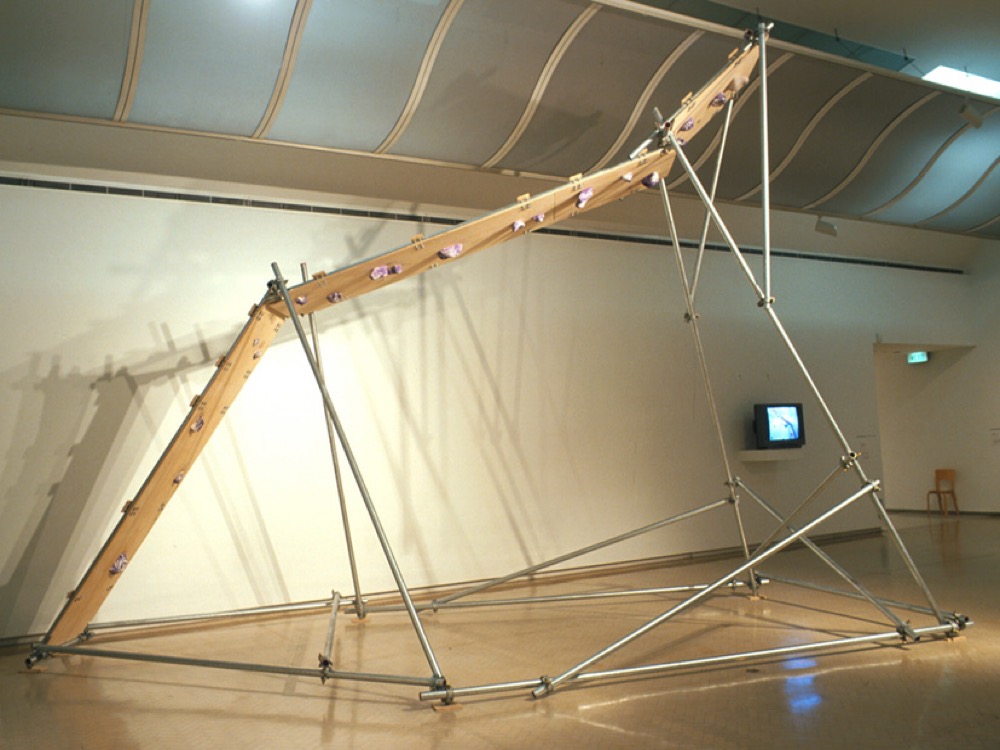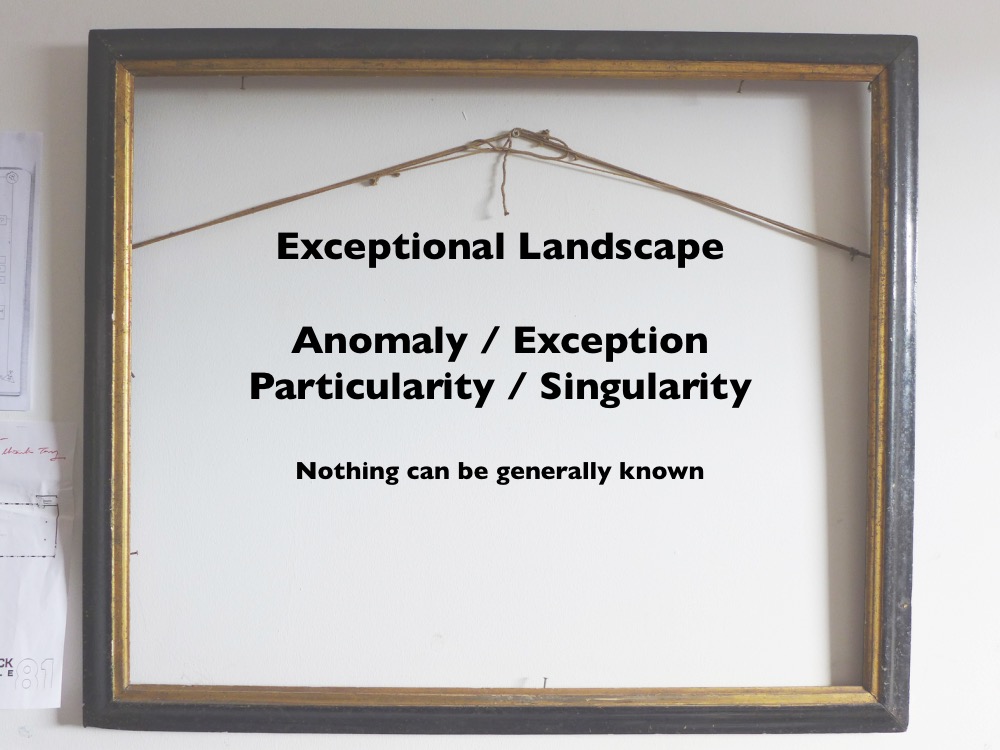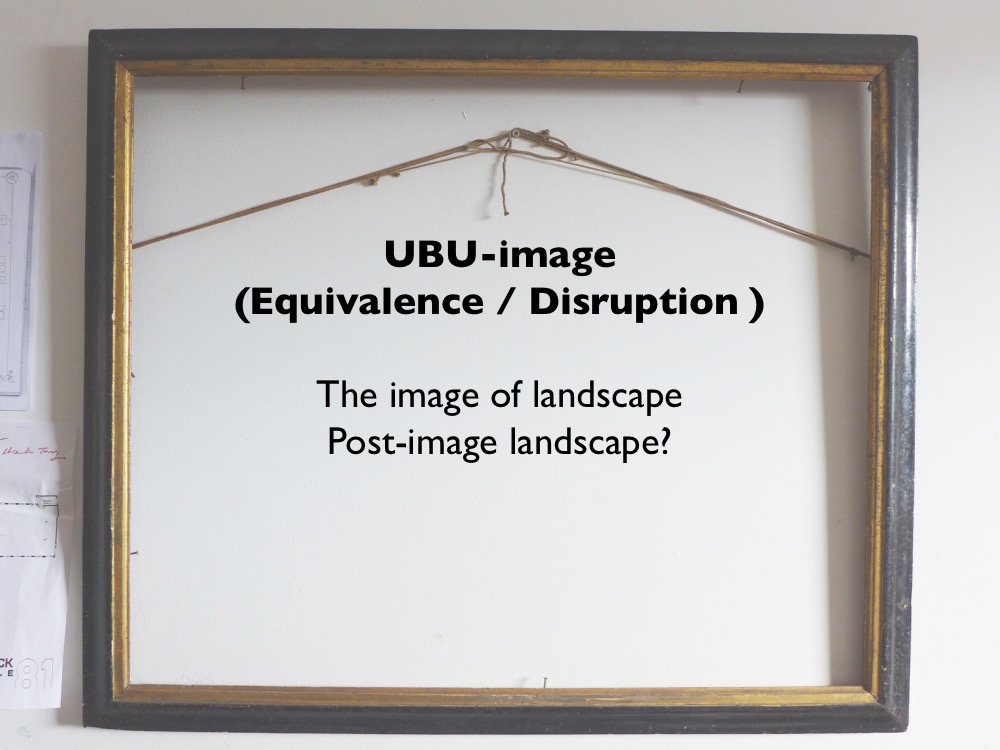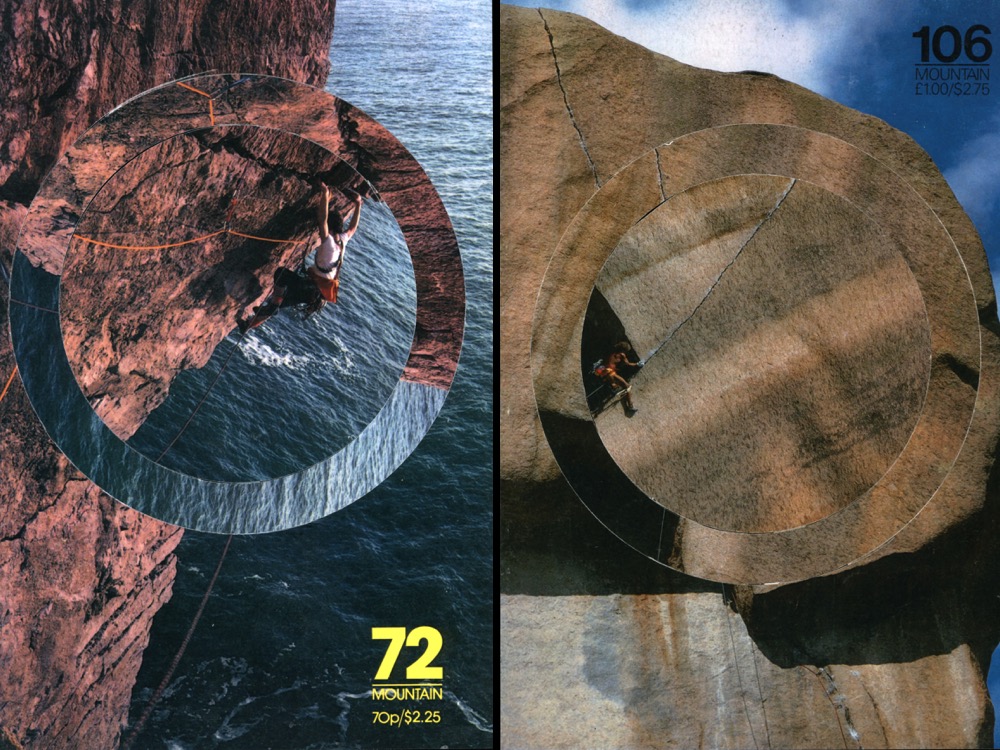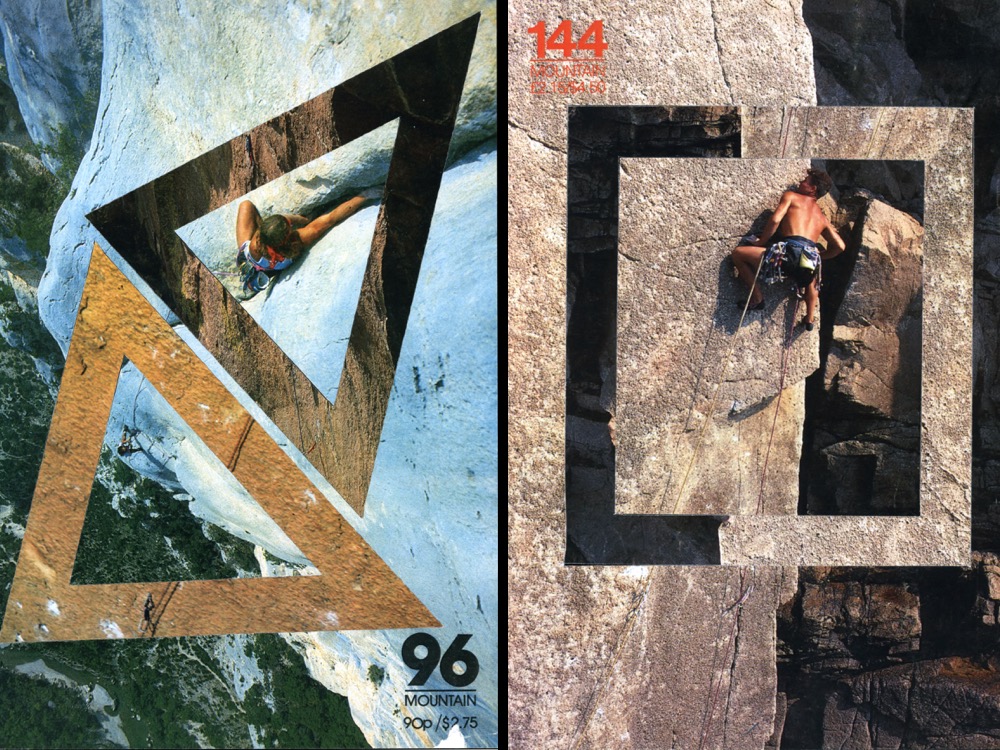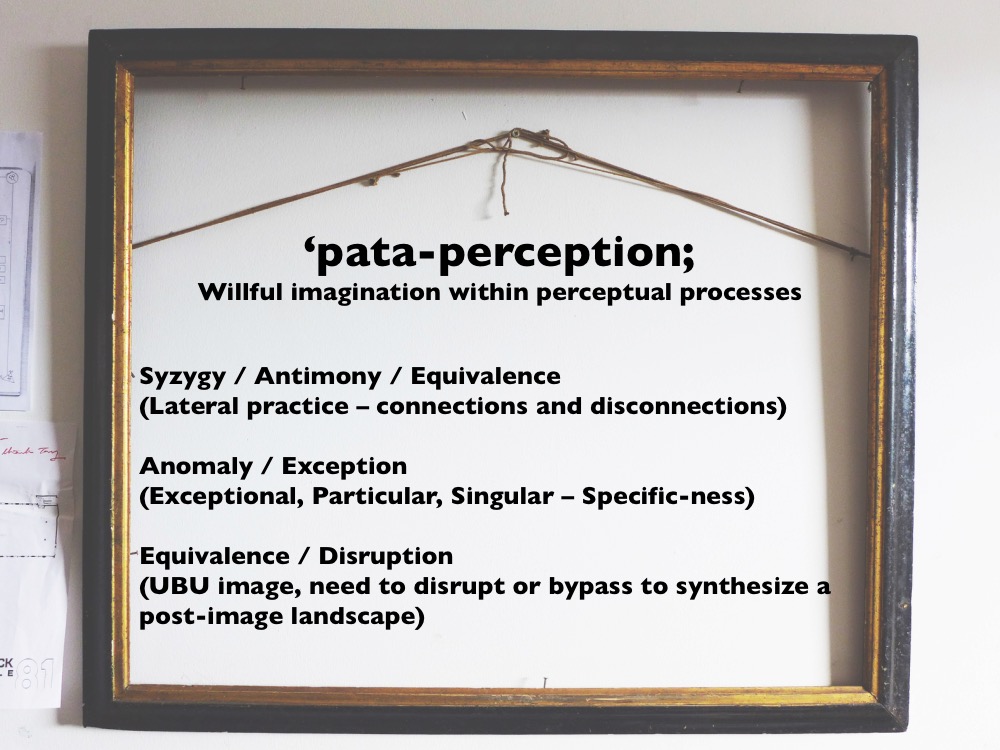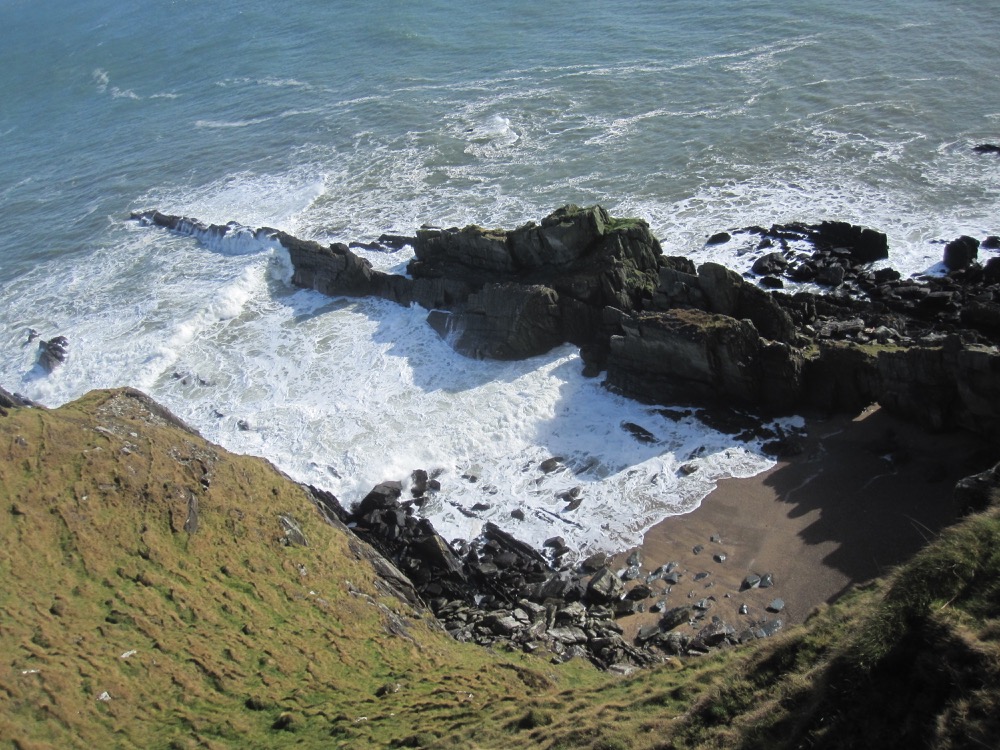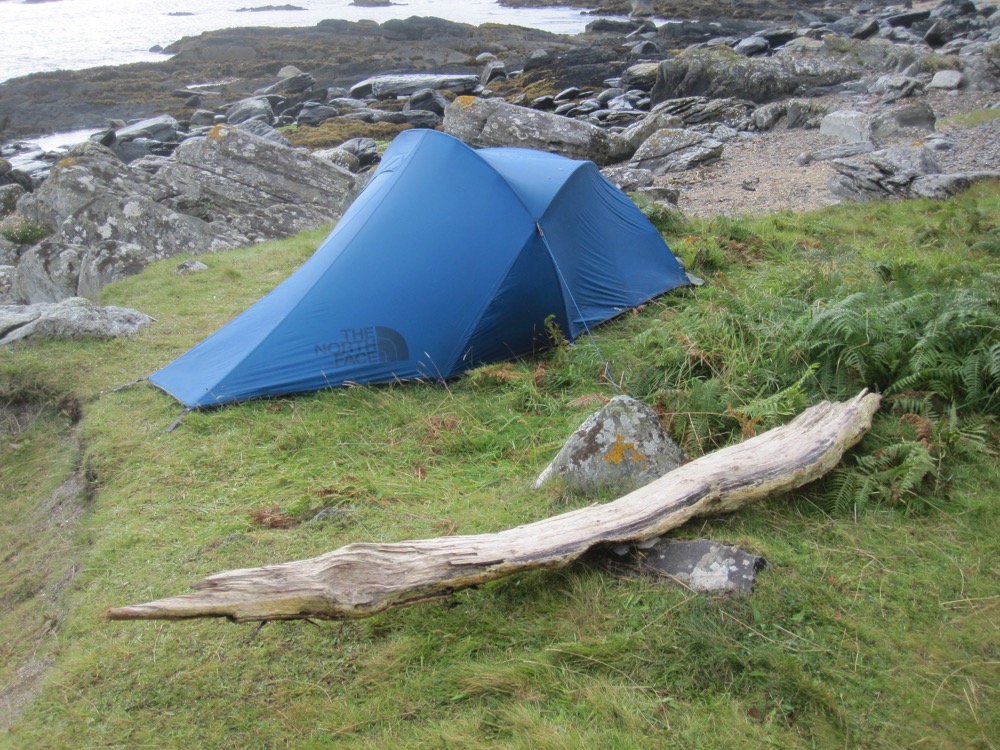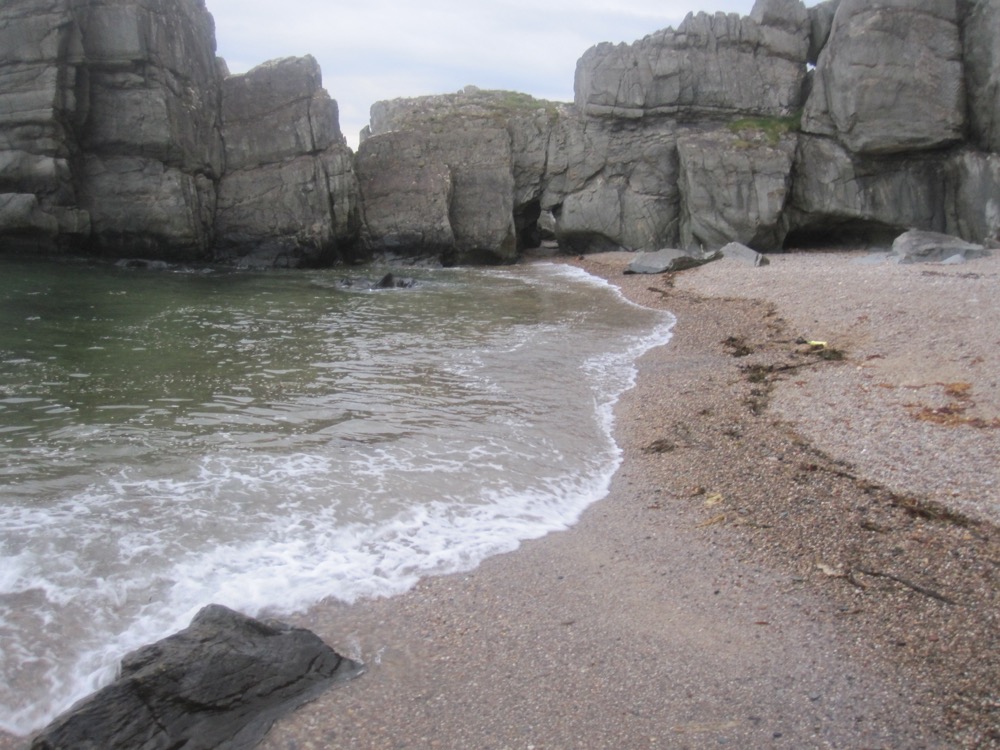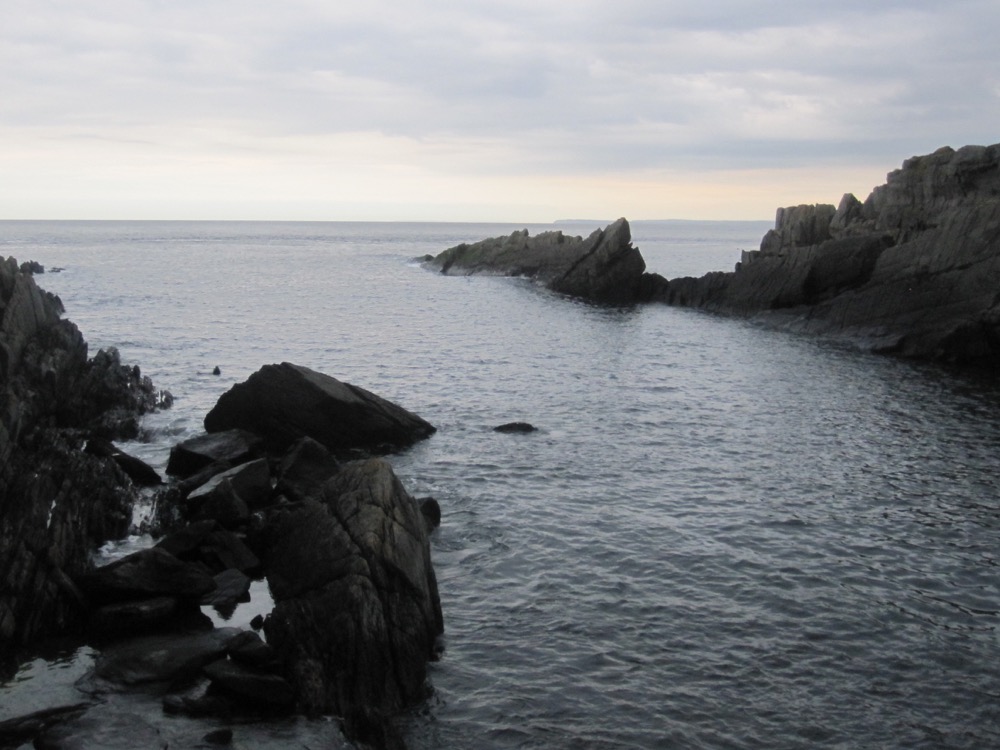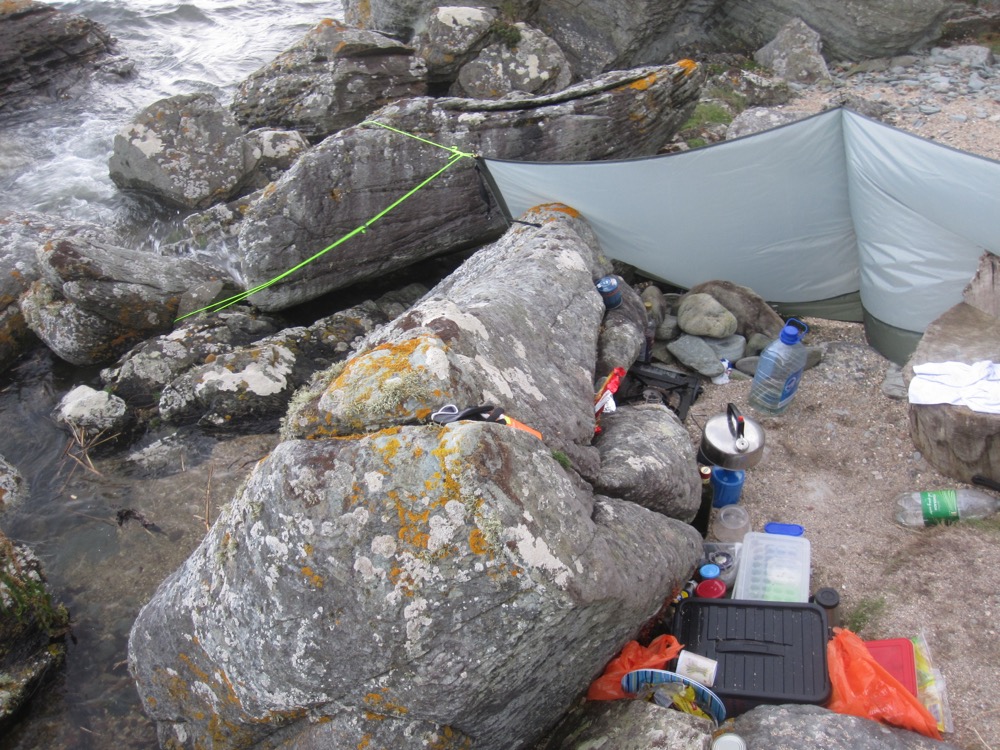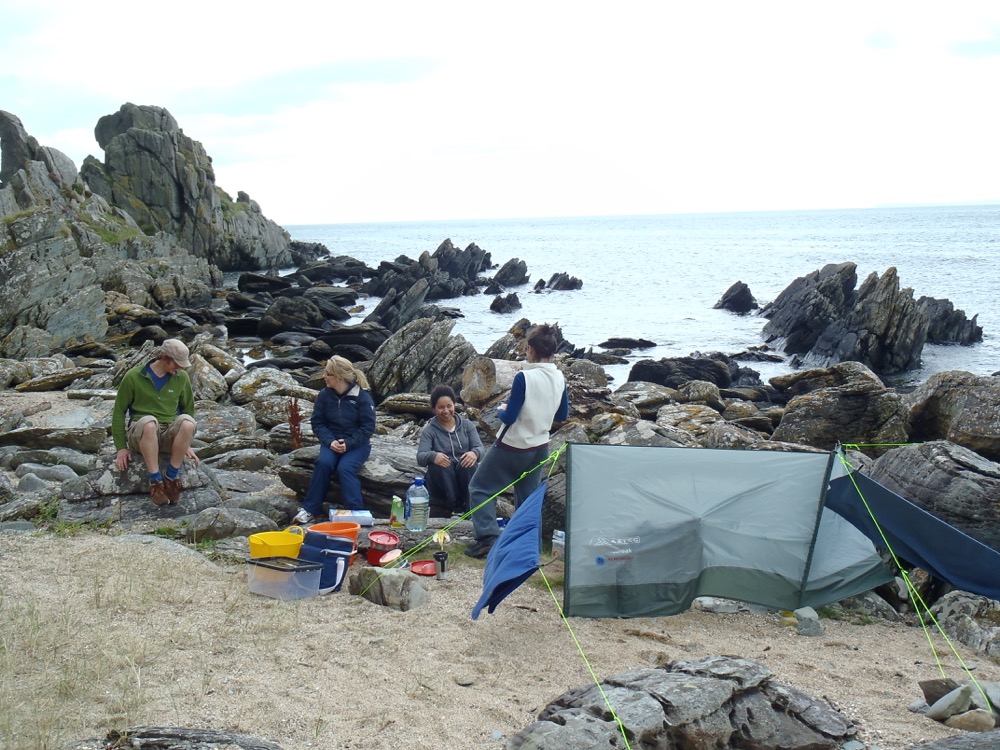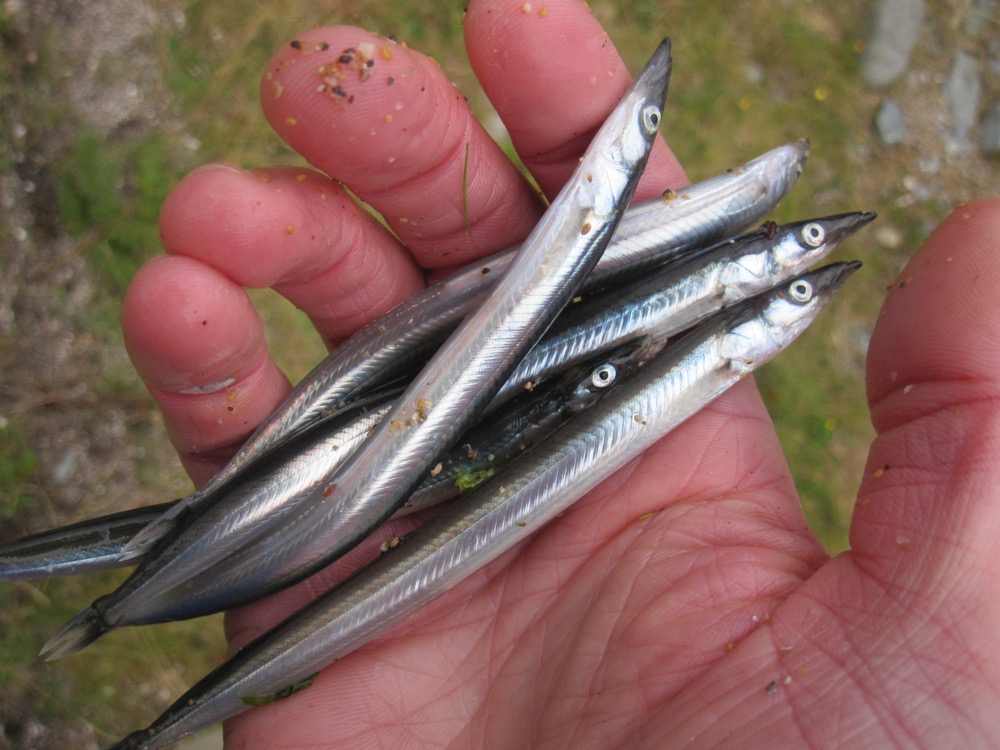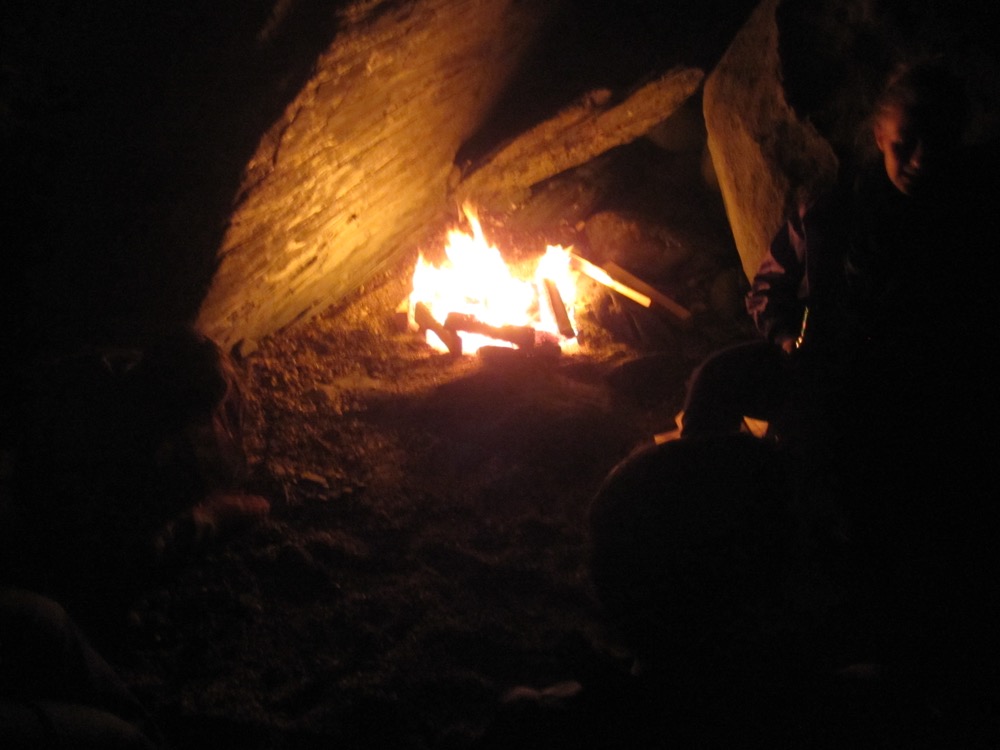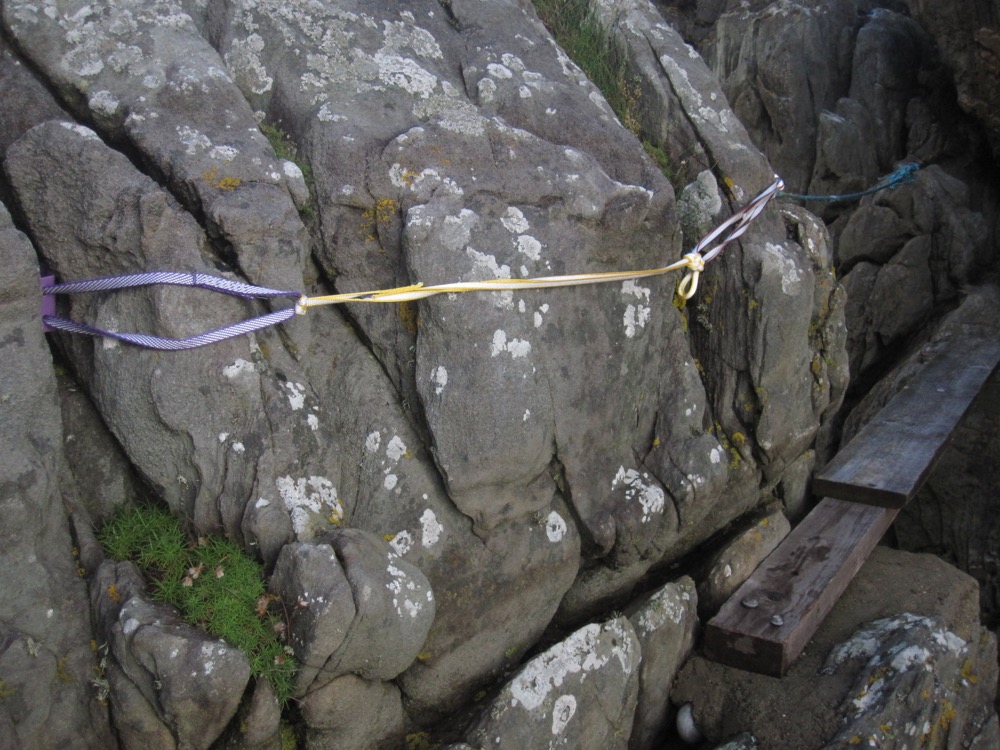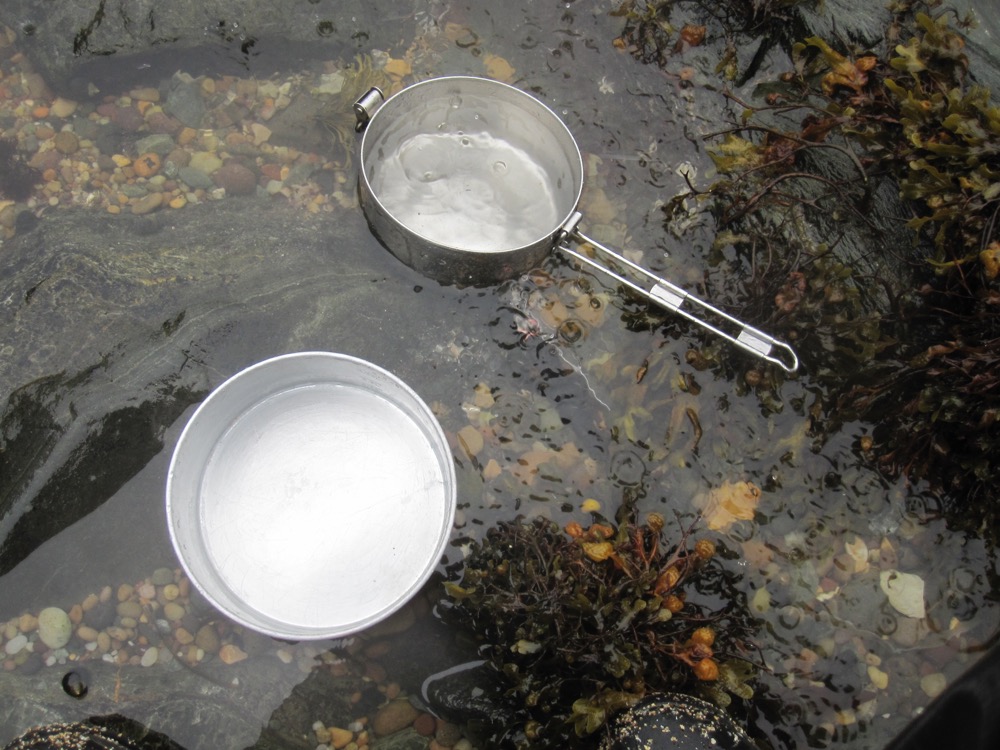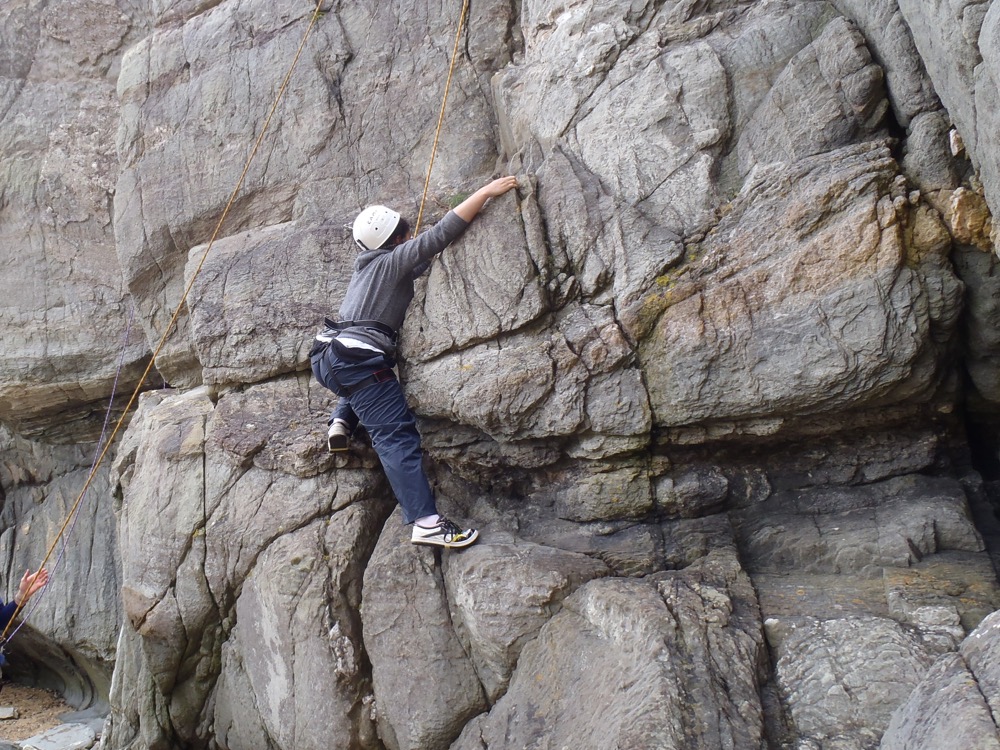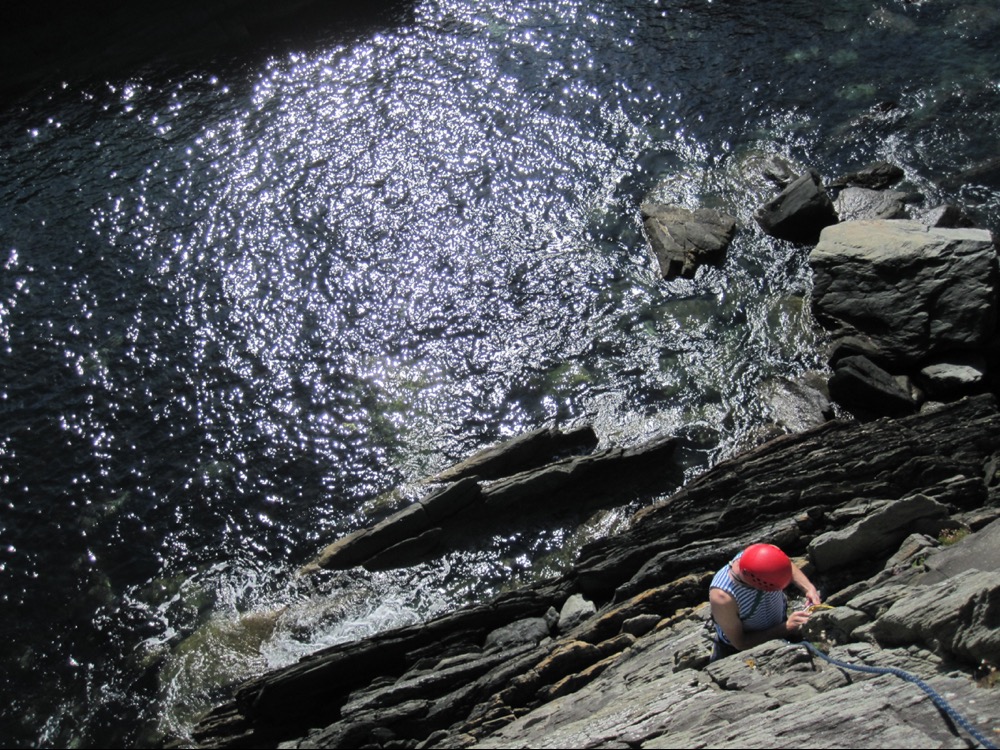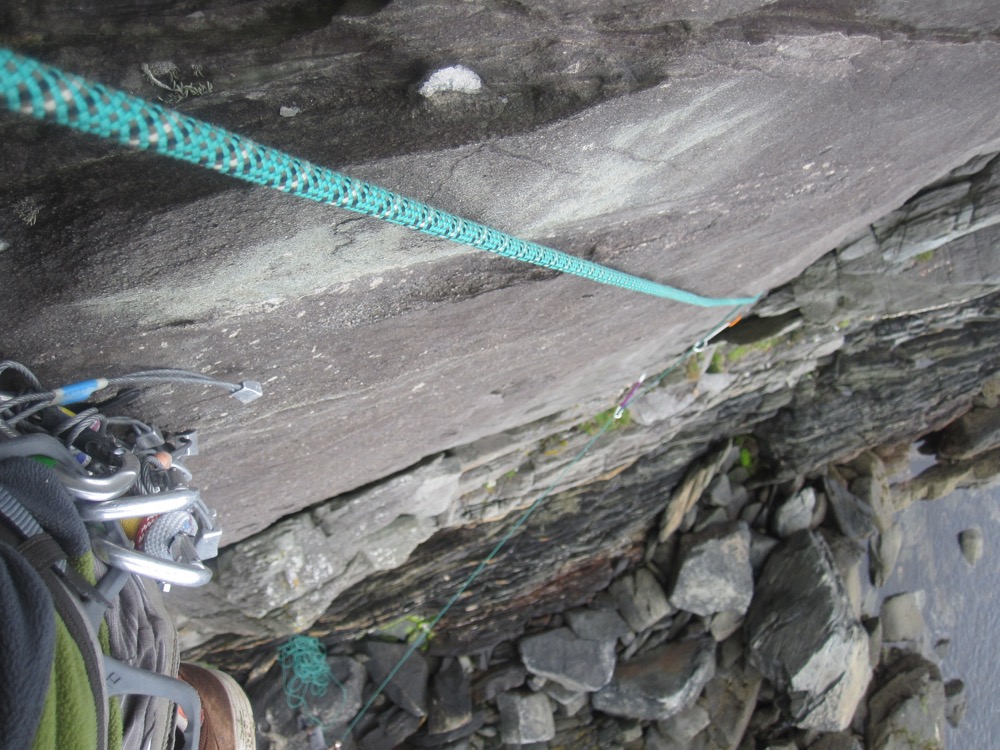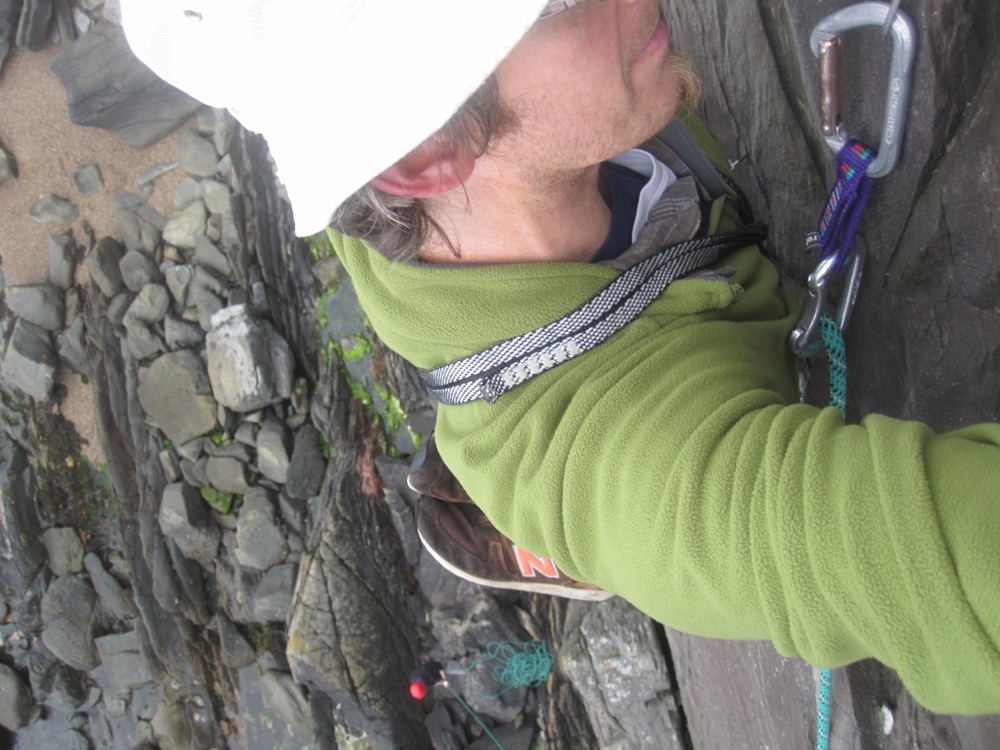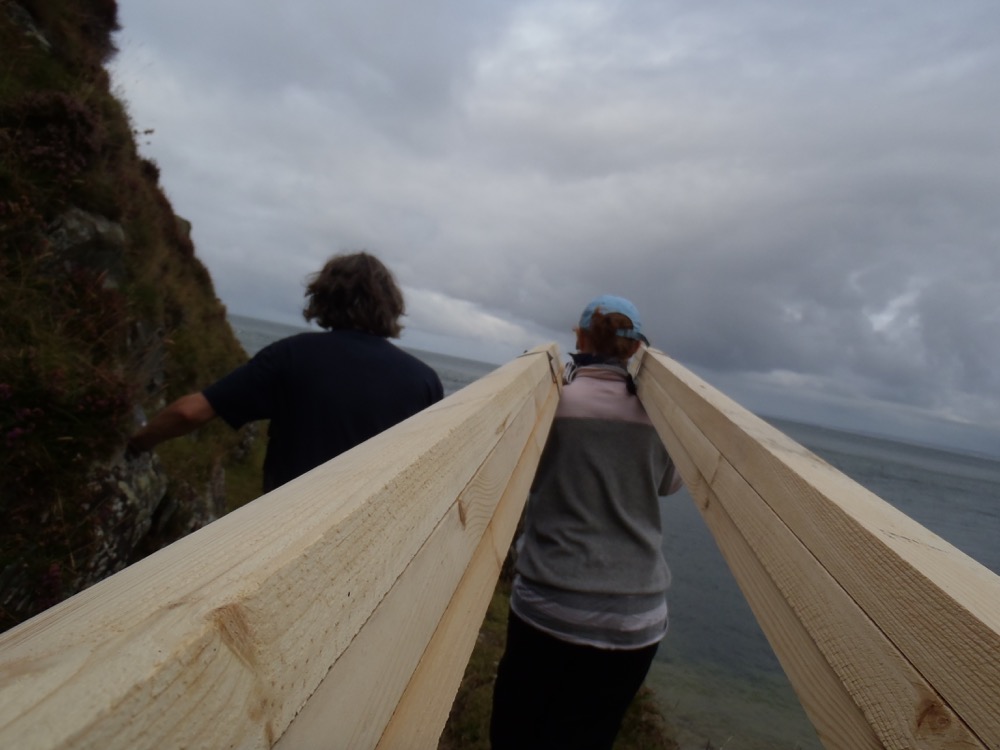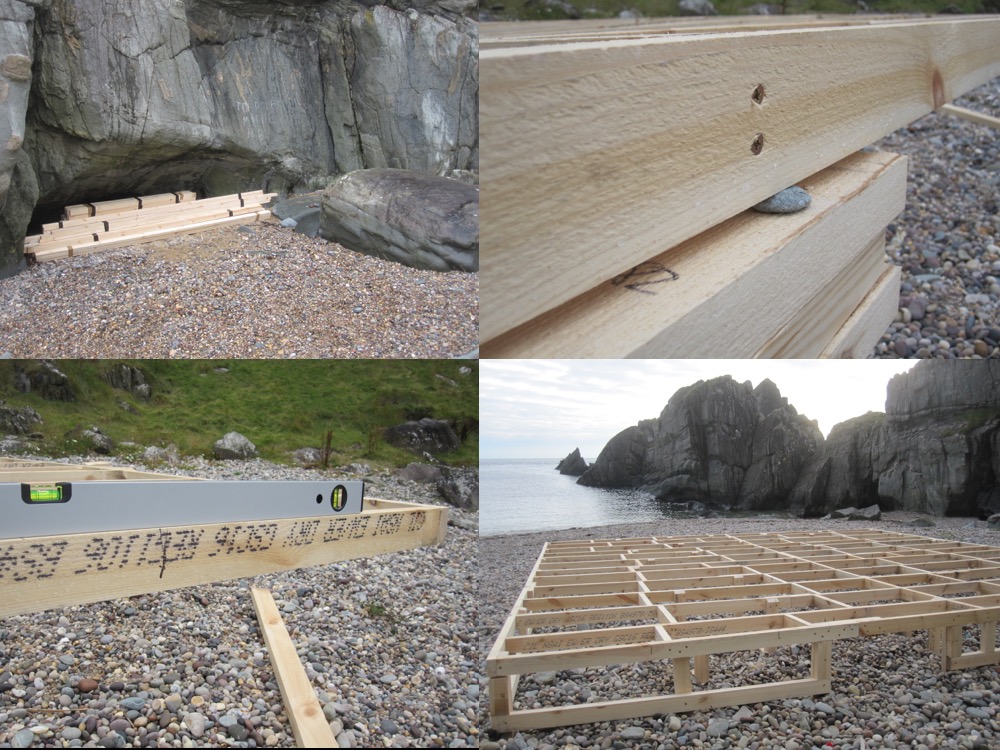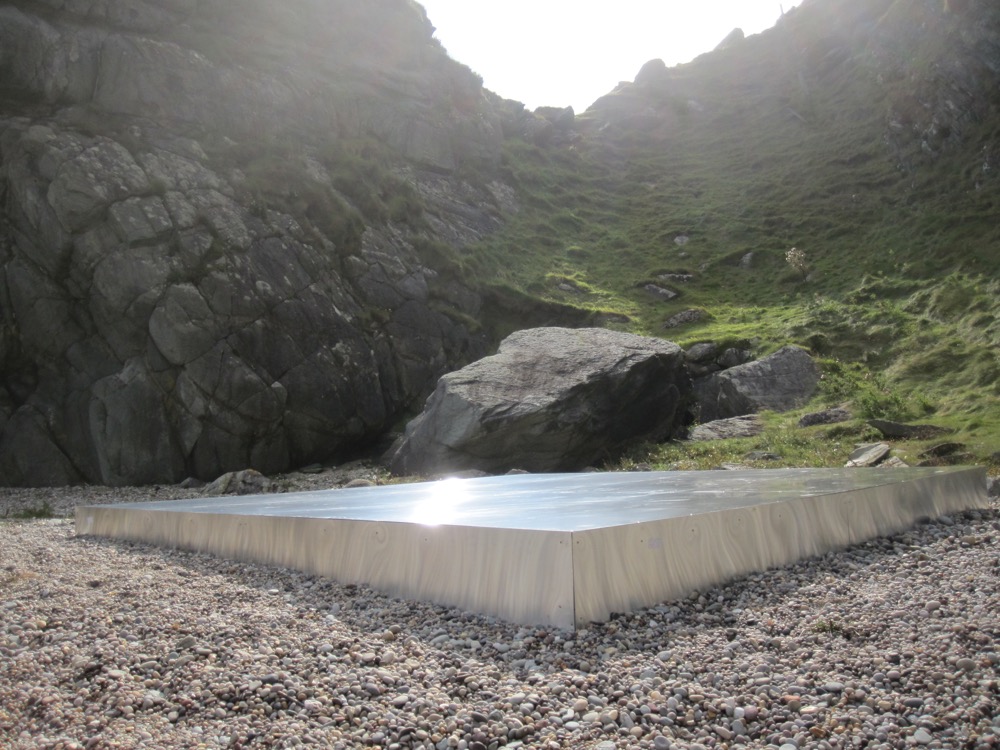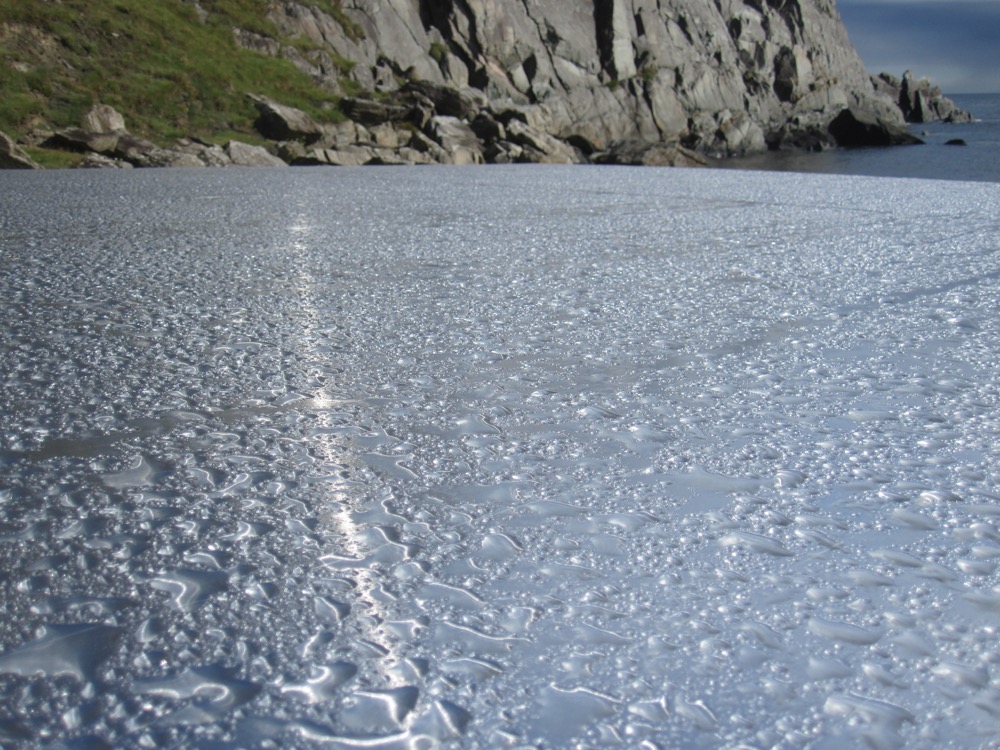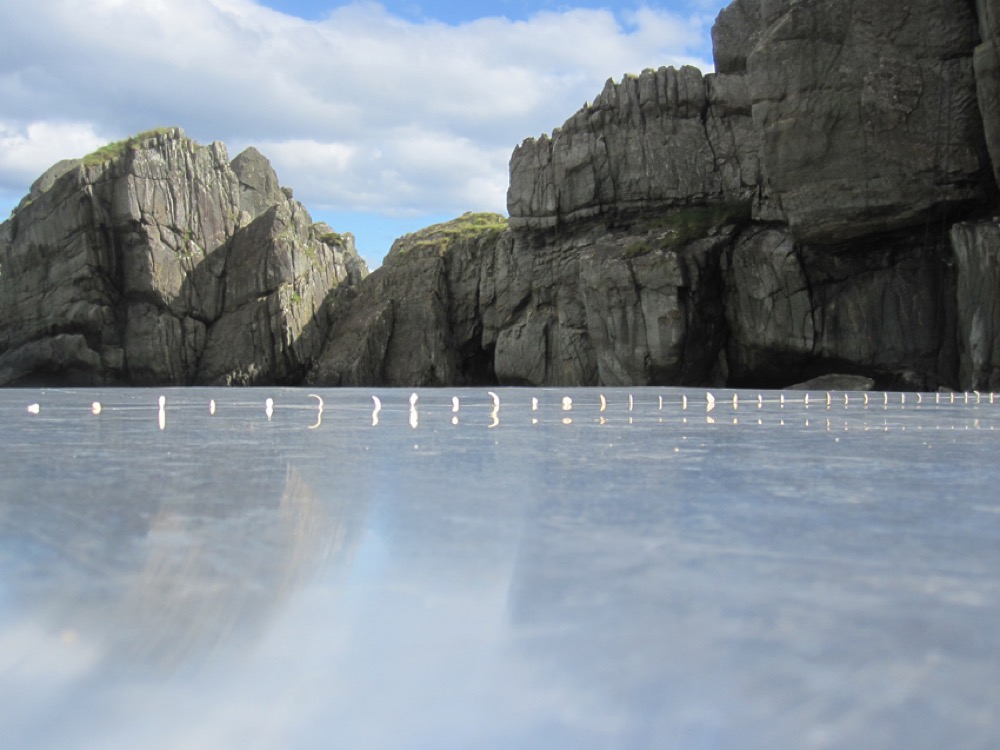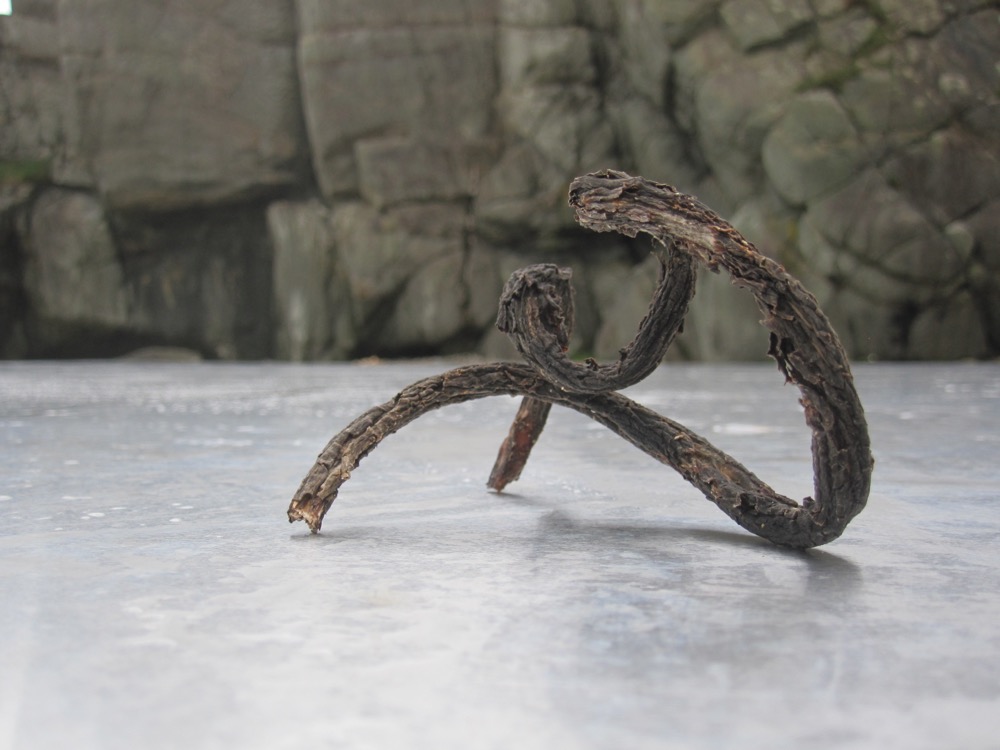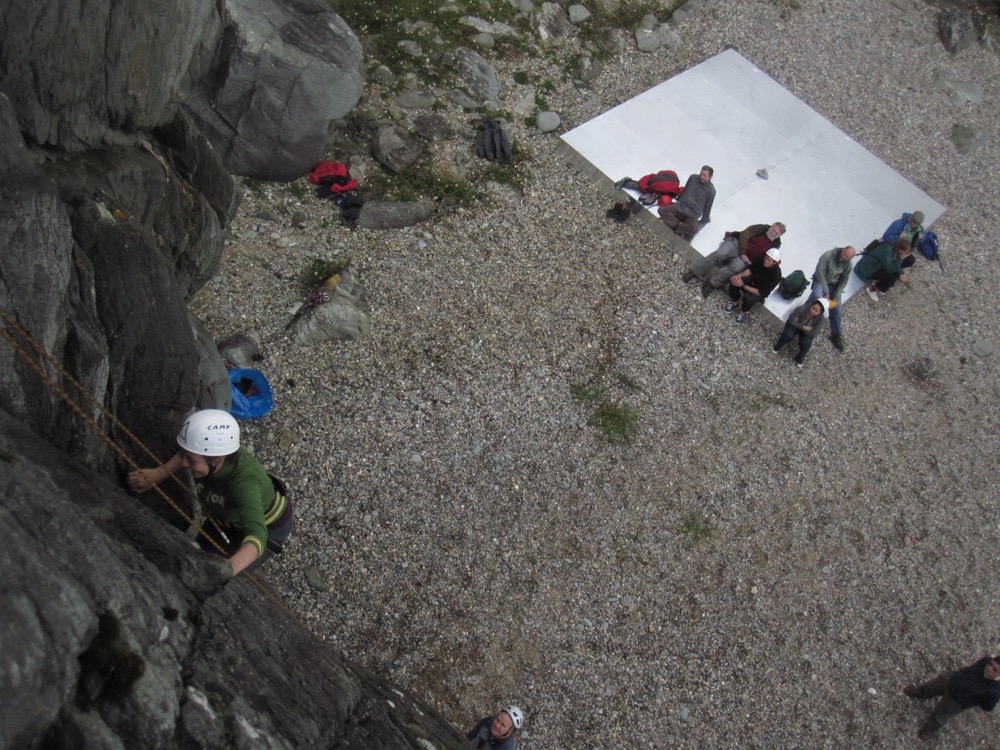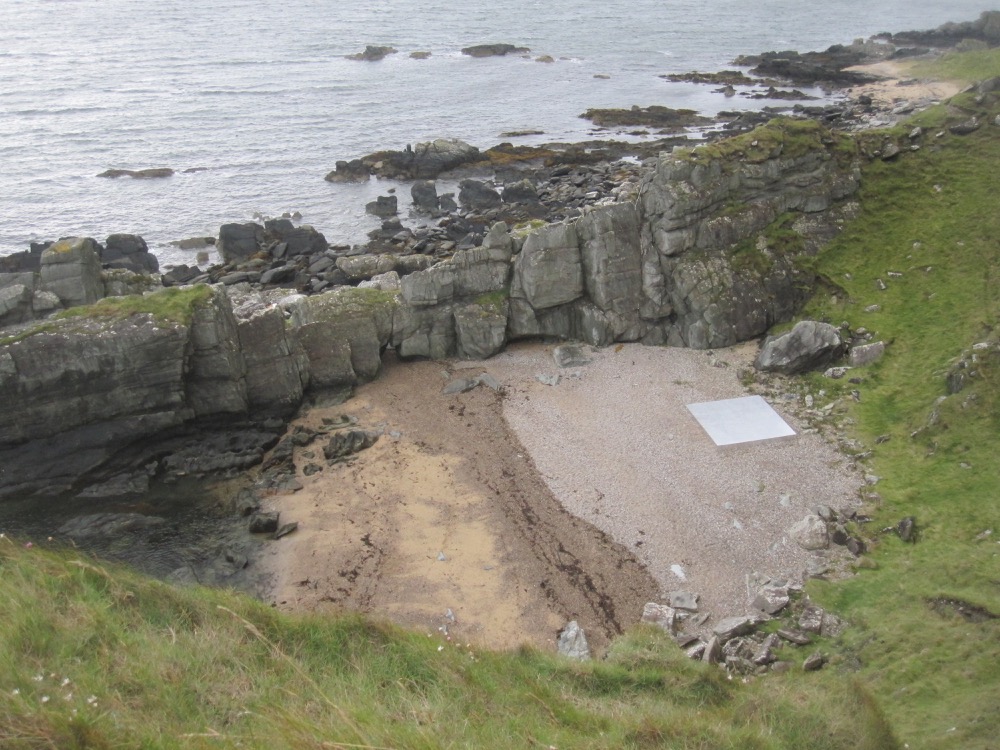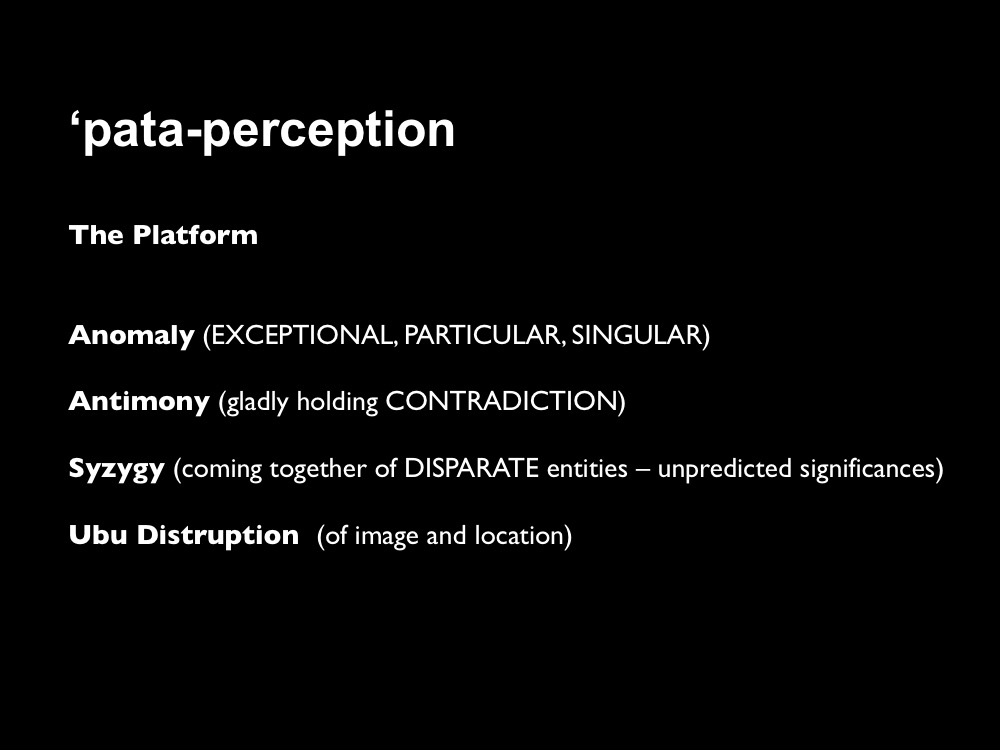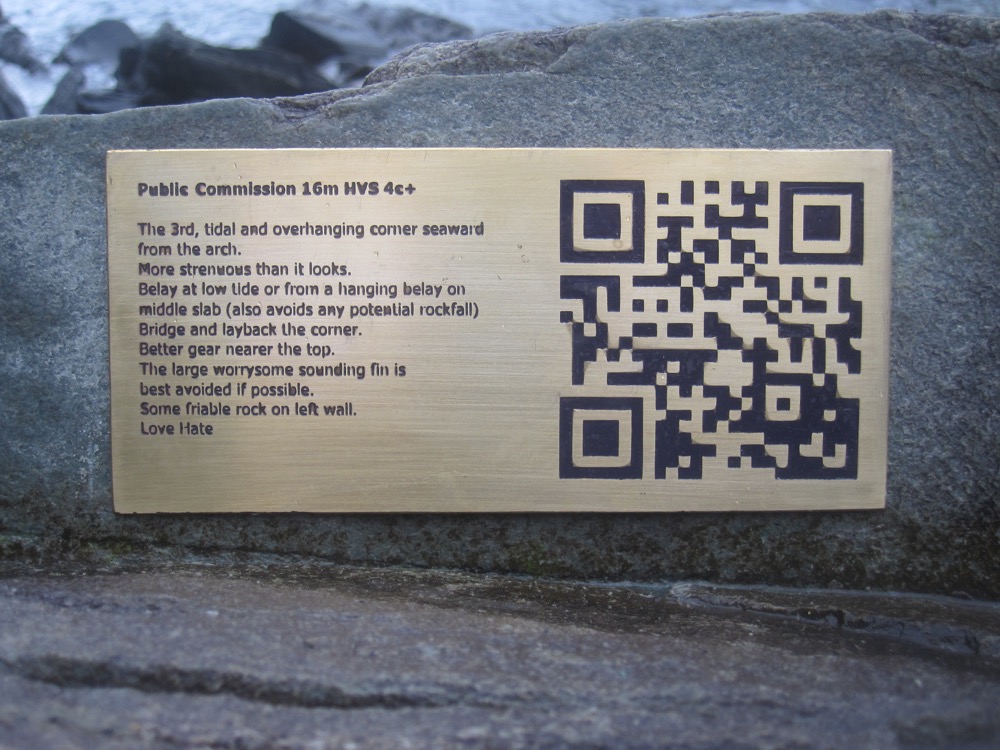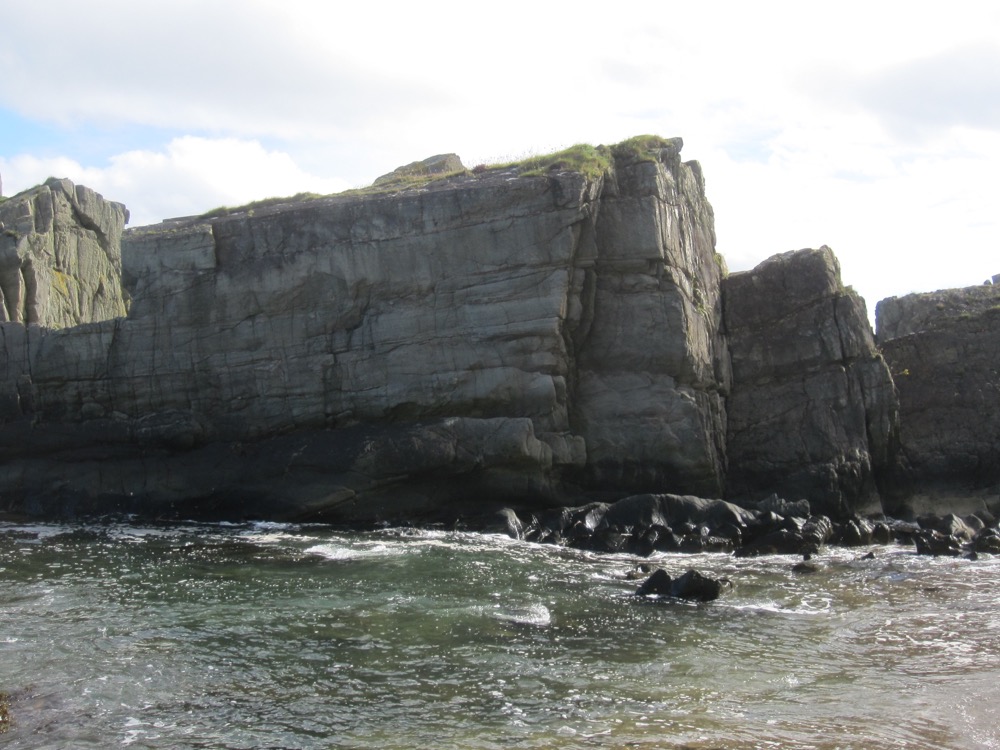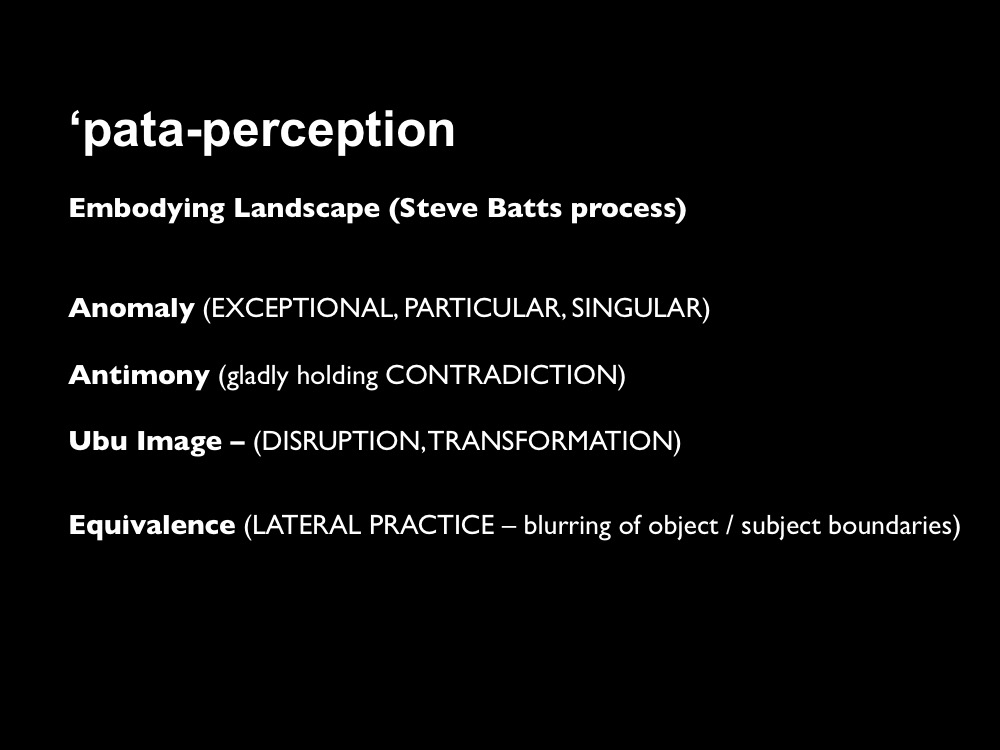CMIT Conference
Sheffield Hallam University
Sep 2017
This represents one of a number of overlapping performance-talks where I explore the ideas around of pata-physics and my own framework of pata-perception as a way to understand my artist method.
Each performance talk developes the concept:
Mountainsides Symposium, Leeds Univeristy, 2016
Kendal Mountain Festival, 2016
CMIT conference, Sheffield Hallam, 2017
Alternative University, UCU Queens Belfast, 2018
The images here are slides from a presentation which was part performed - part presented in an experimental artist talk style.
The text is just my talk notes and are not scripted or fully accurate to what was actually spoken.
Note; Each image will enlarge if you click on them.
Intro:
General intro: Dan Shipsides…. CMIT, KMF, WARNING:
This might be a strange bundle of ideas – you may walk out of here with utter confusion.
I am an artist talking about art and pataphysics….
For me pata-physics presents the best or most compelling account of artists’ unruly tendencies, processes or method and the apparent absurdity that is often involved. Let’s face it much of art making is absurd and seemingly useless in today metrically economised world. So pata-perception is a model of artistic vision.
So please note – whilst pata-perception is my term I’m not inventing a new thing here – it already exists – it always has – as the basis of creative vision or creative method or indeed as Alfred Jarry (of who I will talk of later) would assert – reality is pata-physical. And so how we perceive it must be pata-perceptual.
Interested in Artist Method – why? because I’m an artist and I’m interested in what artist do when they are being artists.
Also because art contributes so much in terms of our relationship to space and place – our geographies. So landscape is something I will talk a lot about here.
I want to give credence and validate artist method – as it is too often skewed by academic or economic frameworks – or the artist researcher feel compelled to dress it in the rational terms of more orthodox scientific method – or is set to the task of communicating the more serious ideas in science and philosophy or enacting social policy.. INSTRUMENTalisation
So I’m interested in artist method and keen to look to a set of unhinging ideas that pataphysics might offer.
Pata-physics, also generally enables some form of disruption to any given situation – and so seems particularly well appointed to critical practices.
So…I’ll begin with an experimental sequence using a short section of Alfred Jarry’s Faustroll text alongside images from the COVE an art, climbing, dance - landscape project.
Then move to a brief expansion my ideas of pata-perception. And then a short analysis of pata-perceptual dynamics in the Cove.
Finally if there’s time I might screen a short artwork which embodies some of these ideas in a fairly user friendly way..
So what is ‘PATA-PERCEPTION
My term – but a term I’m developing...
It and my practice is underpinned by various ideas.
SOME OF THE THINKING AND THEORY behind much of my practice Pataphysics Jarry 1898 1911
Collection of ideas – which continues to develop and influence: I’ve constantly amazed with how many key artists and thinkers have are or have been pata-physicians or have been greatly interested in it: Duchamp, Umberto Eco, Picasso, Calvino, Deleuze, Foucault, Jean Baudrillard, Borges, Louise Bourgeois.
What is ‘pataphysics?
(Alfred Jarry. Exploits and Opinions of Dr. Faustrol, Pataphysician. Neo-scientific novel.) 1889 / 1911
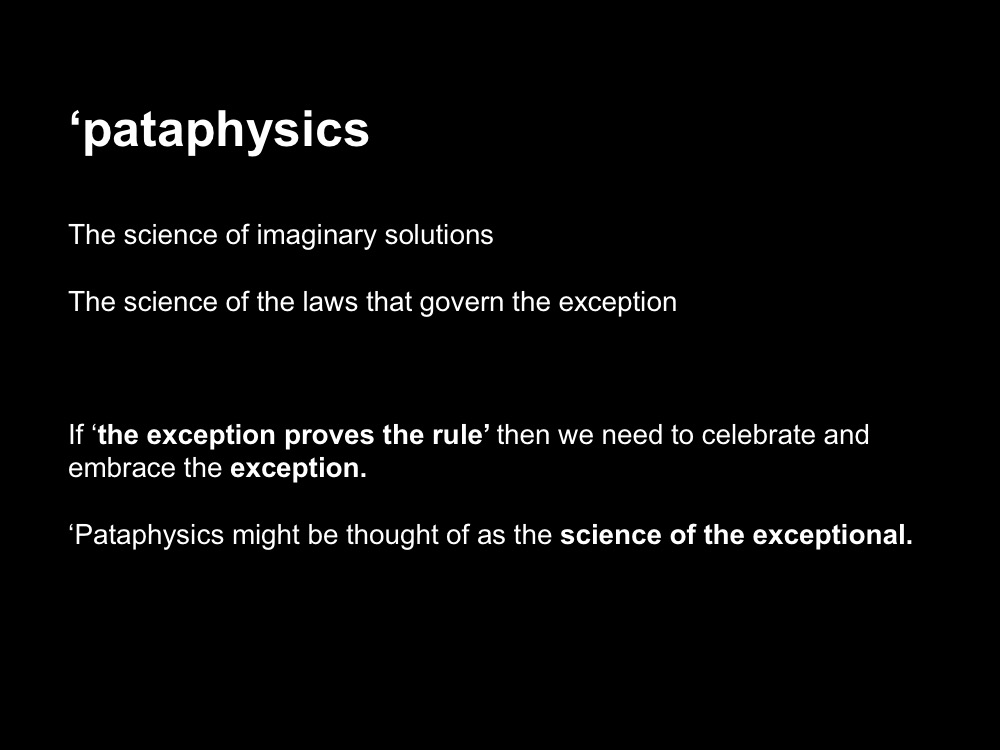
The science of imaginary solutions.
The science of the exception;
If ‘the exception proves the rule’ then we need to celebrate and embrace the exception.
So, ‘pataphysics might be thought of as the science of the exceptional.
Jarry 1889 – published 1911
A return to the particular shows that every event determines a law, a very particular law.
‘Pataphyiscs relates each thing and each event not to any generality (a mere plastering over exceptions) but to the singularity that makes it an exception. Shattuck 1960
We can say that pataphysics is subjective, privileging the particular above the general, the imaginary above the real, the exceptional above the ordinary, the contradictory above the axiomatic. Hugil 2012
SINGULARITY which echoes of Donna Haraway’s Privilege of Partial Perspective 1988 text. To decorate with new solutions, our representations of the poverty stricken linear world (Launoir 2005)
EQUIVALENCE / laterality
EXCEPTIONAL / particular
ANTIMONY / contradictions
SYZYGY / unpredicted significances
I think these terms offer useful dynamics to help describe what artists do.
Not hard to situate artist method in these:
Collide, juxtapose, overlap, collage, counter intuition, intuition. Mindfulness, forgetfulness, remembering, repeat, repeat, repeat, undo – redo. Fuzzy logic, hunches, chance, misinterpretation. Hybridity.
Pata-perception - or Art is....an antidote to the slavish and zombie metric world of current academia and the rationalised languages and economies of the artworld – where ideas of love, desire, whim, play, compulsion and madness (the real drivers of life and art) are studiously avoided.
It’s also an antidote to ‘common sense’ – which we might also understand as a hegemonic sense.
So, ‘pataphysics might for me unhinge artists from predicted, prescribed, expected or the orthodox ways of working – that so often we see in the current discourses around art - the impoverished syndrome of “My art is about…..” rationalised and justified narratives of art.
Take the image away – there is a pata-perceptual mountain.
My ideas ‘pata-perception – grounded in experience – lived experience.
Not wild and fanciful as often pataphysical has been popularised – as the LUDIC - (Monthy Python-esque
etc.)
For me it should be more usefully anchored in the experiential.
This possibility of the experiential as key to Pataphysics is strongly framed by Jarry's own statements such as:
An epiphenomenon is that which is superimposed upon a phenomenon (Jarry 1911)
in tha it relates to the real and actual– a superimposition upon the experiential.
And, texts such as:
Deleuze’s 1964 text; ‘How Jarry’s Pata-physics opened the way to Phenomenology’ – gives us some clues as to the relationship of pataphyiscs to phenomenology.
Worth remembering that Pata-physics pre-dates Phenomenology (1901).
Also see:
Willful intervention in perception and the generative processing of perception.
Or;
Wilful imagination synthesizing upon the experiential.
I’m asserting that pata-perception - perception is wilfully intertwined with the imagination.
WILLFUL NOT SUBCONCIOUS not Surreal
- it takes a related, but different track to the subconscious.
Actually, I think pata-perception sums much artistic method – it’s what rolls creativity and the imagination into our interactions with life and the lived experience.
My thinking has drawn a lot from my practice as an artist and climber where I’ve tended to focus on 3 areas to try to tease out useful insights:
1 Lateral practice (cross-disciplinary, collision, horizontal histories, contagions)
2 Exceptionality climbing as an art-like thing
3 Ubu-image (processing, intervening, disrupting, embodying) Vibrant and destabilising.
1 Lateral practice SYZYGY / ANTIMONY / EQUIVALENCE
(crossdisciplinary, collision, horizontal histories, contagions)
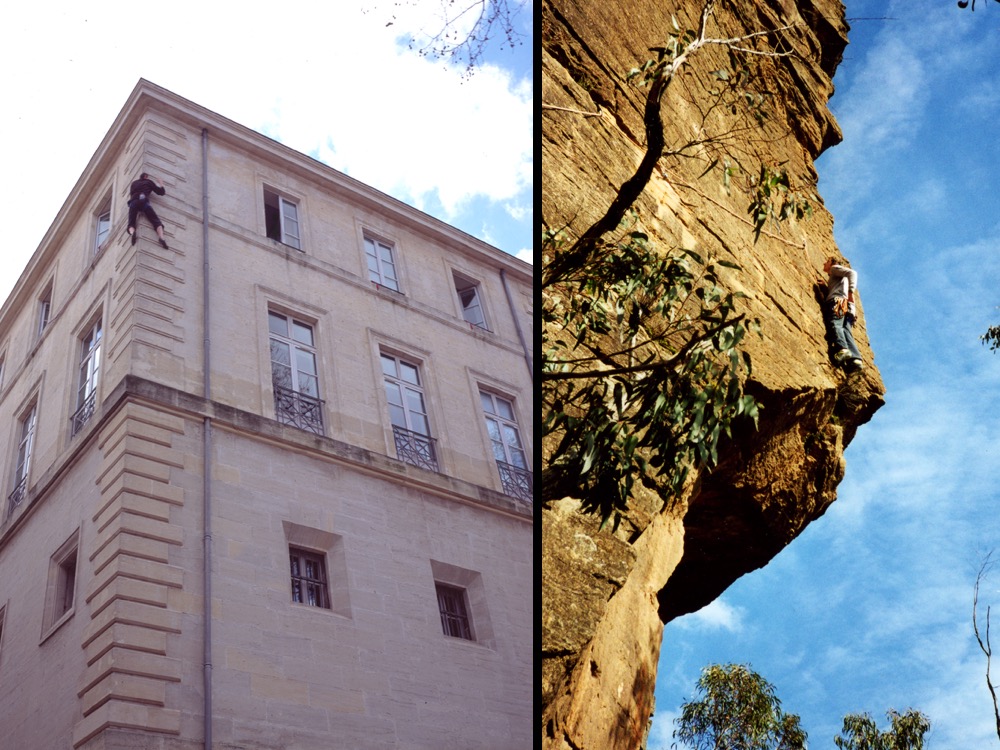
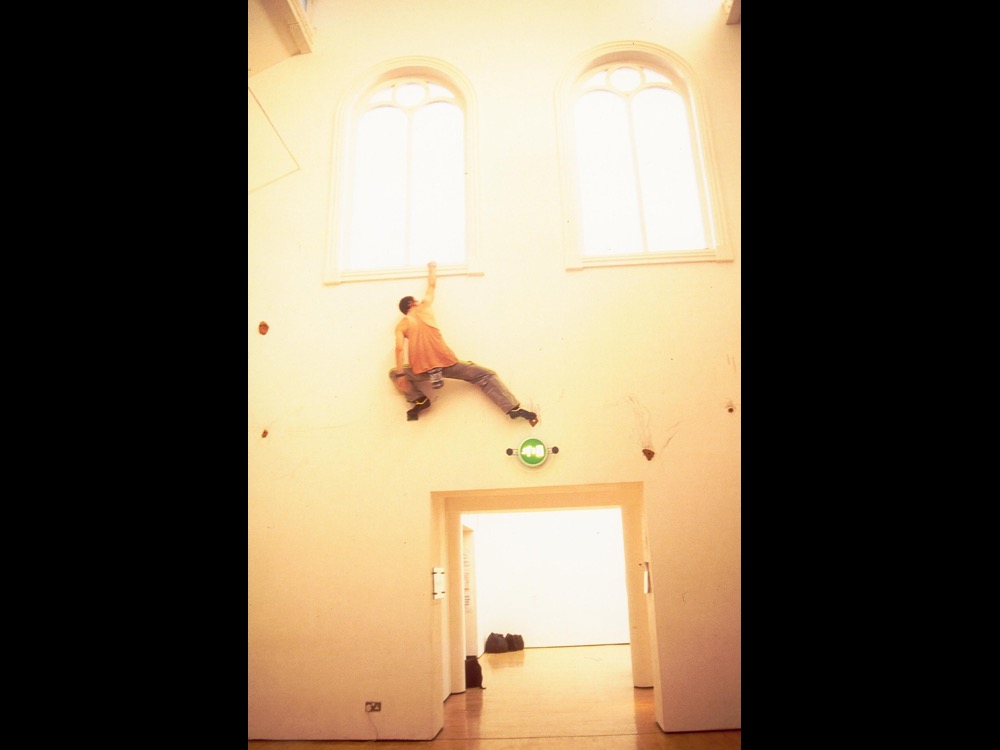
LATERAL PRACTICE - Syzygy / Equivalence coming together of disparate things. Equivalence – nothing is more serious than anything else.
There is a need for laterality to intersect the vertical disciplines and canons of historical and genre approaches. Horizontality
So, Lateral Practice goes beyond it’s expected genre, topic, category or boundary – expand where it might connect or resonate.
Might also be thought in terms of the parameters of the body and landscape: Porous permeable, boundaries, skin, body, water, rock, food, bacteria, plastic…
But I feel the crossover of Climbing and Art are good examples of Lateral Practice in a cross contextual and hybrid way.
But you can also use it within themes and ideas inherent creative processes. Sliding across different ideas and forms.
Shipsides and Beggs Projects: Topological music. Climbing the 1916 war front in the Dolomites.
Blurring Boundaries of the form and theme
Lateral Practice Connects through points of commonality or proximity - no matter how arbitrary they might seem – and then can lead you far from the source. SYZYGY
Strange Star - linking of stars - SYZYGY
Lateral practice (crossdisciplinary, collision, horizontal histories, contagions)
2 Climbing as exceptional and art-like
ANOMOLY / EXCEPTION / PARTICULARITY
I argue that climbing is pataphysical – it’s exceptional and particular (and one can’t talk in terms of pataphysics generally so we have to ground it in a particular thing) Climbing works for me – find your own.
A very different way of engaging the landscape.
In Geographer Stephen Daniels’ recent book (Landscape, 2015).
Climbing as having the spirit of the Avant-Garde.
He was describing the changing attitude of climbing and climbers in mid 20th Centruy Britain in relation to society or the mainstream. Set aside from the norms of society. Deviant?
Also US counter Culture 60's 70's Yosemite - The Nose - El Capitan.
Billy Westbay, Jim Bridwell and John Long – 1 day 1975
Lynn Hill 1994 1 day free
We don’t generally climb – climbs are particular, they are exception – no two climbs are identical. SINGULARITY
Strapadictomy - great example pata-physical devious wordplay.
Harold Drasdo Quote:
THE ROUTE - Gecko Roof 2000 Shipsides.
The entity of the route is the key thing that is particular, peculiar and exceptional about climbing.
The climb as a specific cultural thing or form – THE ROUTE.
Particular – Exceptional – there are no general routes.
Route have authors and titles. The titles themselves are often brilliant examples of the pataphysicial spirit in climbing.
Particular – Exception.
Routes can usefully be thought of sculptures, performances and drawings – as art-like things
The exceptional spatiality of climbing.
3 Ubu-image EQUIVALENCE / DISRUPTION
(processing, intervening, disrupting, embodying)
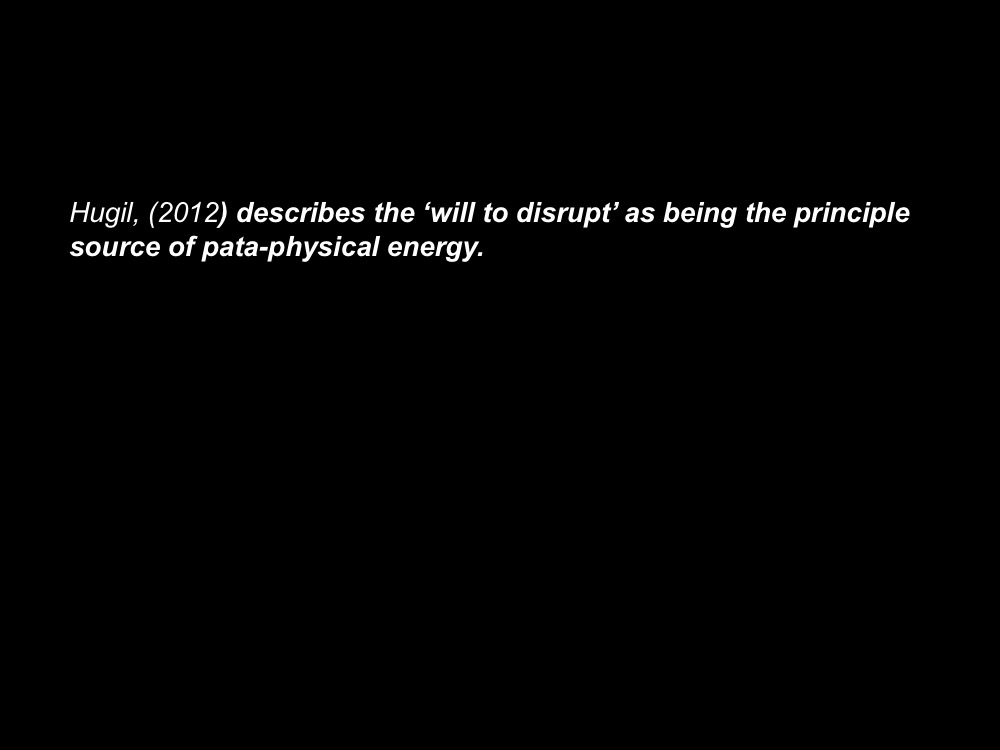
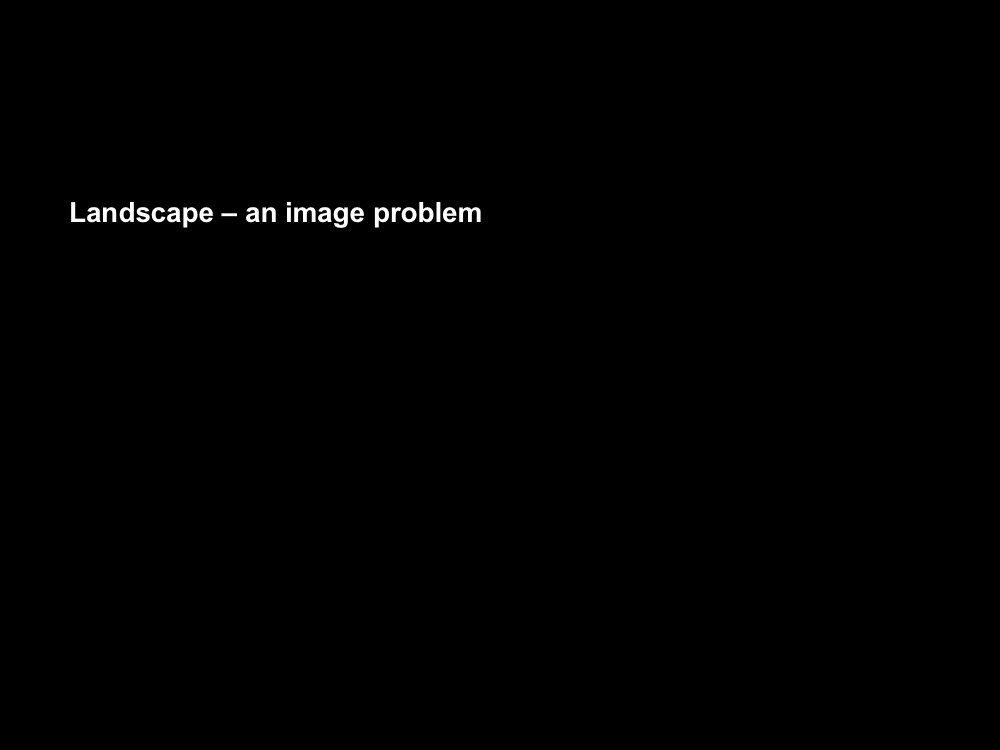
Hugil (2012) describes the ‘will to the disrupt as being the principle source of pata-physical energy.’
Landscape has an image problem.
Part of our over-imaged world – like the body.
But how do we address it?
Gendered, exploitative, culturally ingrained landscape image.
Here we should reiterate a feminist argument that the landscape is gendered by the male gaze (e.g. as Gillian Rose makes in her essay The Landscape, The Gaze and Masculinity, 1993).
The visual sense and image of landscape is constructed and ingrained by predominately the male gaze. Even visual pleasure that informs the default of landscape imagery could be argued to be attributed to the male gaze.
So we have a landscape image defaulting problem that through most approaches it’s difficult to escape from.
Especially the Image in most Climbing Visual Culture
But perhaps controversially I also think climbing (despite its often perceived, masculinity...) could offer a more intimate pansexual embodied possibility of re-imagining the act of climbing as dissolving the object to subject human to landscape relationships.....
But, luckily perhaps...that discussion is beyond the subject of today.
but there is an issue with the historical and contemporary commodified landscape image – which derives from the epic and socially privileged and exclusive Sublime coming from earlier landscape imaging.
Cartesian Split: Our visual cultural relationship with the land is based on 17th and 18th Century philosophies which splits us from the world and prevents us getting beyond the image.
How can that still be the case??? Surely we have moved "on" and exhusted this?
And clearly much of climbing imagery trades on the Kantian Sublime.
Especially in the outdoor industry – where image sells so much falsehood. So that’s a major issue in itself, for lots of reasons..... which we don‘t have time for here.
But essentially the image regime prevents or blocks our real experience, our real adventure – because we’re all striving to become the image.
There’s clear subject of critique: along the lines of Debord – society of the spectacle – passivity of images – mass media and consumerism.
So in an attempt to disrupt the gaze or the organising principles of the image - I worked and climbed for 2 years with John a blind man– John was my camera man…
Lo-fi finger cameras oscillating between working and malfunctioning lead the filmwork.
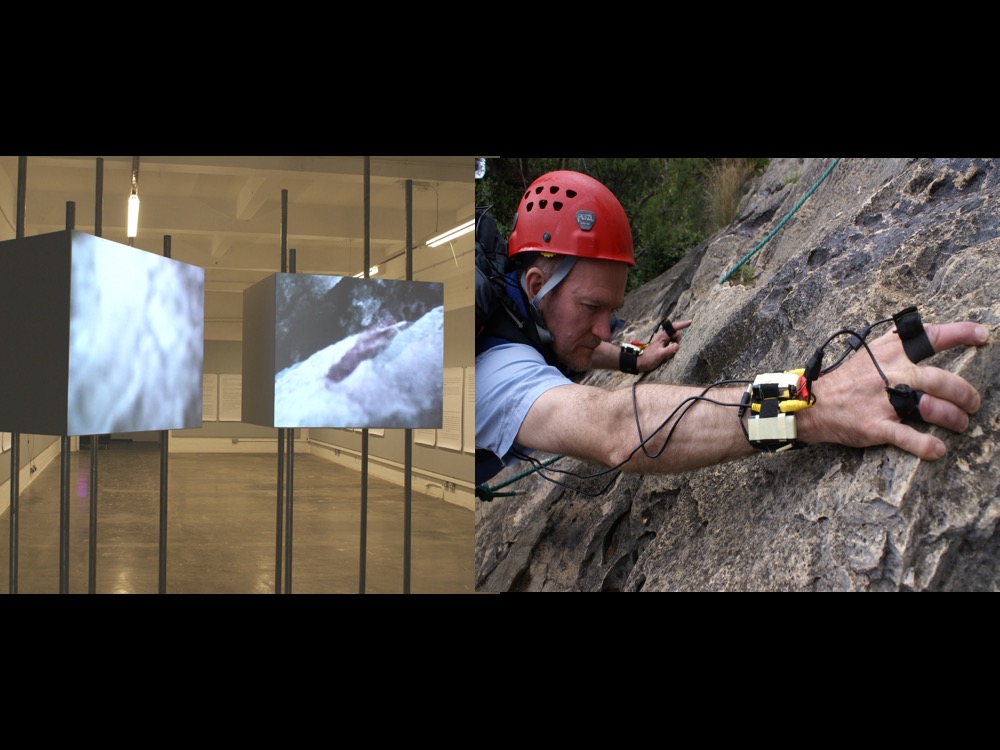
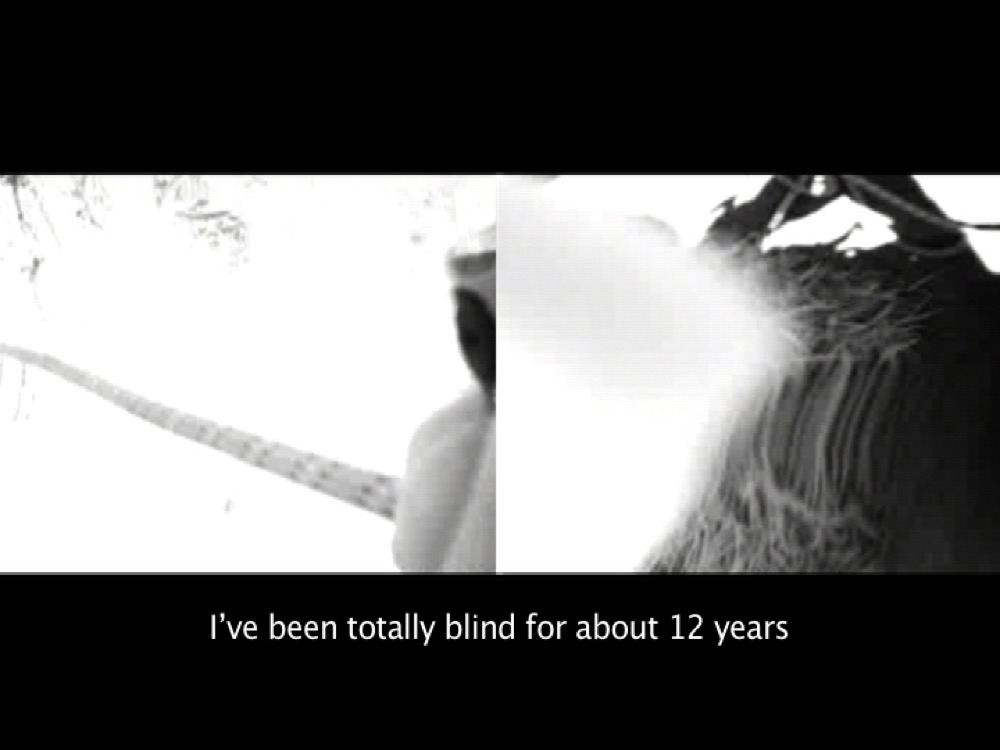
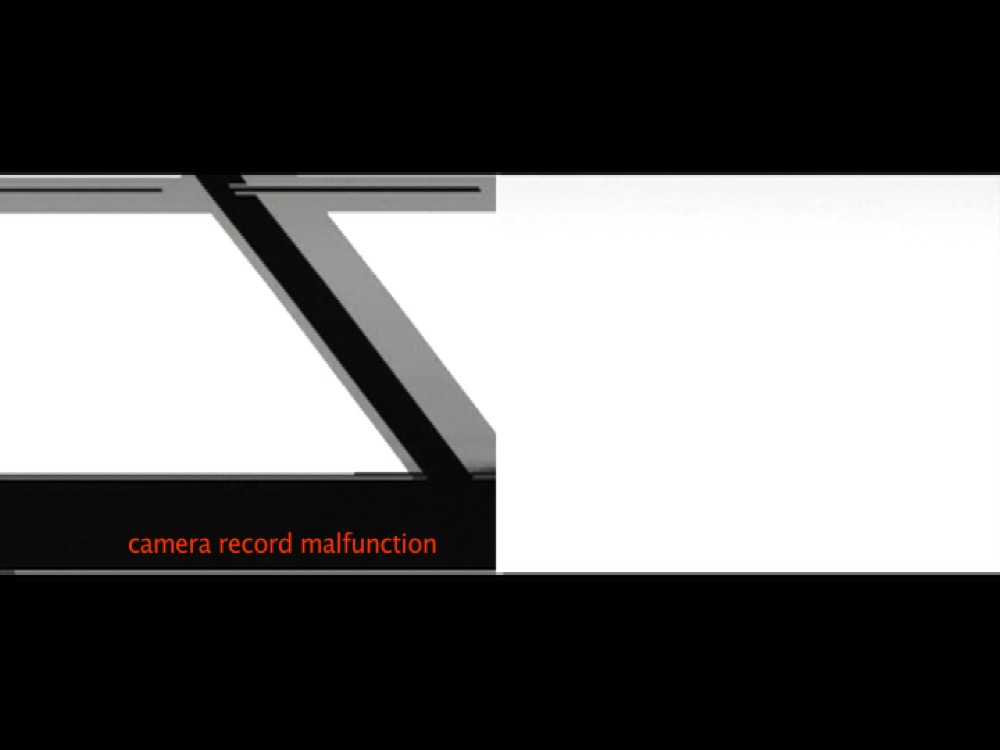
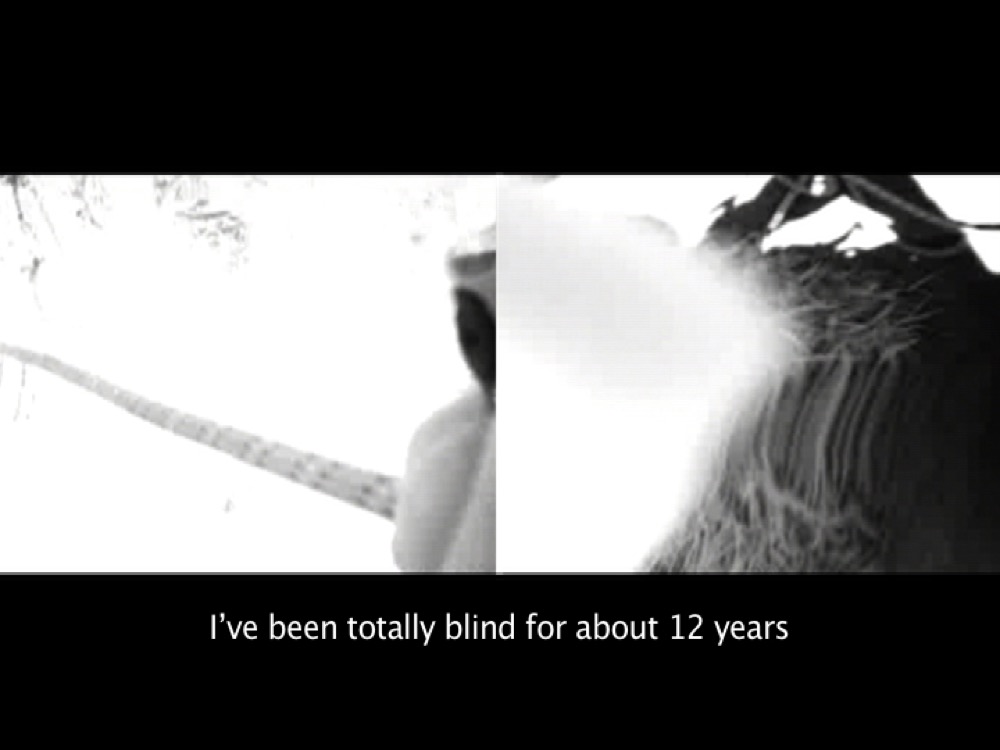
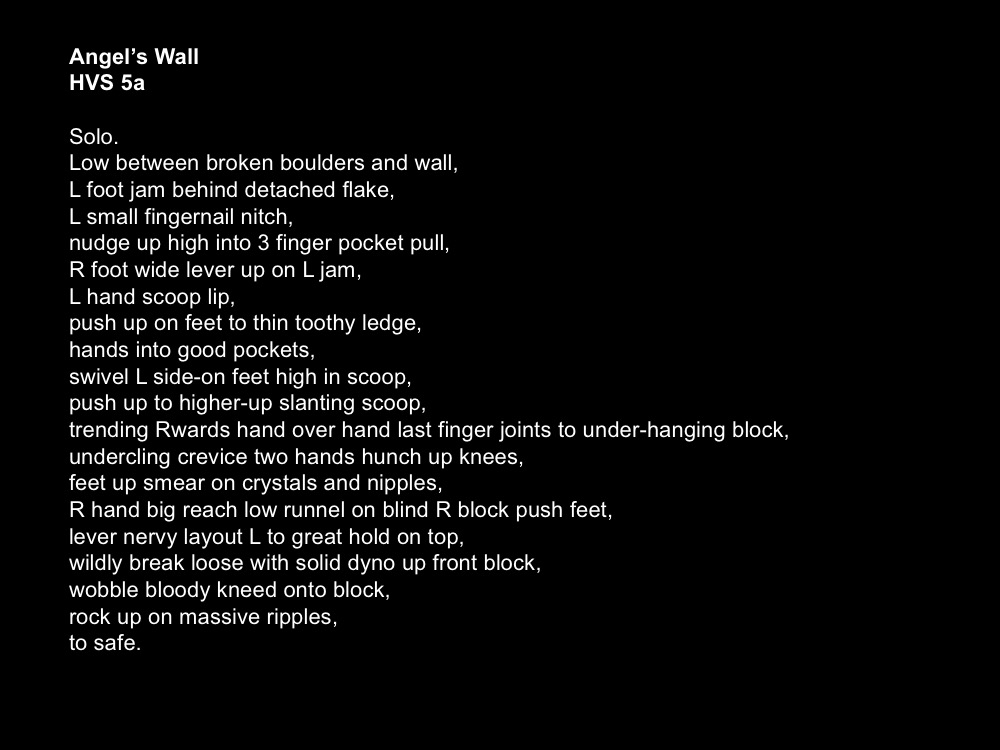
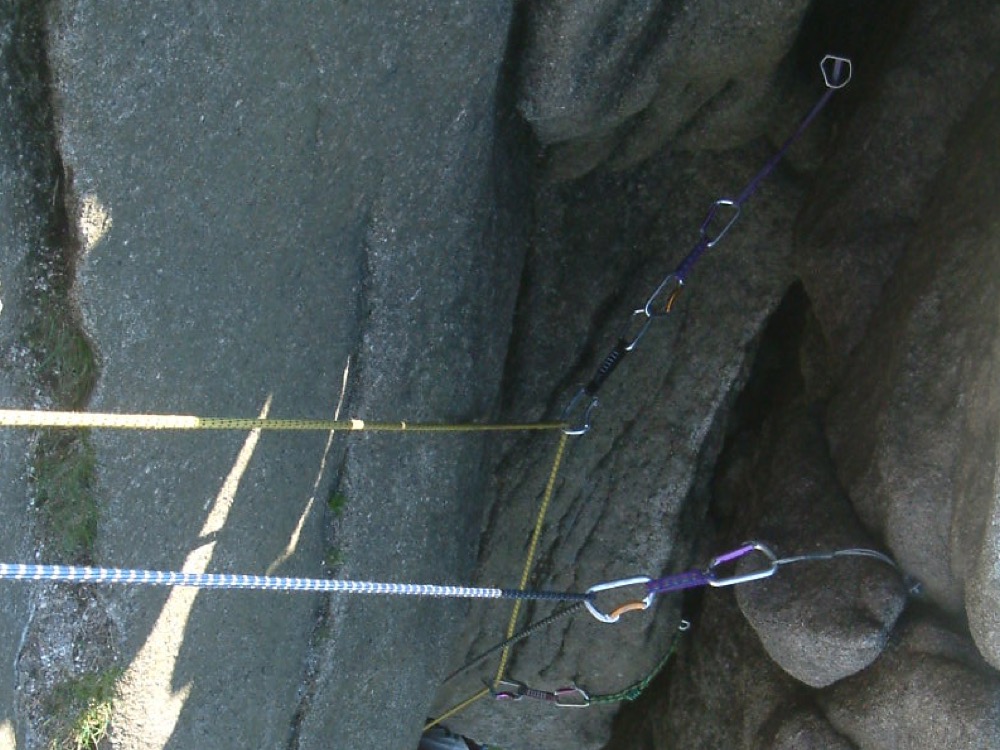
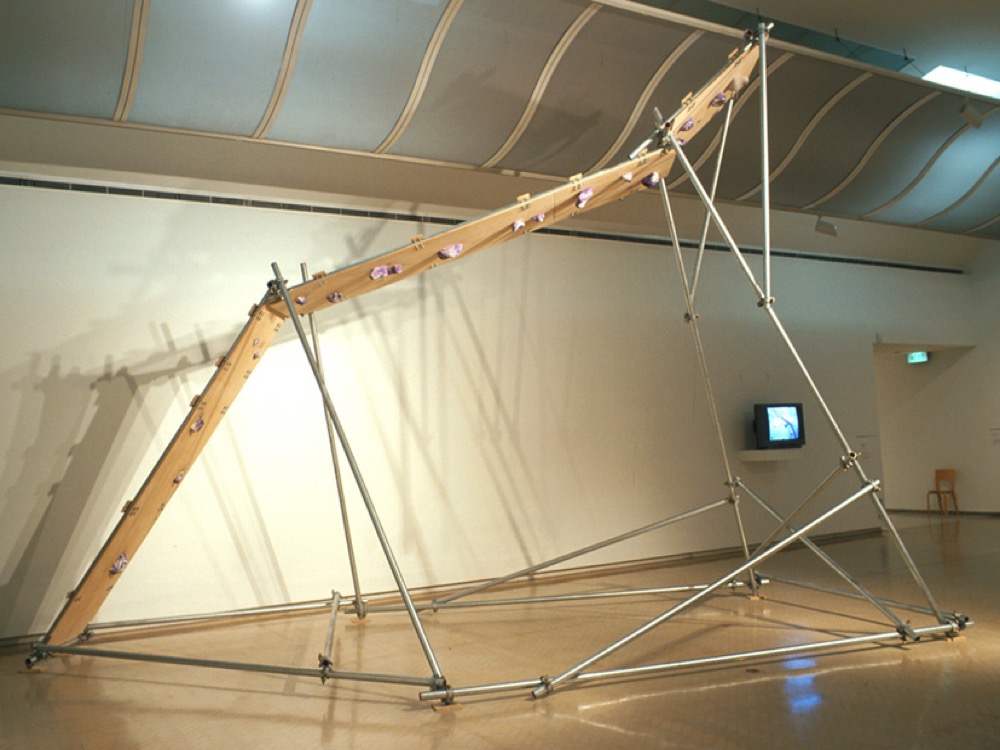
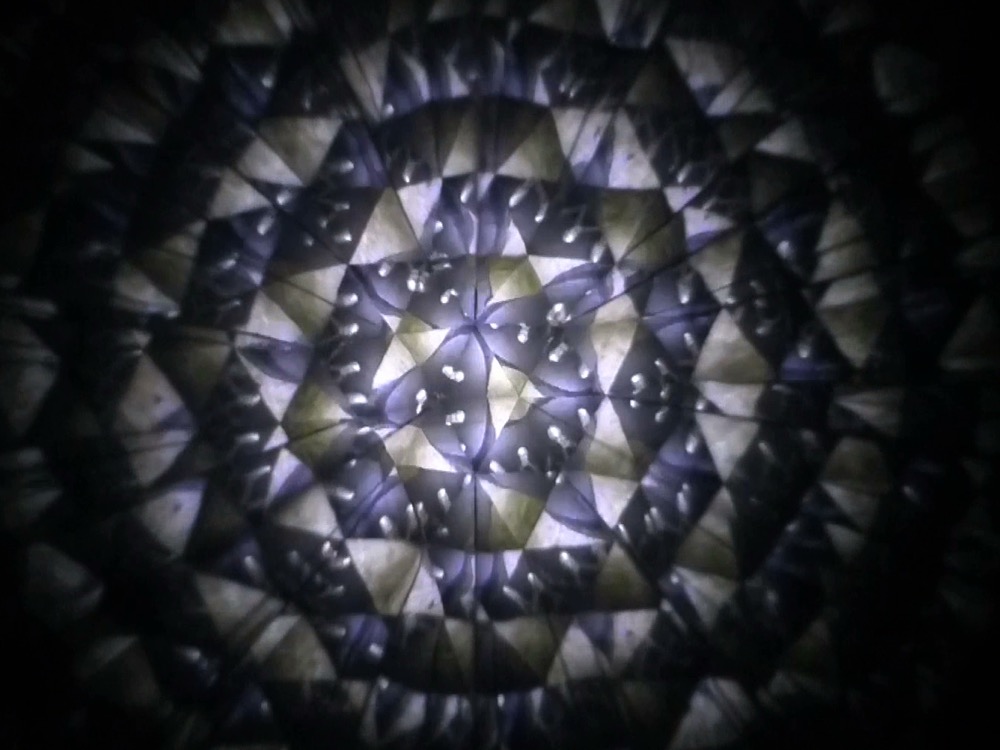
But also ‘the act of actual climbing’ brings something exceptional and non-image based to our experience of landscape.
It’s so hands on, tactile, your face is pressed to the rock – the traditional landscape image is impossible. It is physically and psychologically located. So offers a lot of rich territory for re-thinking landscape in an embodied and less image based way.
ANGELS WALL text
So the embodied nature of Climbing performs an ocular intervention.
The notion of going beyond image and beyond literal description is critical in the sense and process of pata-perceptual synthesis.
Disrupting the landscape image so that you might have art that becomes ‘itself’ and not art that is ‘about’
This is what I call the Post Image Landscape.
WILLFUL IMAGINATION
Syzygy / Antimony / Equivalence (Lateral practice)
Anomaly / Exception (Exceptional, Particular, Singular – specific-ness)
Equivalence / Disruption
(UBU image, need to disrupt or bypass to synthesis a post-image landscape)
So let’s try out some of these ideas:
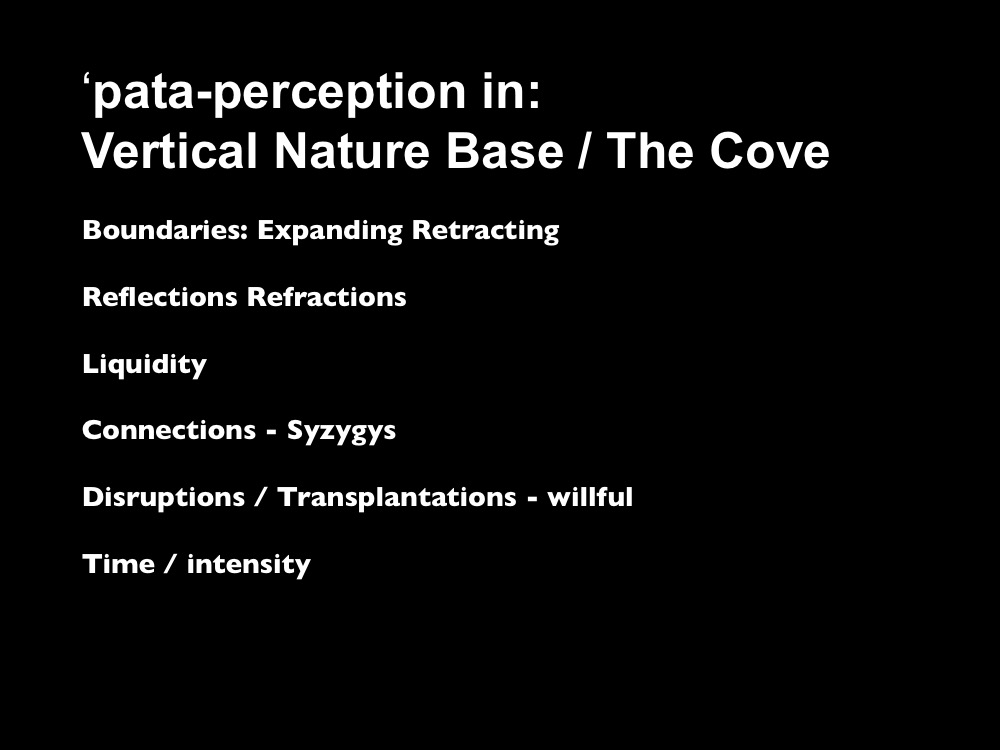
Vertical Nature Base | The COVE
Two joined collaborative projects between myself and Steve Batts
2009 – 2014 with
Echo Echo Dance Theatre Company.
Legacy Trust UK / ACNI funding
NB: Important to say that none of the projects were concerned with pataphysics at the time.
So this is a revisiting of this work to try to identify where pata-perception might have been at play…
This is interesting because a concept in pataphysics is that it has always existed – it is reality – so the project could have been unconsciously pata-physical even without being consciously driven by pataphysical principles.
In a way this is what I’m saying – art or creative endeavour is inherently pataphysical.

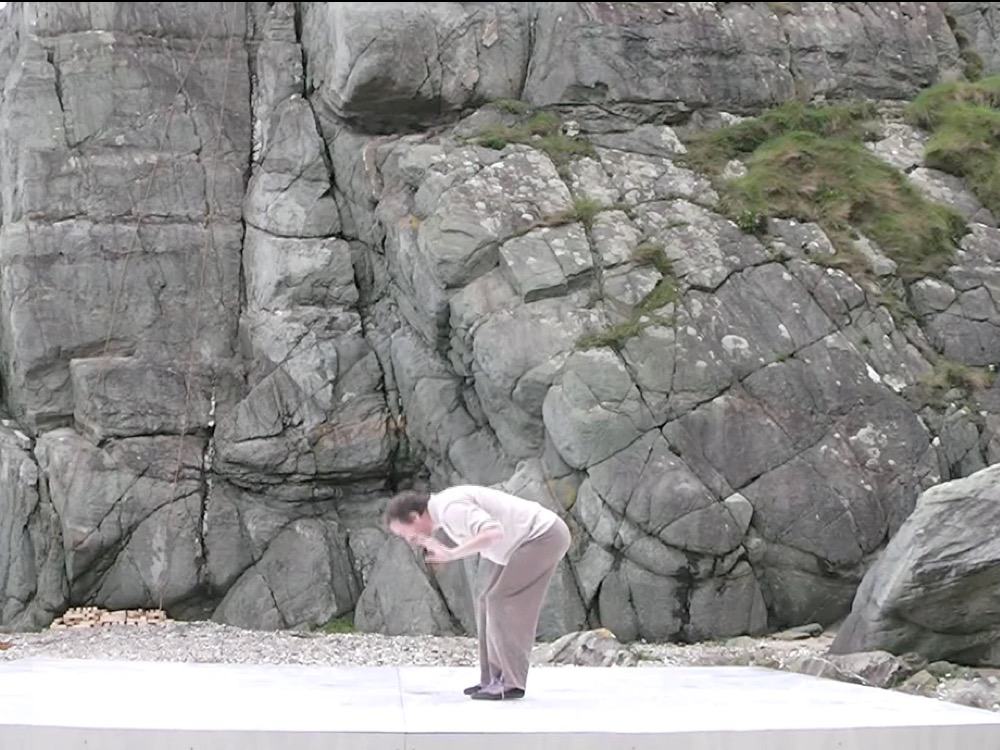
Echo Echo – very special professional contemporary dance theatre organization in Derry.
It has a very open attitude to dance and dancers – and whilst very much cutting edge and contemporary it really avoids many of the cliques and standards of Contemporary Dance.
As you can see – Steve is a normal average shaped 50-something person.
Ok so I will try and identify particular pata-perceptual aspects of these projects in relation to pata-perception but I’ll embed that with an overview of the work.
Project outline: Vertical Nature Base
Wild cove on the North Atlantic Coast in Donegal. 2miles across rocky headland from the nearest road access.
Access through this natural rock arch – magical!
The cove is a really beautiful space – it’s naturally enclosed but open to the sea.
I think in this way it exceptional – it’s both intimate and very wild.
Of course, it’s a coastal edge – so it’s 50% water 50% land. Not so dry land usually. It also rains a lot. So, there’s a blurring of wet and dry, solid and liquid, land and water.
Water, reflection, translucency liquidity, against rocks’ hard opacity and solidity.
And the rock itself shows traces of it’s liquidity o rinteraction with water.
The edge between these two elements is really interesting.
There’s a plethora of natural features, rocks, plants, fauna, sealife – seals.
Pragmatically adapting to the environment – finding an accommodation if you like. Washing, Fire, Safety lines.
A lot of climbing...
Remember the ideas about the Exceptional – the particular Exceptional landscape. So the landscape seeps in over time and over intensity.
EQUIVALENCE – no activity carried more significance than others. Climbing was serious in terms of intensity - but it was not prioritised over other ways of spending time
Then developed a public residential aspect of camping for around three weeks, where periods invited the general public to join and camp and climb with us. Some camped, some just visited for the day. Roughly 60 people came – with many camping over a few days.
So the first aspect I want to run through the filter of pata-perception is:
THE PLATFORM
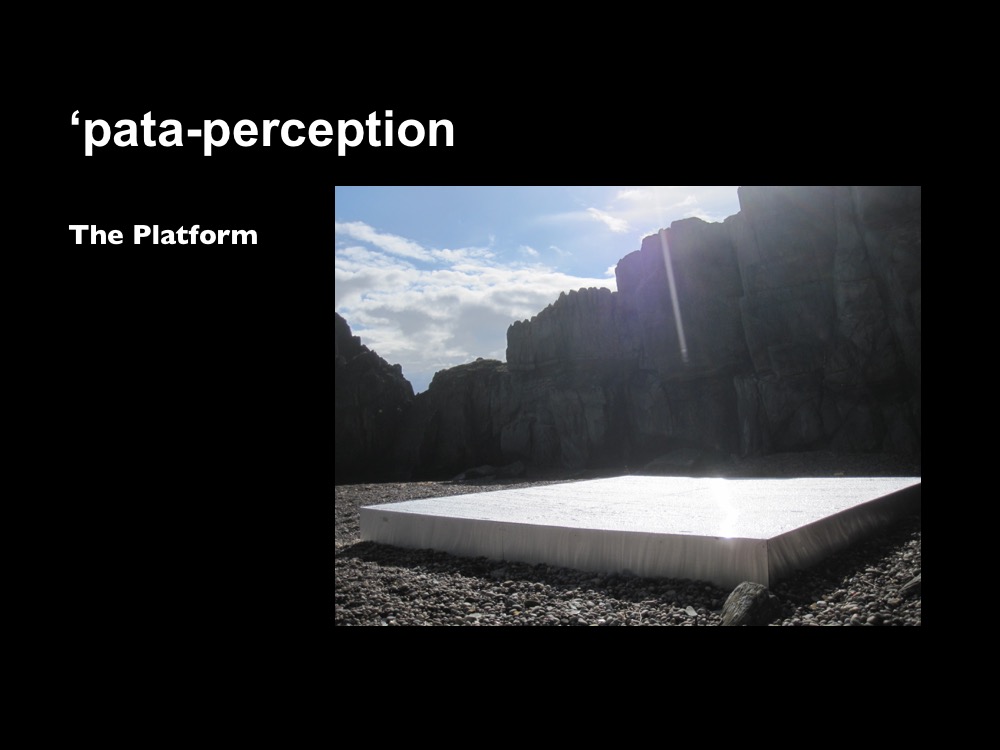
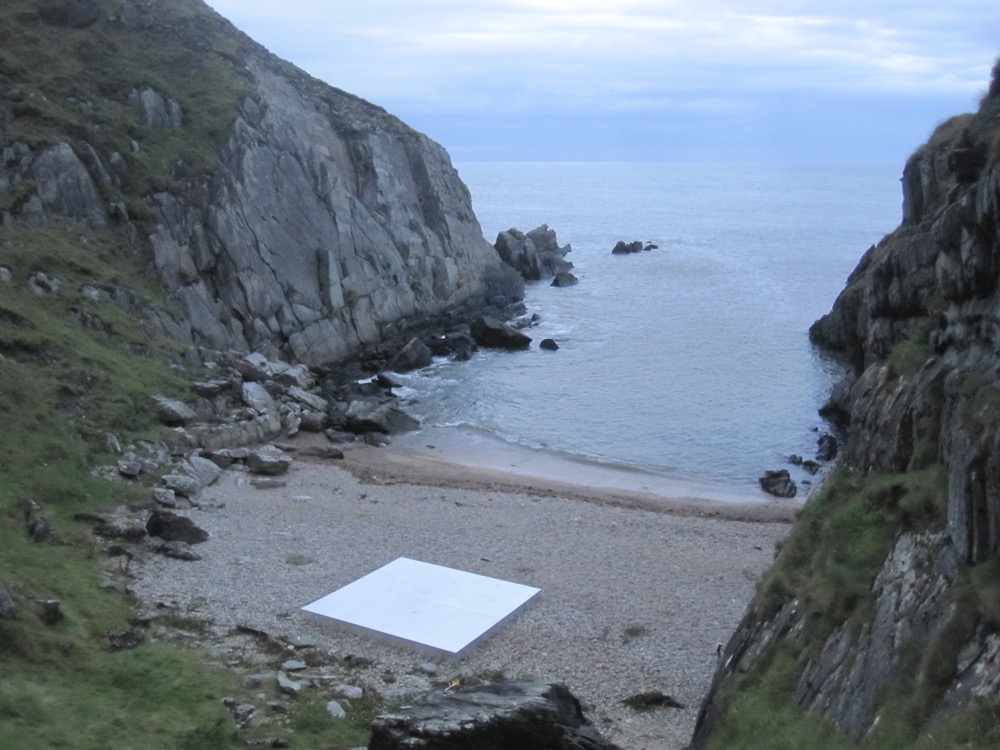
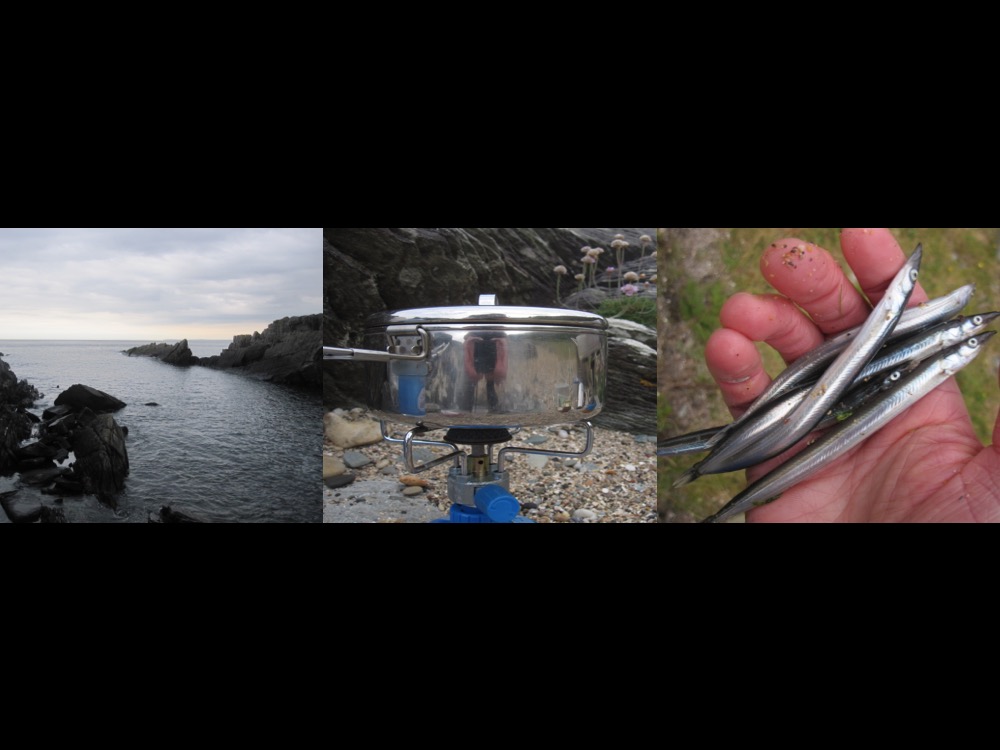
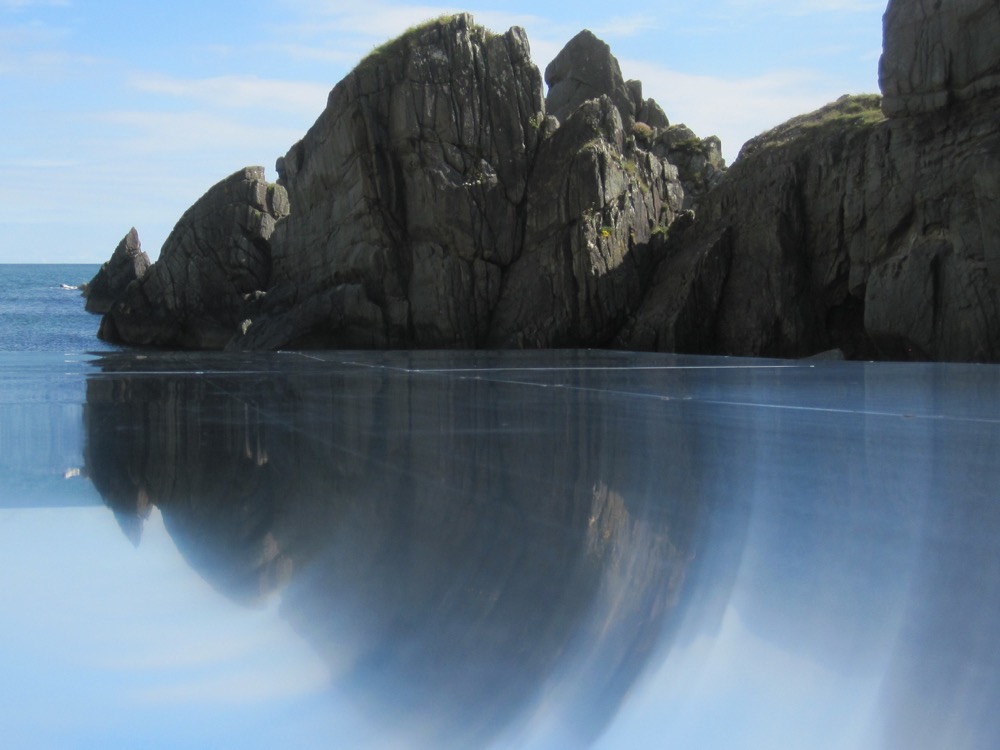
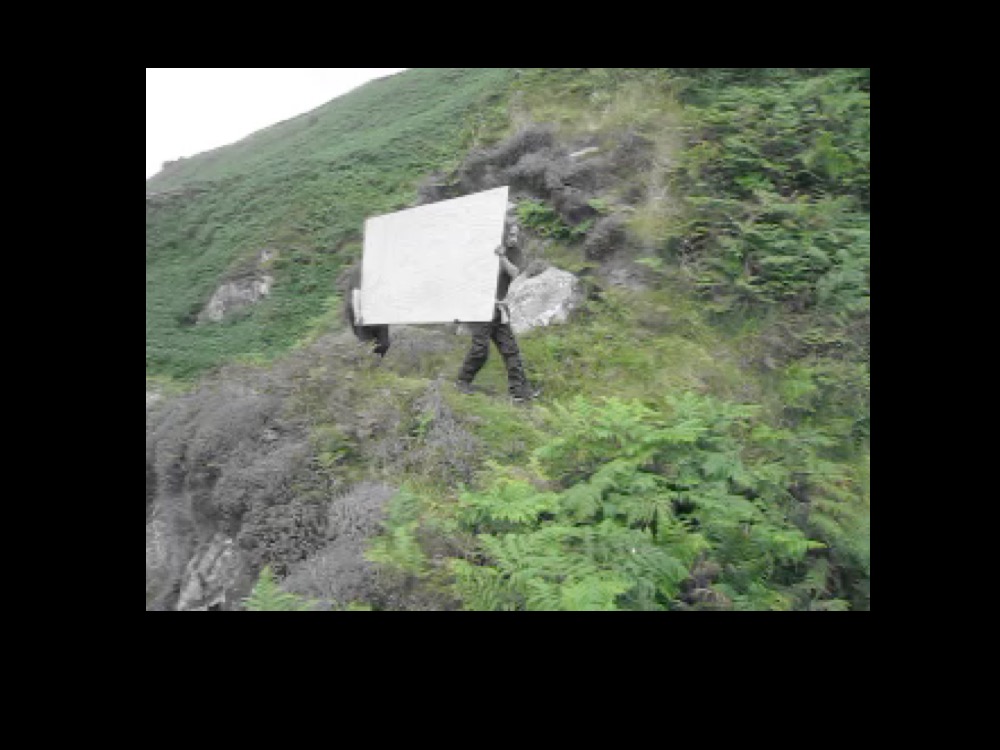
Why did I do this?
ANOMALY (EXCEPTION)
Wilful act of disruption in regard what ought to be here – the natural environment.
ANTIMONY (A CONTRADICTION)
But yet it was a response to the place...in SYZYGY
Aligning three aspects – water reflections, metal shiny human equipment, surfaces of these fish
= SYZYGY (coming together of DISPARATE entities – unpredicted significances)
Things that offer a visual otherness- another space.
The reflection. OUT OF PLACE but IN PLACE
UBU – IMAGE DISRUPTION
Dissolve and distort the image;
Reflecting, doubling, blurring the space
Need to disrupt the space – an inverse empathy one visitor critically told me….
Wilful disruption: 2 days of carrying materials over rocky headlands....very wilful.
It became a frame, stage, mirror and lens which intervened in the image and framing of much of what we did.
In Summary:
The second aspect I want to run through the filter of pata-perception is:
Steve Batts' process of Embodying Landscape:
Here the idea of UBU IMAGE is key.
The process begins with spending time doing things - doing stuff – climbing and closely exploring the environment.
Then through a workshop process of embodiment – where instead of describing the landscape or ones actions the body process is one of being in the landscape.
Meditation, memory, desire, resonances.
The basic principle is to focus on the memory of a section of landscape you have explored and closely experienced – and imagine a 3 dimensional frame of 3 or 4 metres of rock or boulder, beach, or whatever.
So this is a particular – not general focus – an EXCEPTIONAL focus.
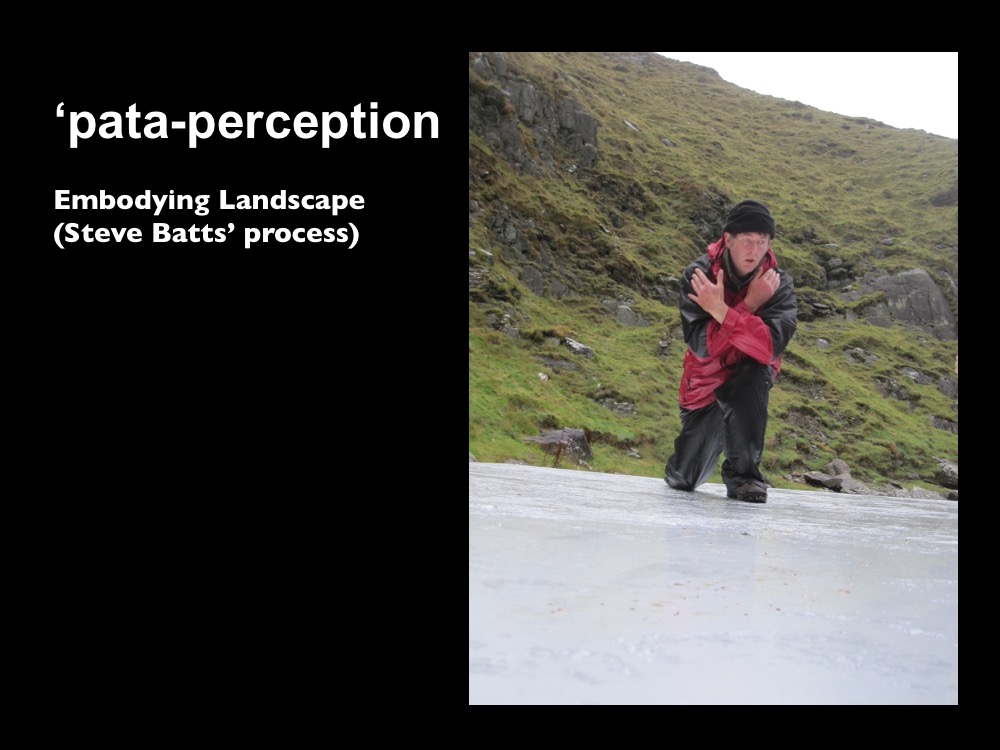
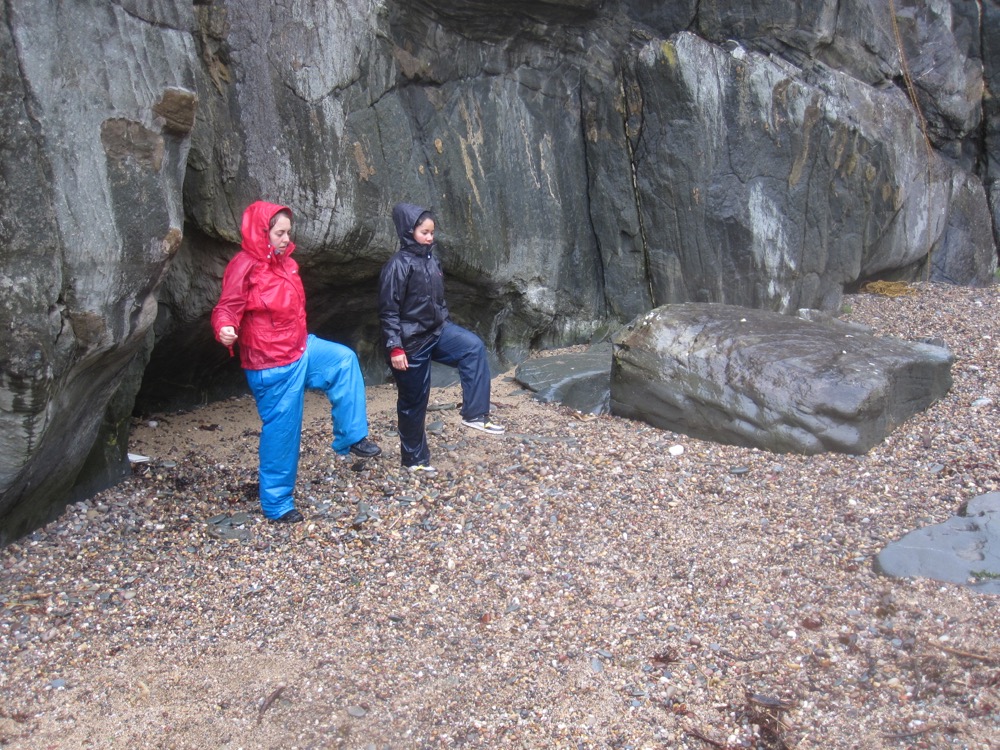
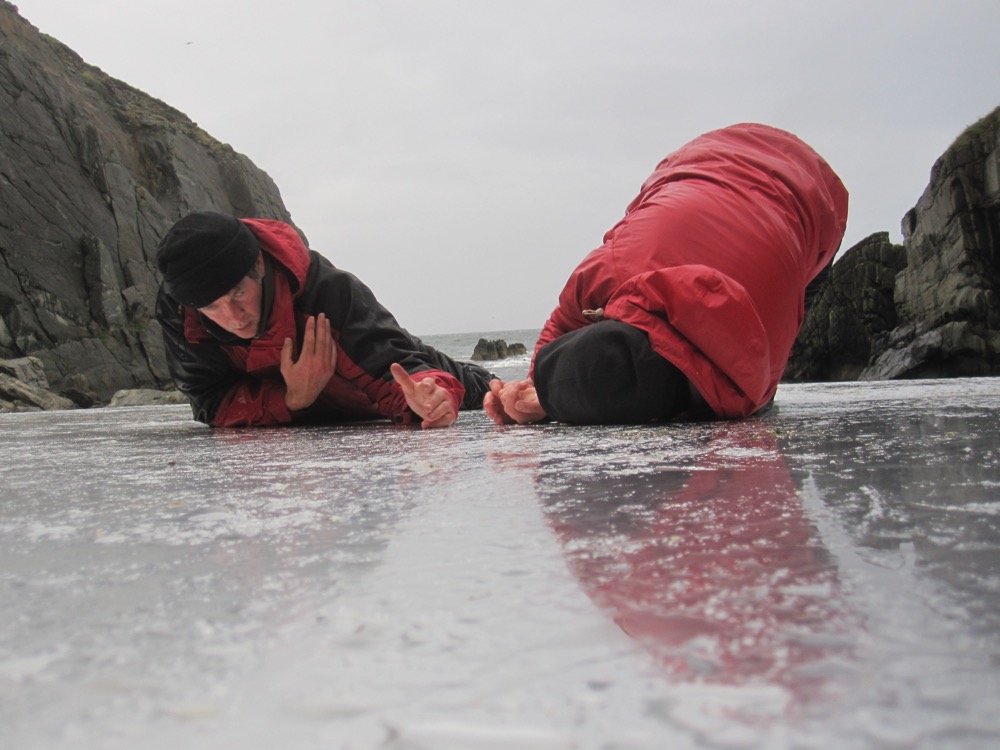
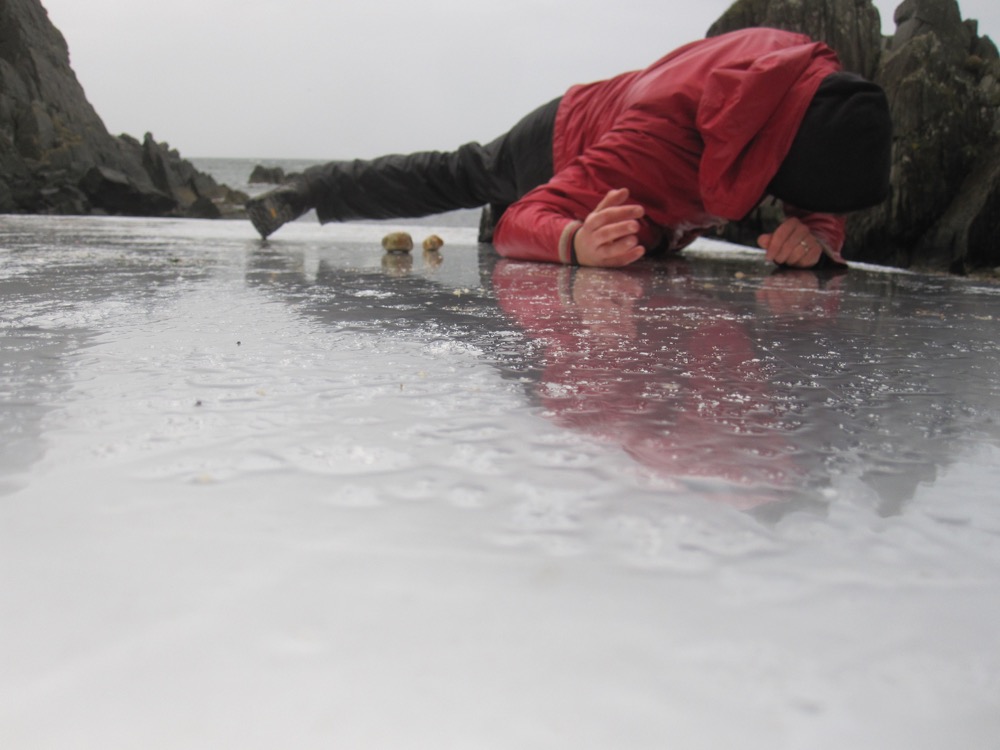
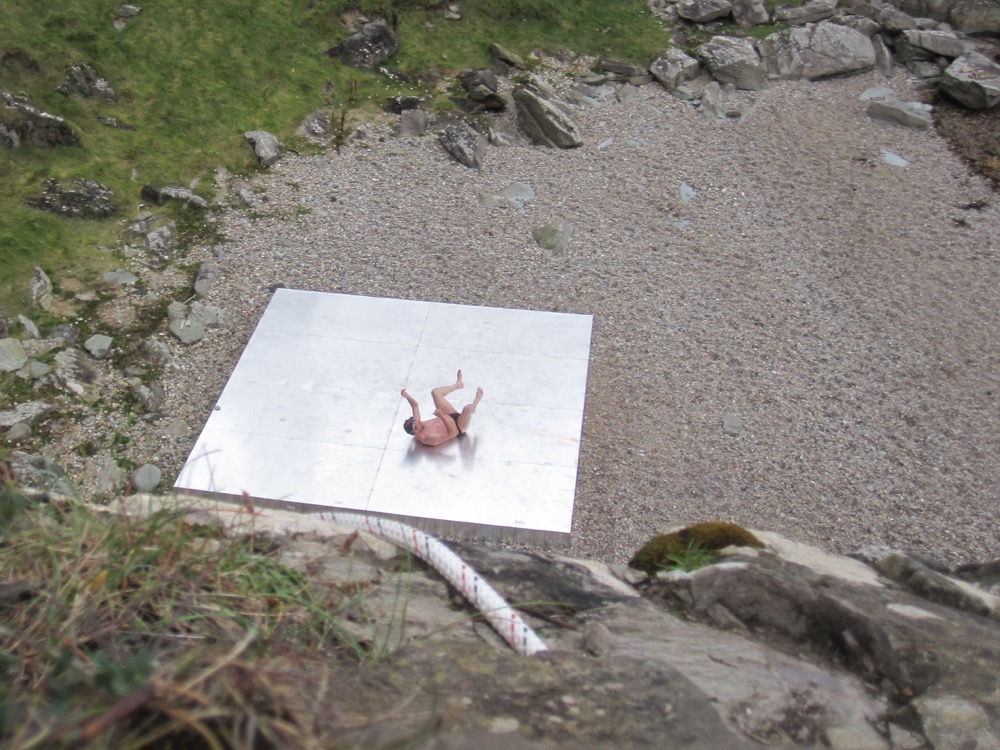
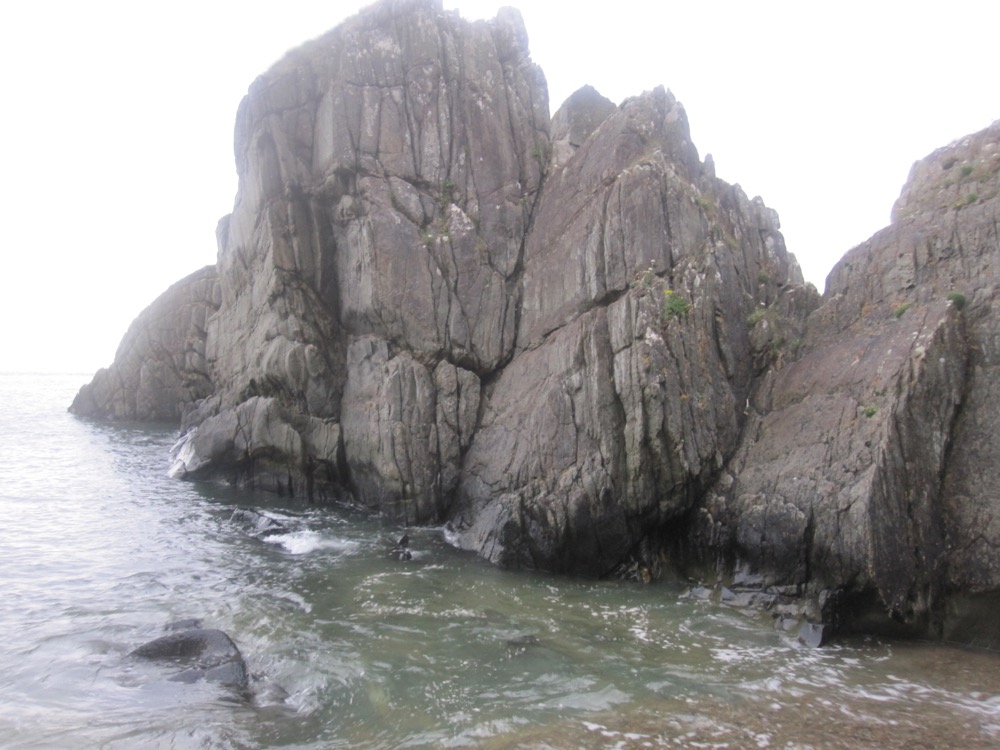
Then a trigger technique was introduced then in imagining a shift of agency and scale – where you were able to expand or shrink that chosen frame of landscape – so could expand a crack so that you could disappear into it or you might be able shift the X / Y axis at will with you body actions.
This clearly echoes Jarry’s Faustrol Smaller than Faustrol - above.
Then this becomes a realm of re-exploring and imagining - drawing from what you’d just actually experienced in a way which disrupts the tendency to be literal and general (in describing a climbing move or how the landscape looks) and generates new possibilities and alternative solutions (THE SCIENCE OF IMAGINARY SOLUTIONS).
So that is an example of an UBU IMAGE DISRUPTION
This brings an imaginative porosity where boundaries might blur between body, skin, water, rock – object and subject. LATERALITY
It’s clearly potentially quite surreal but a very grounded surreal and a process of inquiry.
WILFUL
I think this imaginative versioning wills the body into movements– a response to what’s necessary for the imaginative task as opposed to externally objectifying what the movements were, or the landscape looked like.
I think this is in climbing too – it’s based on a task at hand (however useless) and the imaginative process of mentally projecting upwards and the volition of moving upwards is what shapes or necessitate the movement.
I was too busy climbing to take part in all the embodiment workshops – but in my climbing I made several new routes – which might be understood as a result of a similar embodiment process.
So there are the two aspects I wanted to run through the filter of pata-perception:
The Platform
Embodying Landscape
Just to wrap up and fill you in as to where this went:
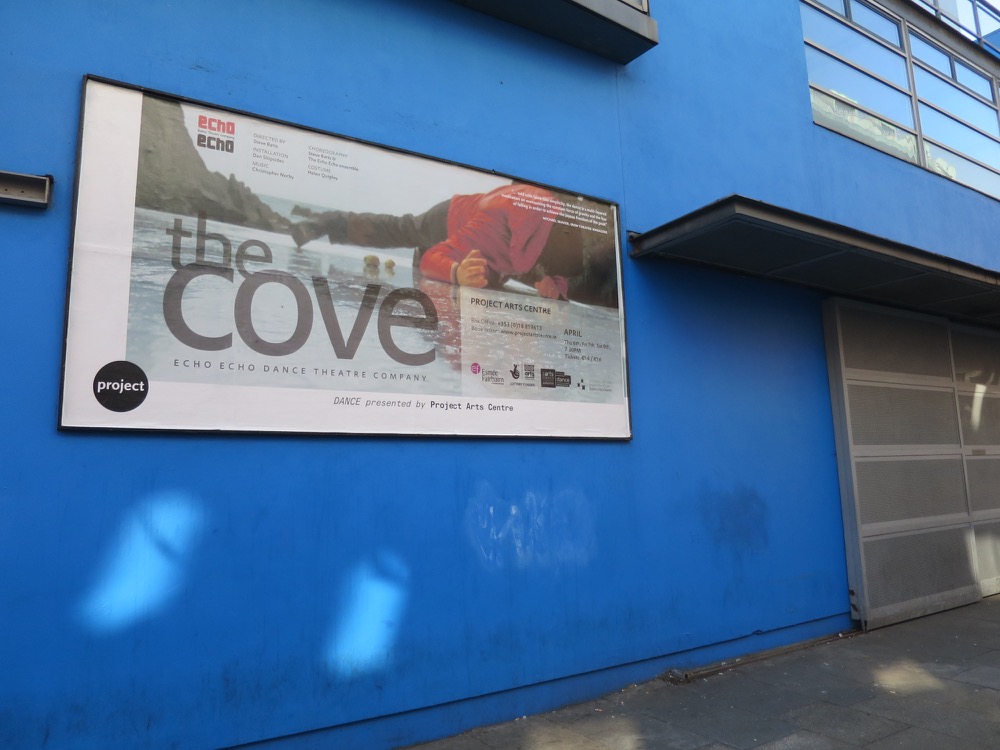
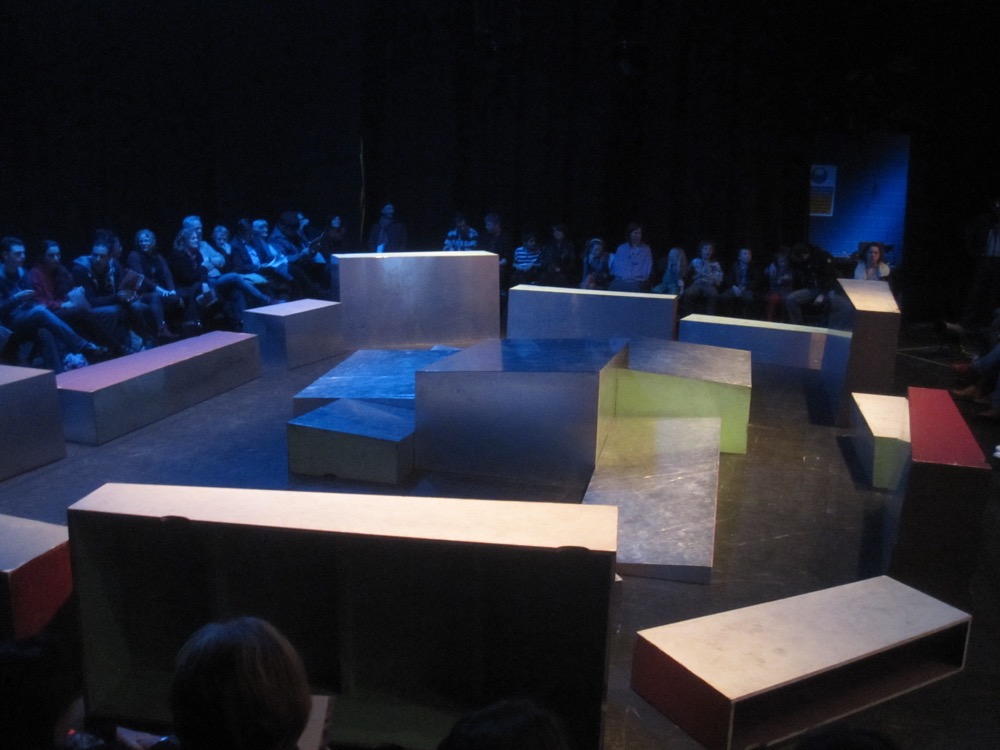
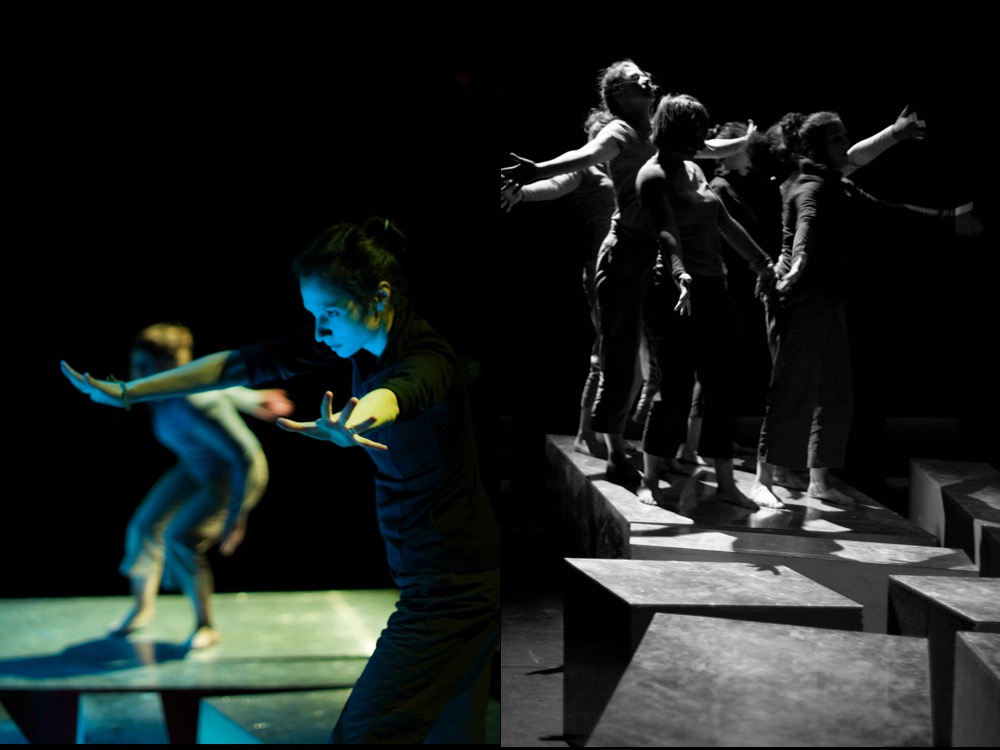
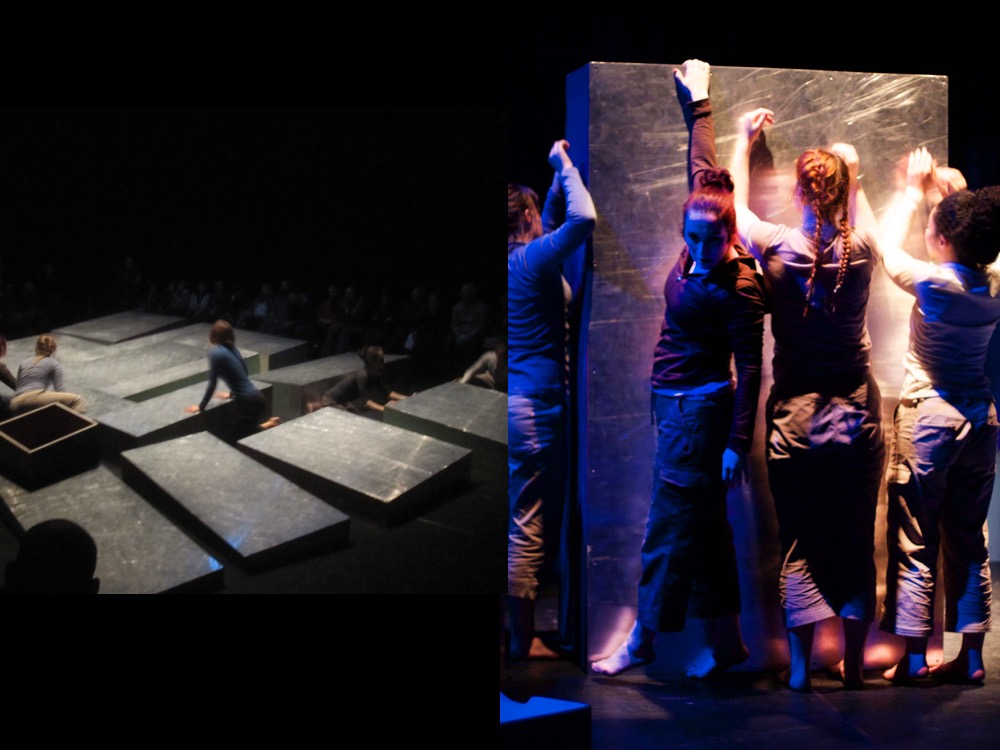
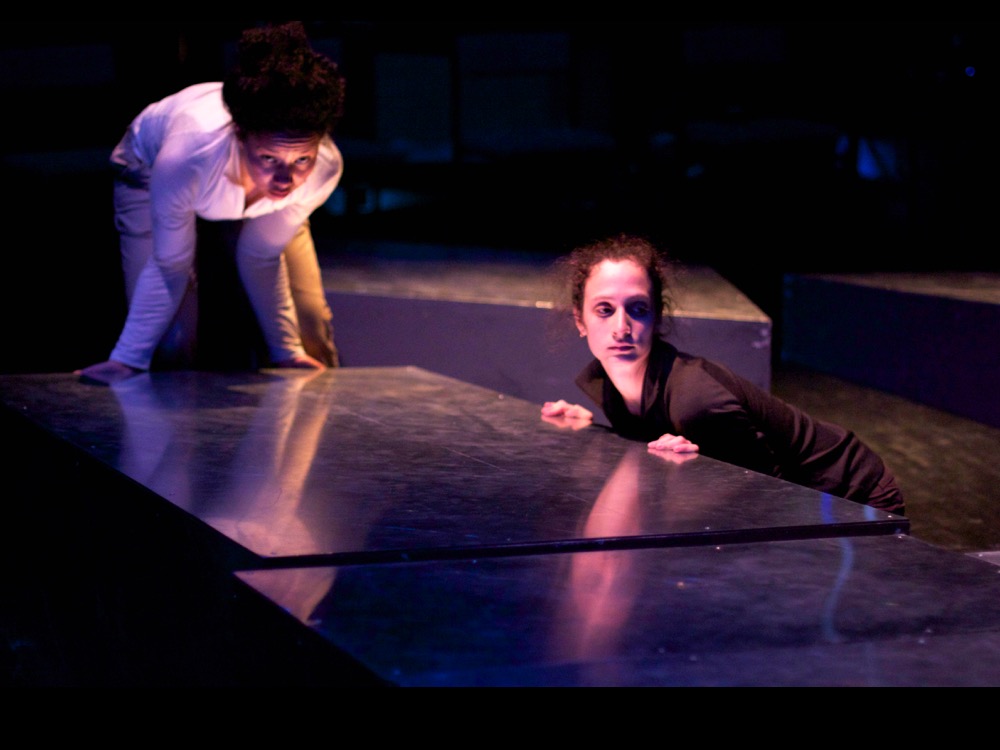
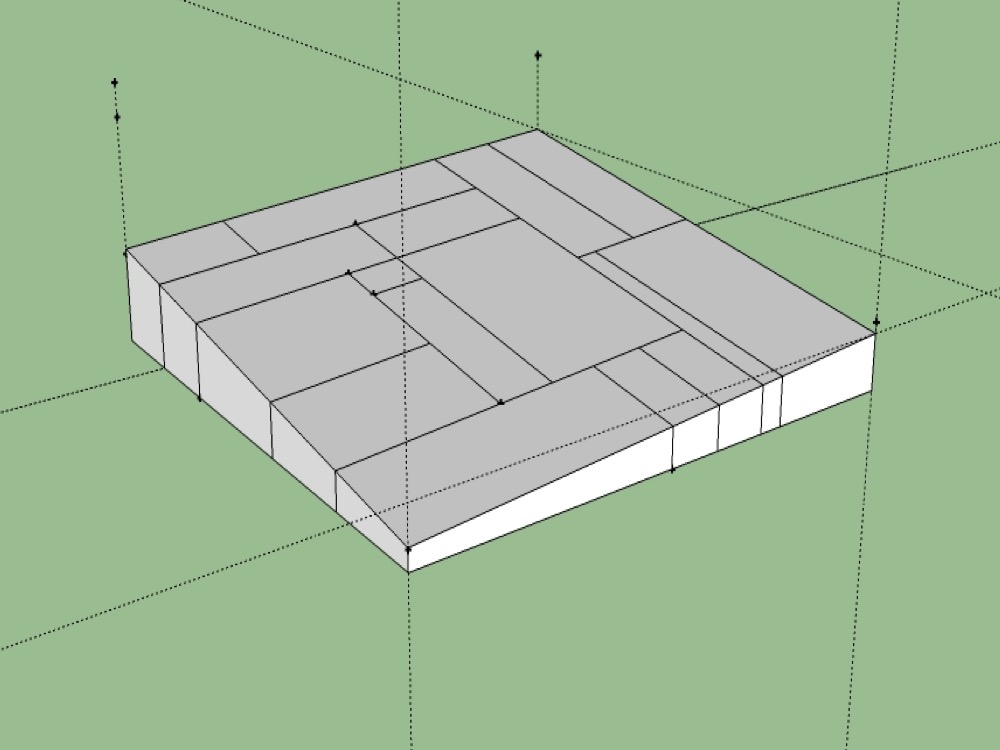
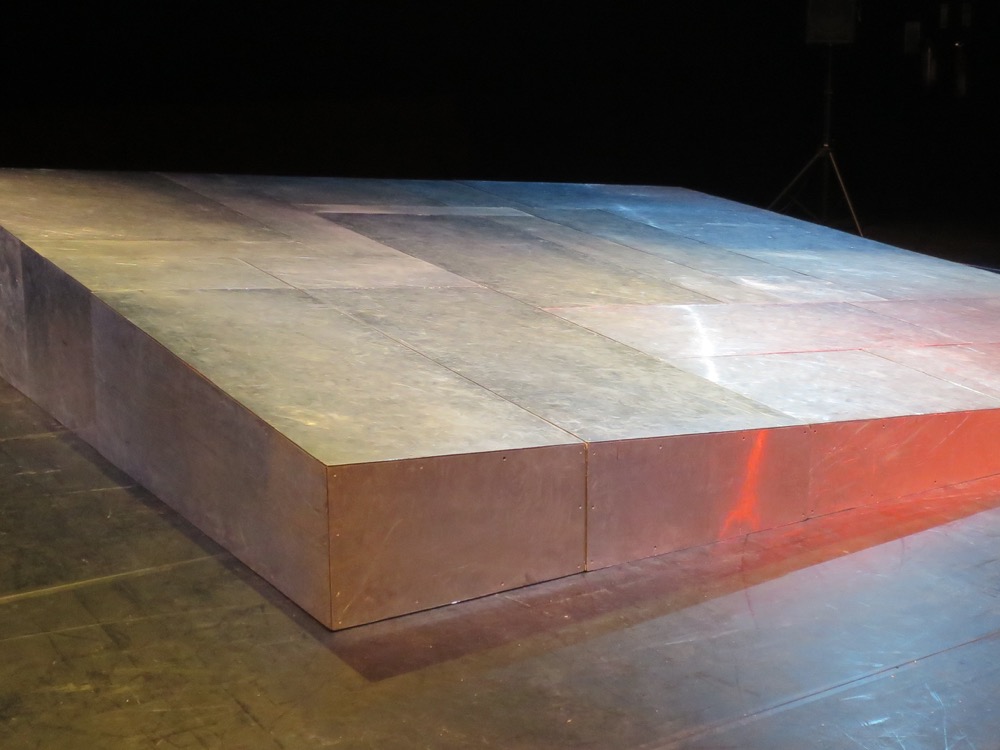
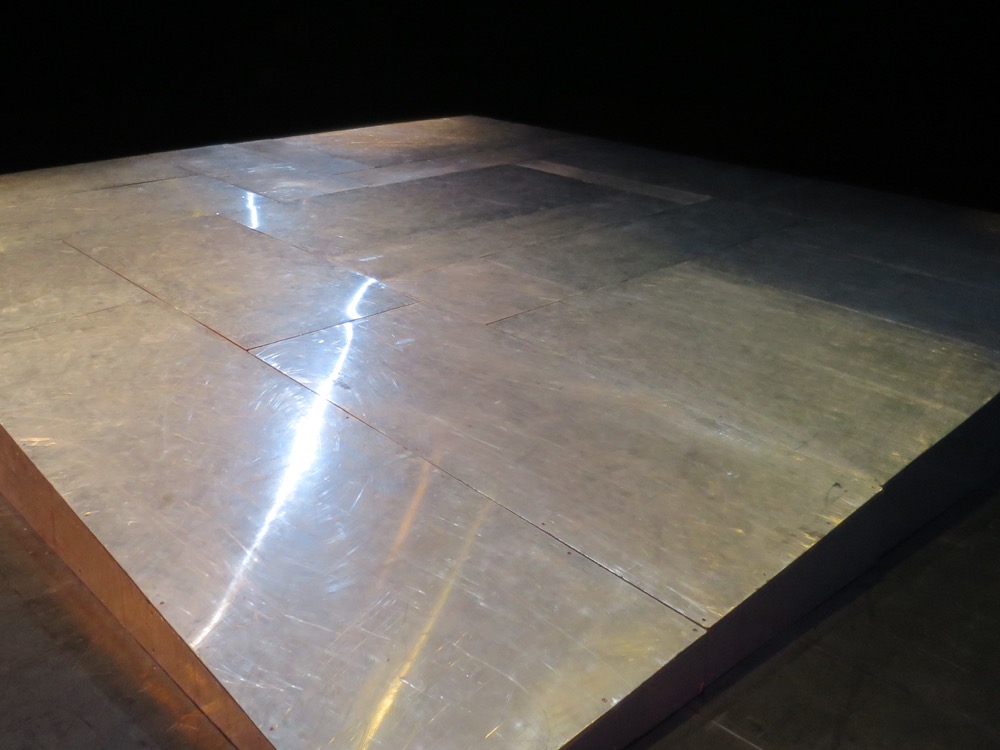
In Summary:
Here are some of the pata-perceptual aspects which I think help understand some artist methods – or at least find precedent, succour and a terminology.
Which I think are useful to bring to the process and genres of art and landscape.
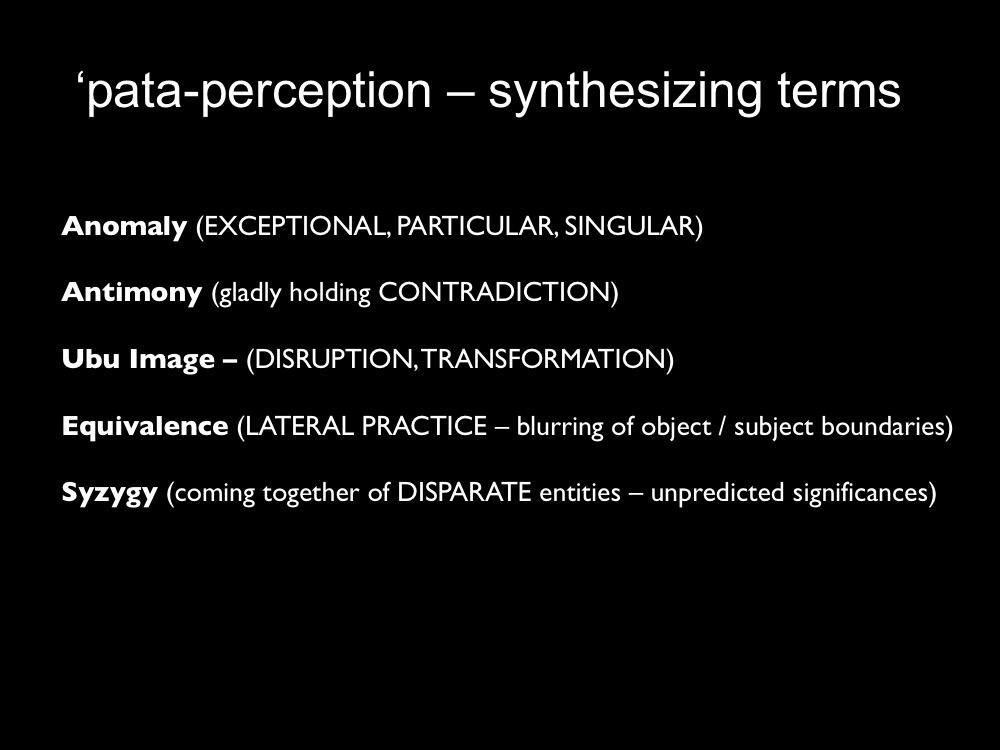
Geography must become beautiful, wherein the entirety of its embrace is aligned to emancipation. Springer 2016
